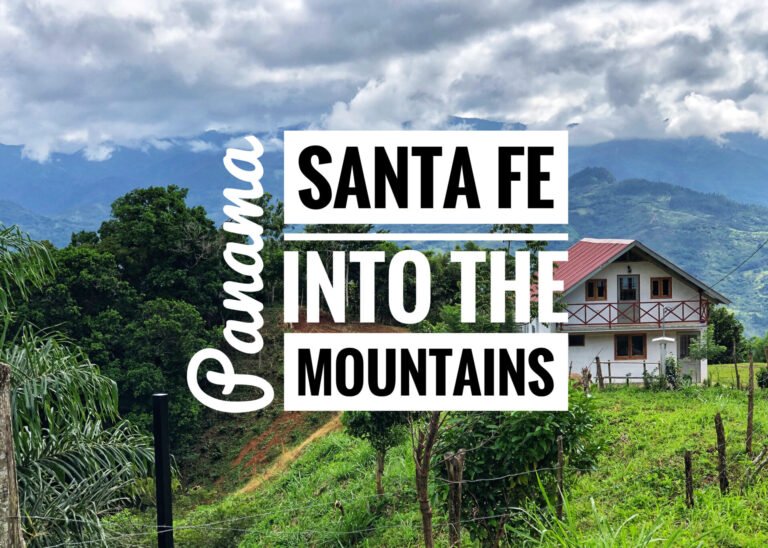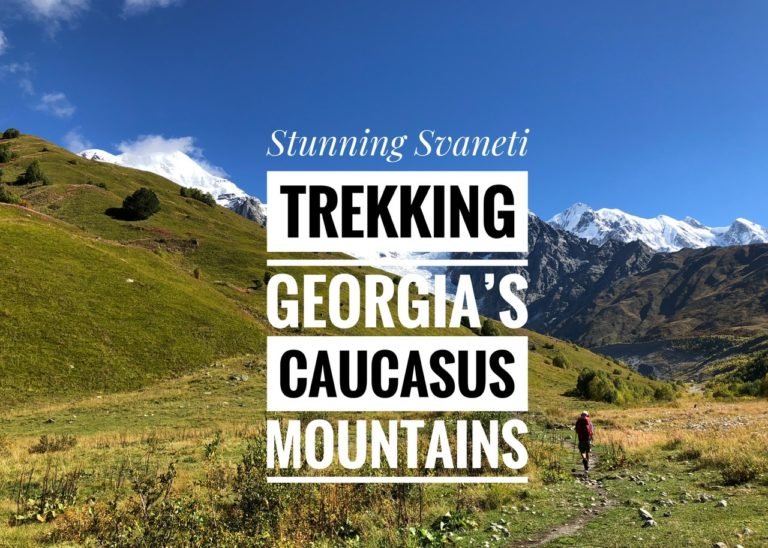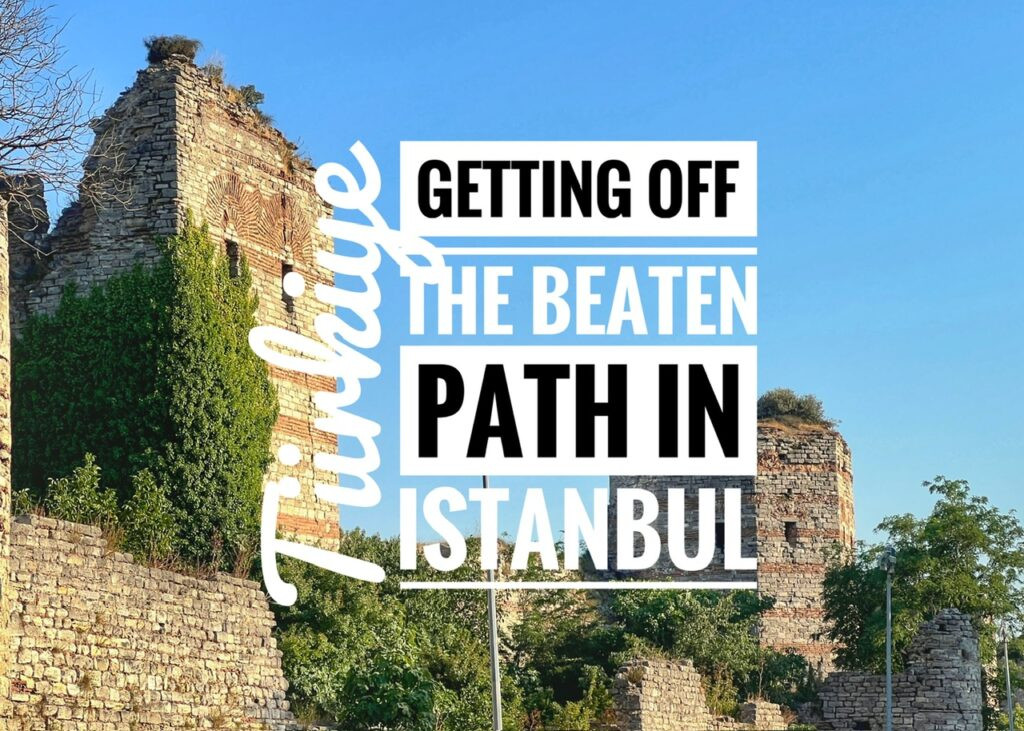
From Bulgaria to Istanbul…not as simple as it seems!
Oh wow! After three months in three different Bulgarian cities, slapping on our backpacks and going full throttle with a 15-hour travel day suddenly felt like….well….travel again! Naturally… it was not supposed to be a 15-hour day relocating from the southeast city of Sliven to Istanbul, but thanks to Bulgarian trains…followed by Bulgarian buses…we were delayed for more than 4 hours, giving us no choice but to toss our original nicely packaged plan out the window.
Speaking of windows, thanks to all this, we also found ourselves crossing into Turkiye a mere 4 hours before our 90-day Schengen window closed…the doomsday deadline when we had to scoot out of Europe. (Yes, Bulgaria and Romania joined Schengen last year, in case you missed the memo!)
Ah yes…how adaptability, patience, positivity…and having something soft to whip out and sit on…must prevail in the life of a nomad…
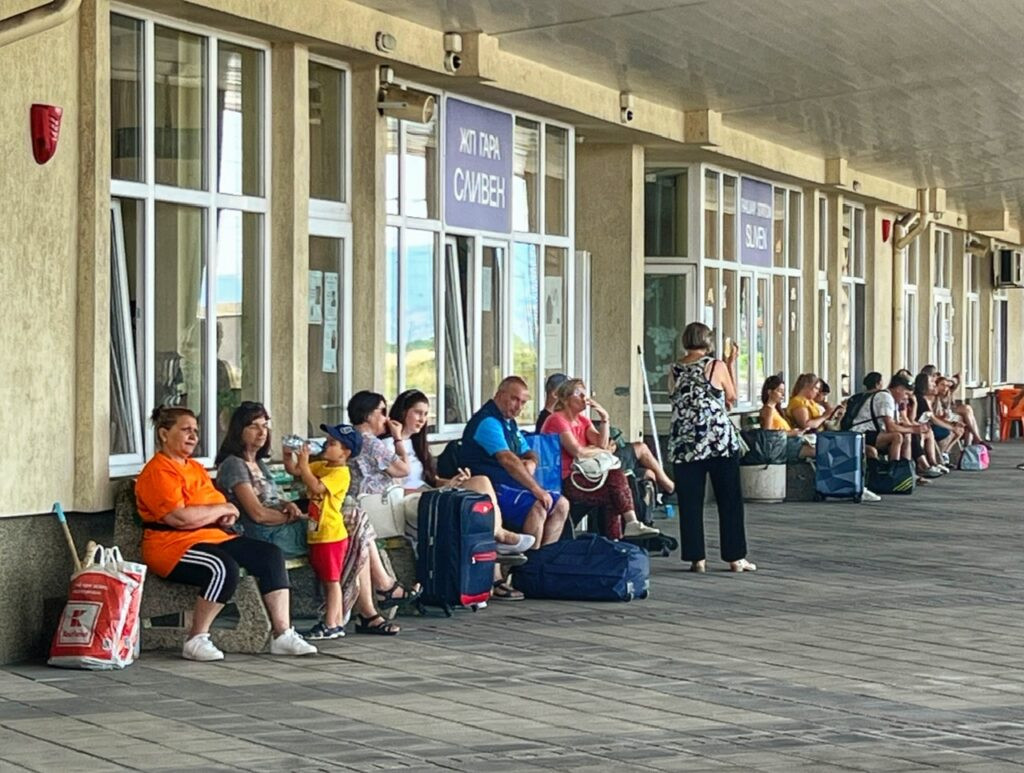
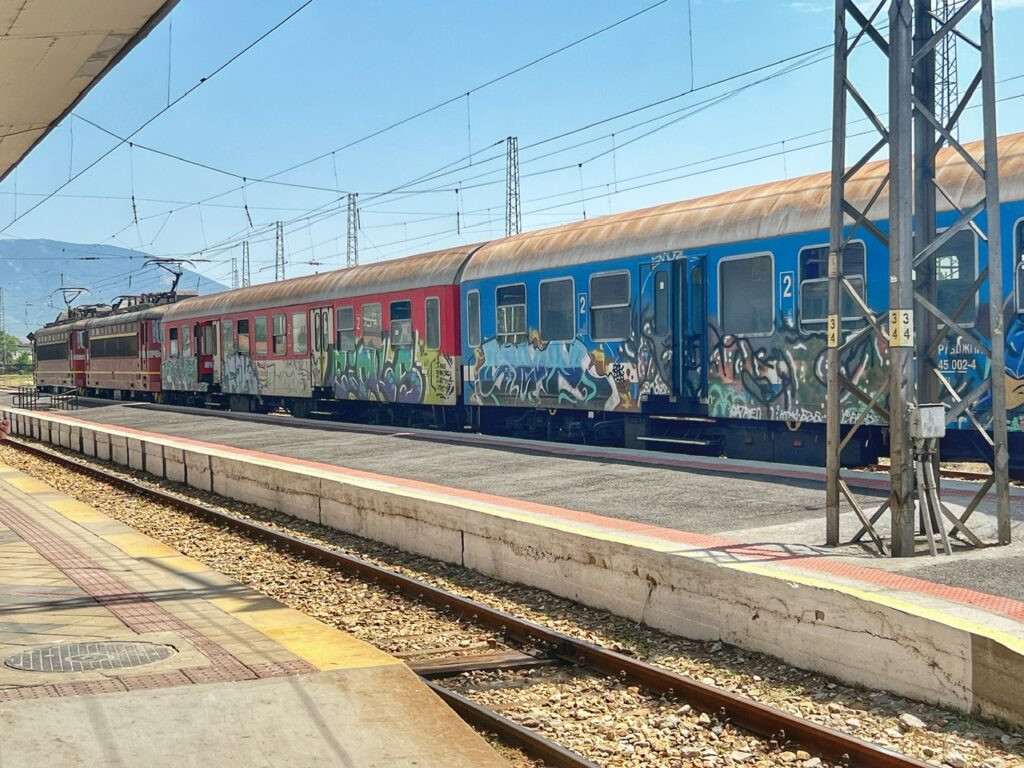
This all began at 9:45 a.m. when we arrived to the Sliven train station and got an angry error message from the ticket robot that tickets could not be purchased for the 10:30 train, which we intended to first to take to the Black Sea bastion of Burgas for our 12:30 bus.
Thus, we turned to the lady in the window, who was conveniently open, and kind with our Bulglish, speaking quite slowly to try and tell us that the only train available was at 12:25 p.m.
So, begrudgingly, because what choice did we have, we bought tickets for this train ($11.50 for two) and prepared to wait nearly 3 hours. What we didn’t understand is WHY at 10:30, we began hearing announcements for the train to Burgas…or was it FROM Burgas?! But the train was pointing eastward…so it had to be going TO Burgas?! Wtf?
After much confusion and questioning, we realized that the 10:30 train was in fact still scheduled, but completely full. This is definitely the first time this has happened to us in Bulgaria, so we learned the hard lesson to buy our tickets in advance, especially if it’s summertime and pointing toward the sea. (For the record, we did try and purchase tickets several times on the Bulgarian Railways website, but our credit card(s) would unfortunately not work.)
As much as we love it, nothing is ever perfectly efficient in this country. Haha.
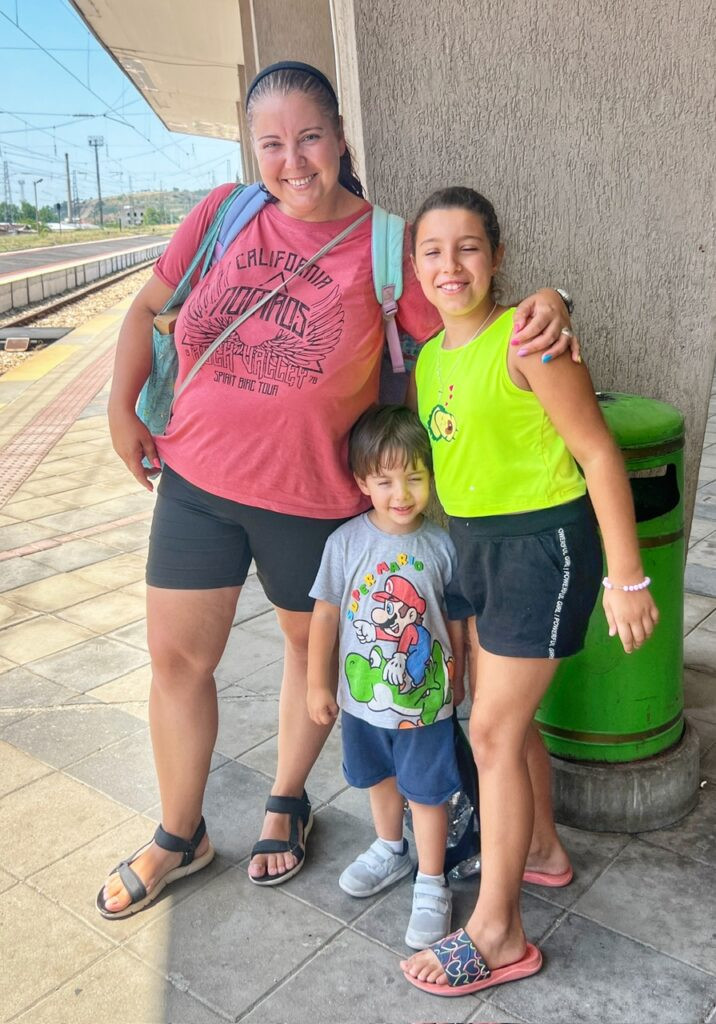
Fortunately, we found ways to entertain ourselves, like pacing the floor of the platform, eating a can of sardines, and chatting with Stacey, and her kids Vicki and Maxim, who are Bulgarians now living in Cyprus. She also had tried to get the 10:30 train, but her efforts fell short due to filled-to-the-brim beach-goers. This was definitely a new thing for her as well.
At last, our chariot arrived, which was remarkably “fast” with “air conditioning,” which it was…compared with other snail-like steam boxes we’d experienced. However, it still wasn’t exactly, let’s say….the German equivalent of these words.
Once we got on, the ride to Burgas was a little over an hour, where we would still have to wait another 3 hours to catch our bus (due to not being able to take the 10:30 train.)
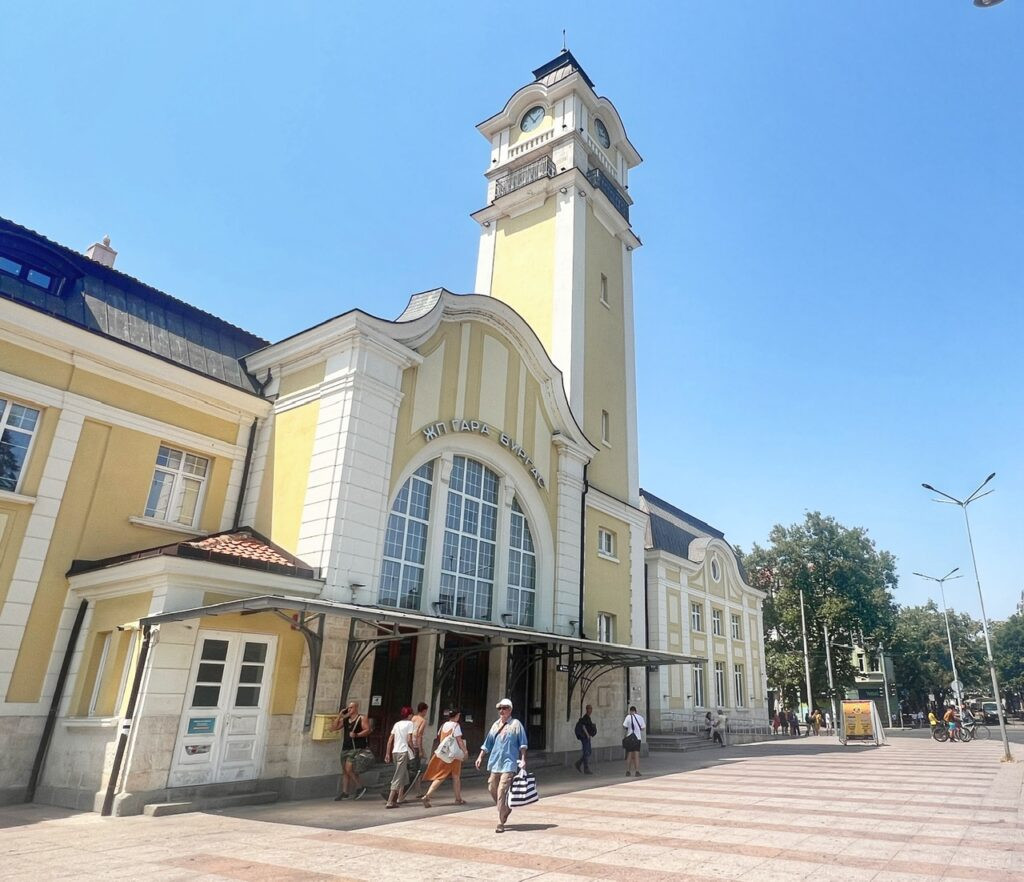
Fortunately, Burgas is quite lovely so we found a park to enjoy our usual dolmas and gigantic bean tins…
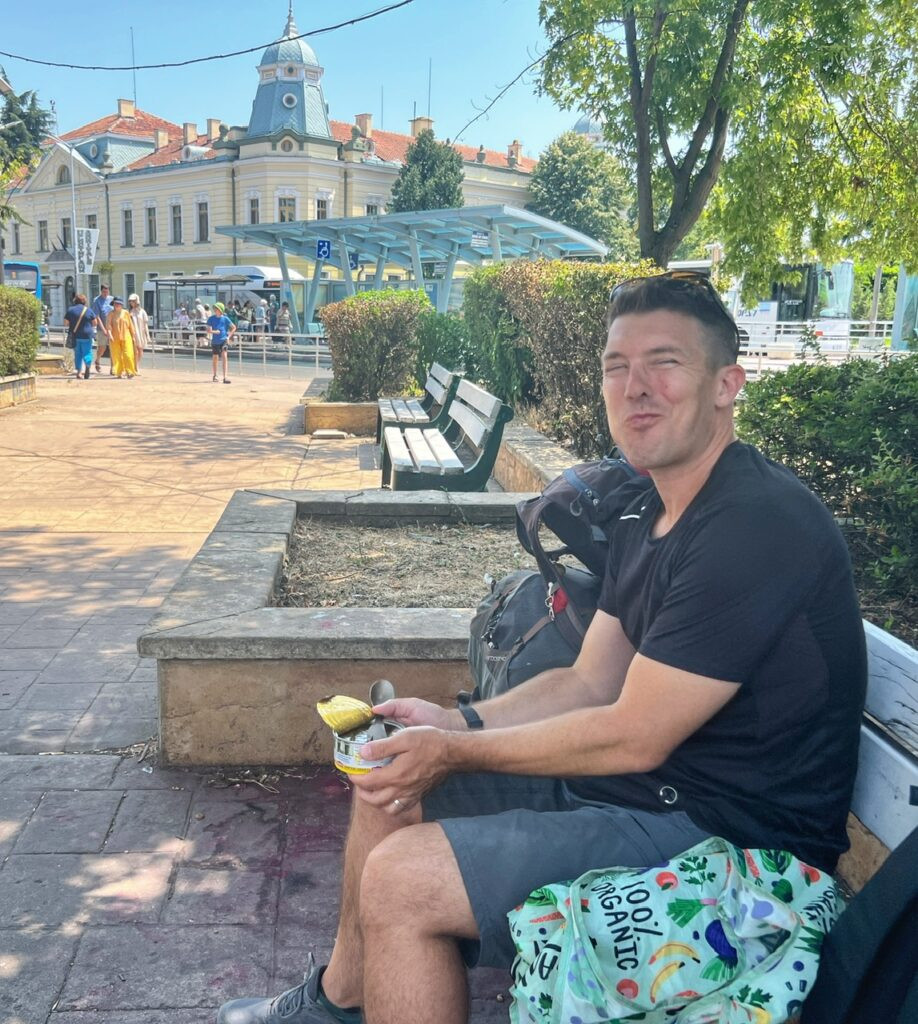
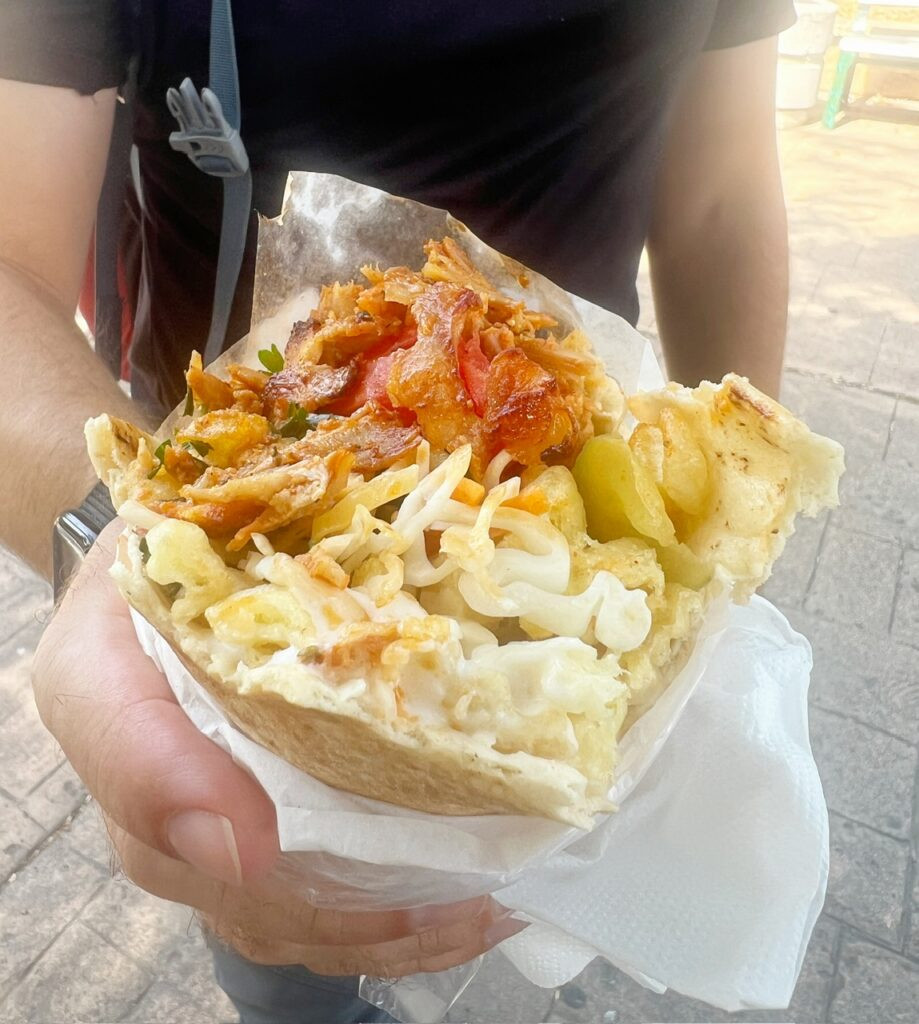
….which we washed down a few hours later with our final Bulgarian Leva change dump on a crazily priced Bulgarian doner (nearly $5 USD now). On our third rendition, we’d learned to request it “bez mayonesa” due to the Bulgarian tendency to douse them with something that resembles mayonnaise. One thing we’ve definitely learned is that Bulgarian doneri are far from the quality of the Turkish ones. Also, the people serving them….at least in Burgas…were incredibly rude, which is not very “Bulgarian” in our experience.
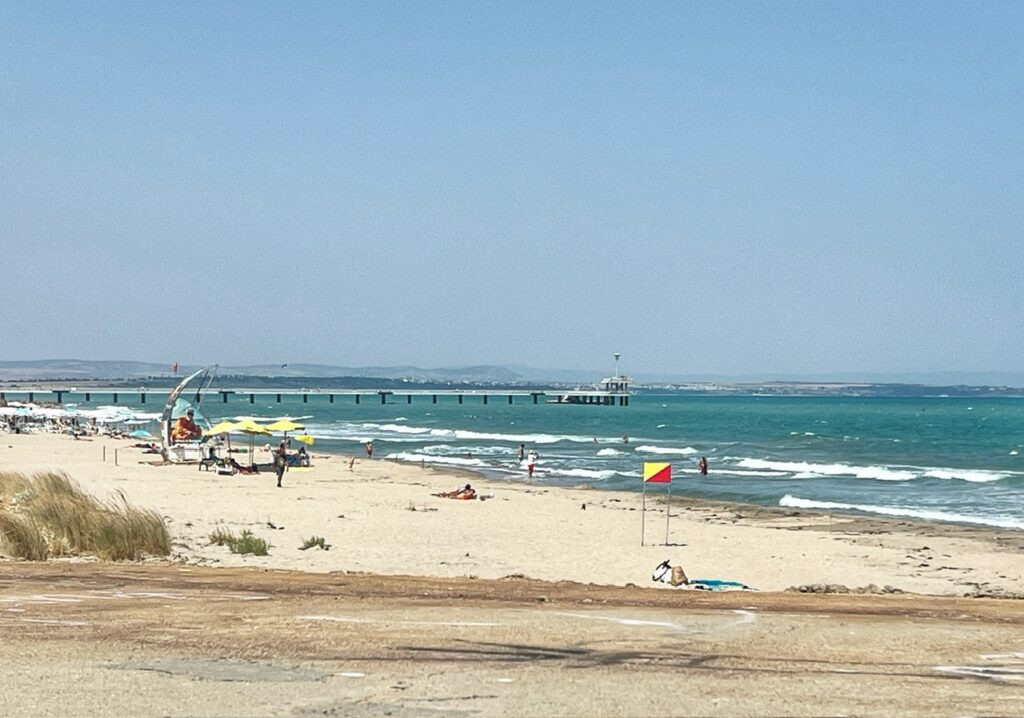
While we waited, we took turns walking around a bit, until our internal thermometers threatened to turn us into BBQ. Mandy did make it to the beach, which did indeed look quite inviting. Mental note for later.
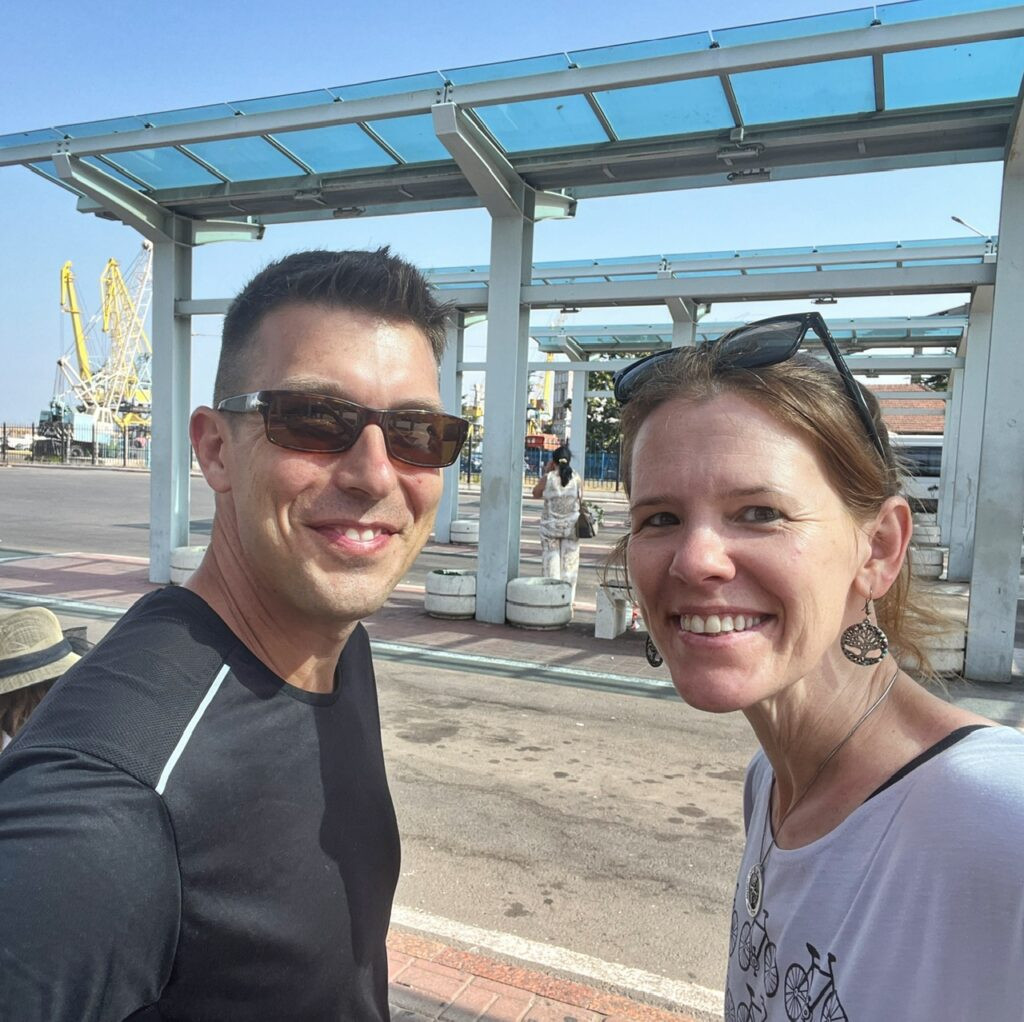
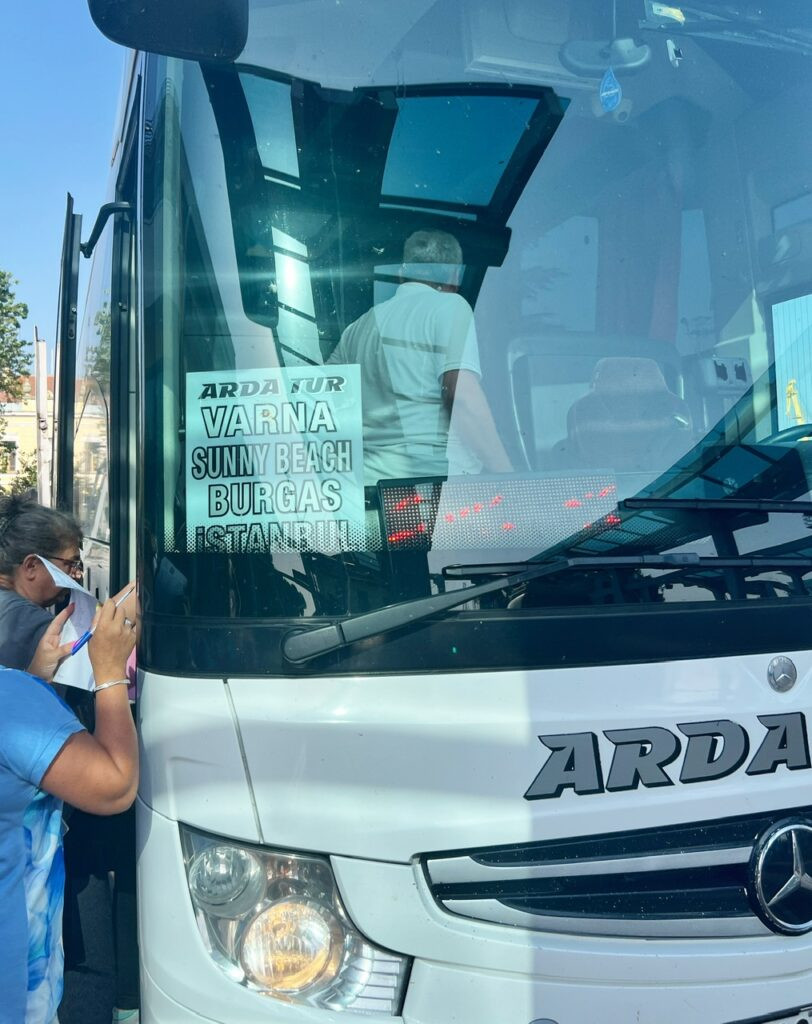
At long last, it was 16:00, and time to head into the blissfully, and (truly) air conditioned, bus station to wait for our 16:40 bus.
Too bad that bus didn’t pull away until nearly 18:00. The southbound bus from Burgas to Istanbul took us 5.5 hours and cost $52 for two tickets. We were able to buy these in advance through the Obelit website.
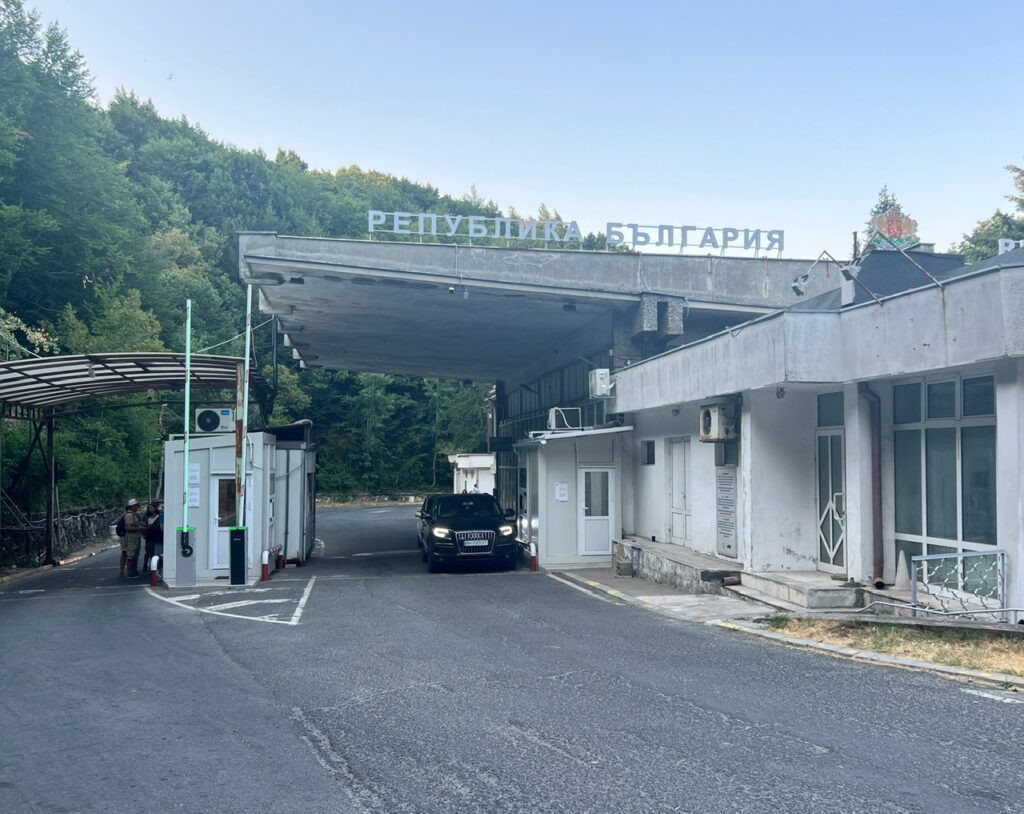
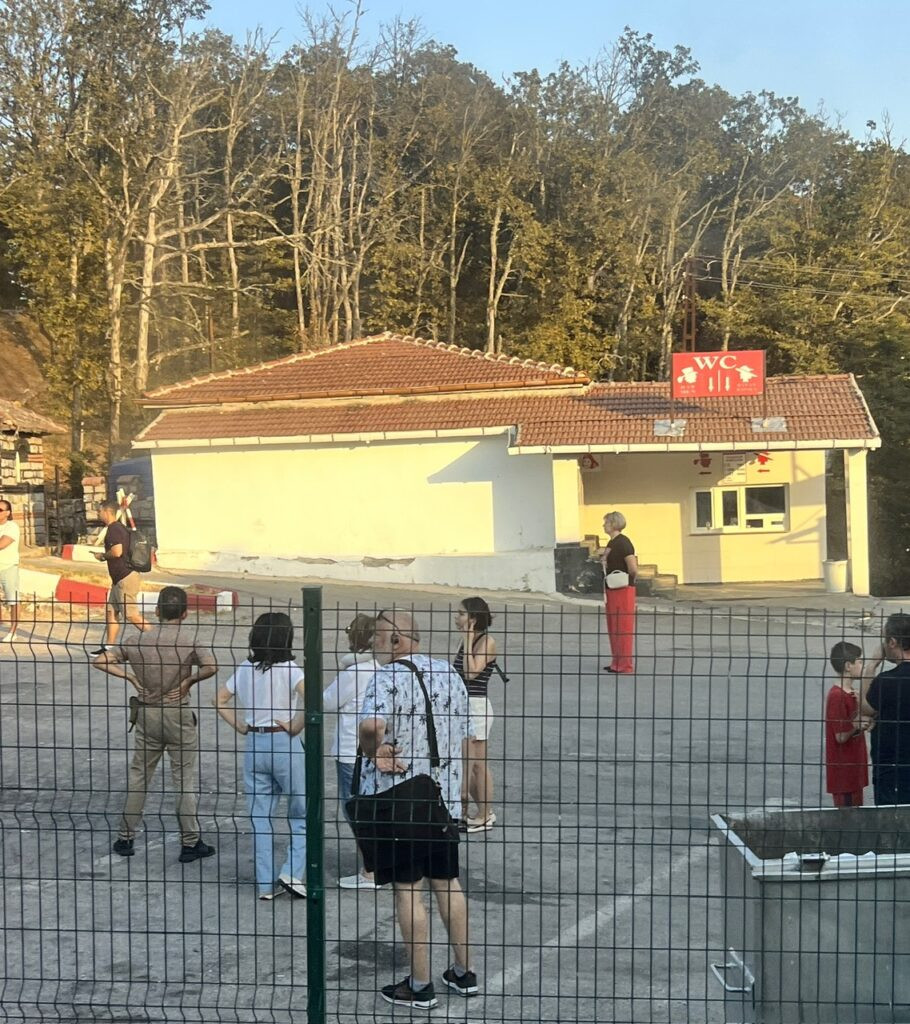
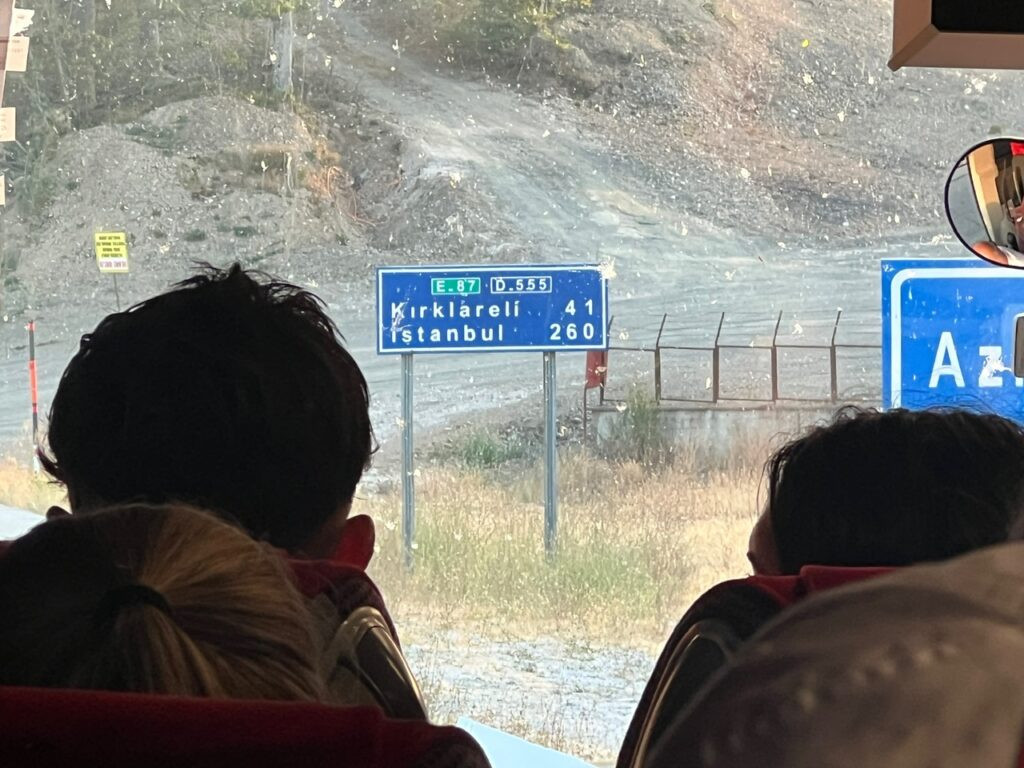
We arrived to the isolated border station around Malko Trynovo, where we were freed like a train of antsy cattle to go to the toilets before getting branded out of Schengen with four hours to spare. Pictured above is the entrance into Bulgarian. (Note: it’s severely lacking compared to the crescent and star splashed Turkish counterpart (which we didn’t dare take a photo of.)
As our Arda bus lurked along toward Türkiye in the land between two countries, we saw multiple border guards lurking in full camo in the forest. They also charged for toilets, but only on the Turkish side. Hehe. Those Turks are always the opportunists.
At long last, we got stamped into Türkiye, remembering to pull a “Teşekkürler” from the cobwebs of our mind for the border officer who issued our stamps. Our free stamps. Because since our last visit, US citizens no longer have to get a tourist visa. Of course the rising costs of the Lira will very soon offset that fact.
Only 260k!! Off to Istanbul we go!
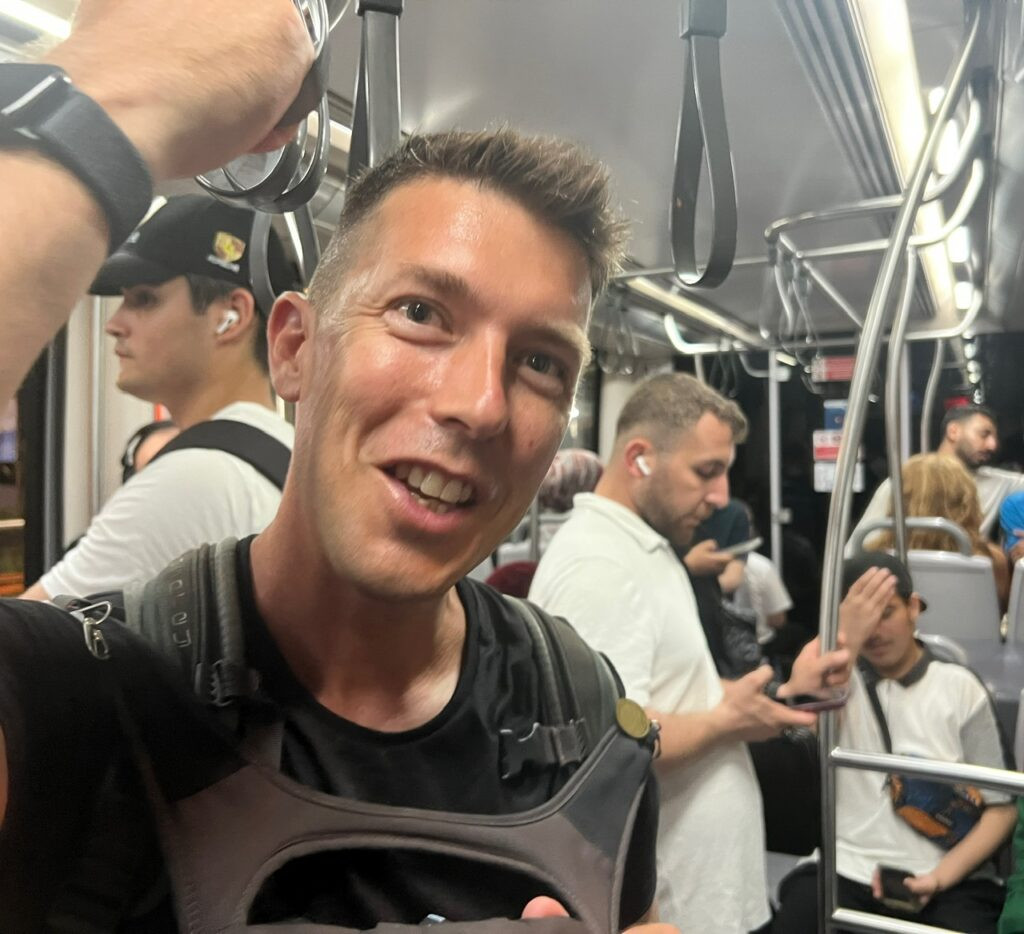
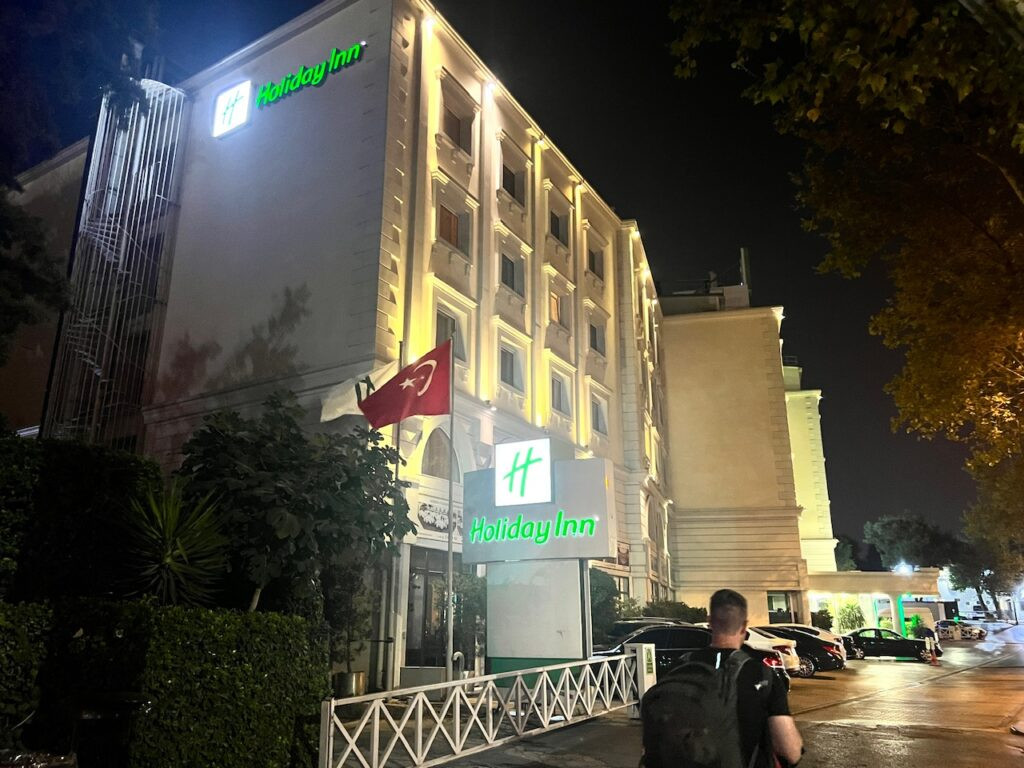
Finally getting onto the metro around midnight to chug our way towards our hotel. But at least we’d have a reliable place to lay our heads the next four nights. Ah. There she finally was… like a shining American beacon.
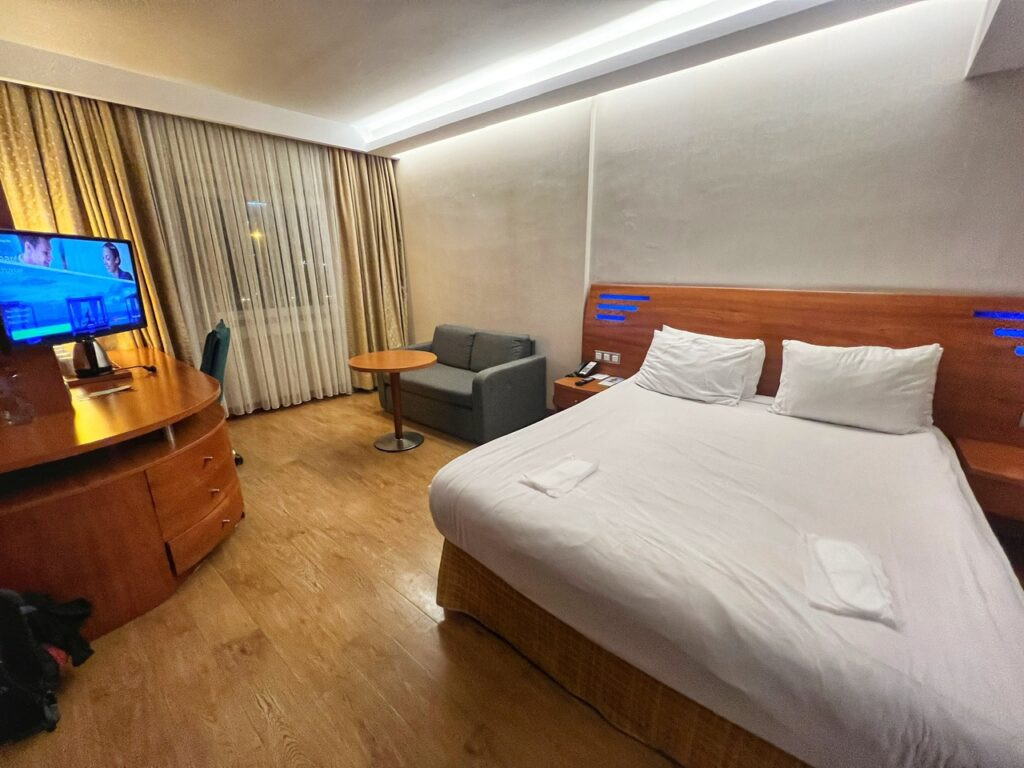
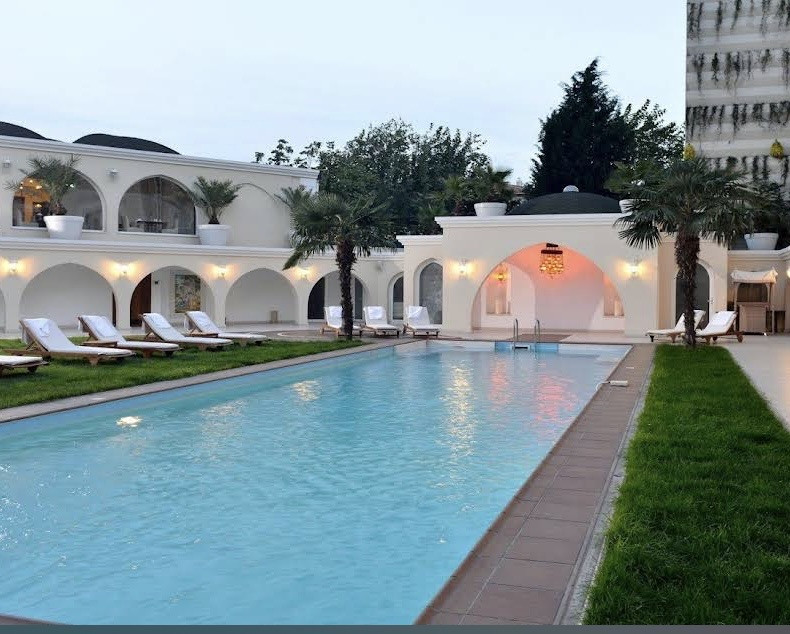
And yes…she was free thanks to 40,000 hotel points with the no annual fee IHG One Rewards Traveler card (10k/night). And although the brand…and the mattress were certainly American, the amenities were not!
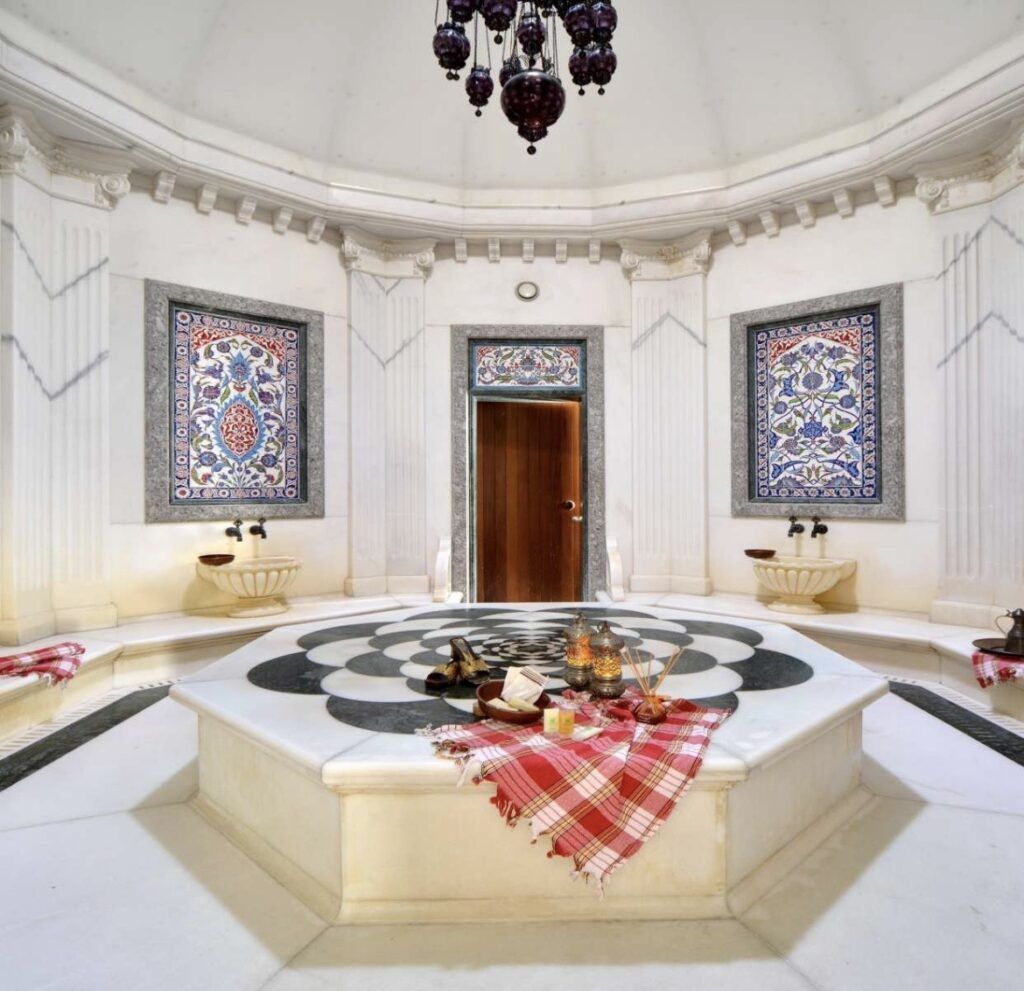
Welcome to our first Turkish hammam….in a Holiday Inn.🤣 Dipping our toe into the bougie life of the hotel points game is proving very tempting…(not our photo!)
Topkapi Park and Old City Walls
It only takes moments for Istanbul to once again beguile us with its pulsing energy. And now that this was our third visit and we have all the major tourist things out of the way, it’s even more exhilarating to discover parts of the city where you’re not being approached by rug salesmen on every corner, or encouraged to empty your wallet for a twirling ice cream “magic show.” Haha.
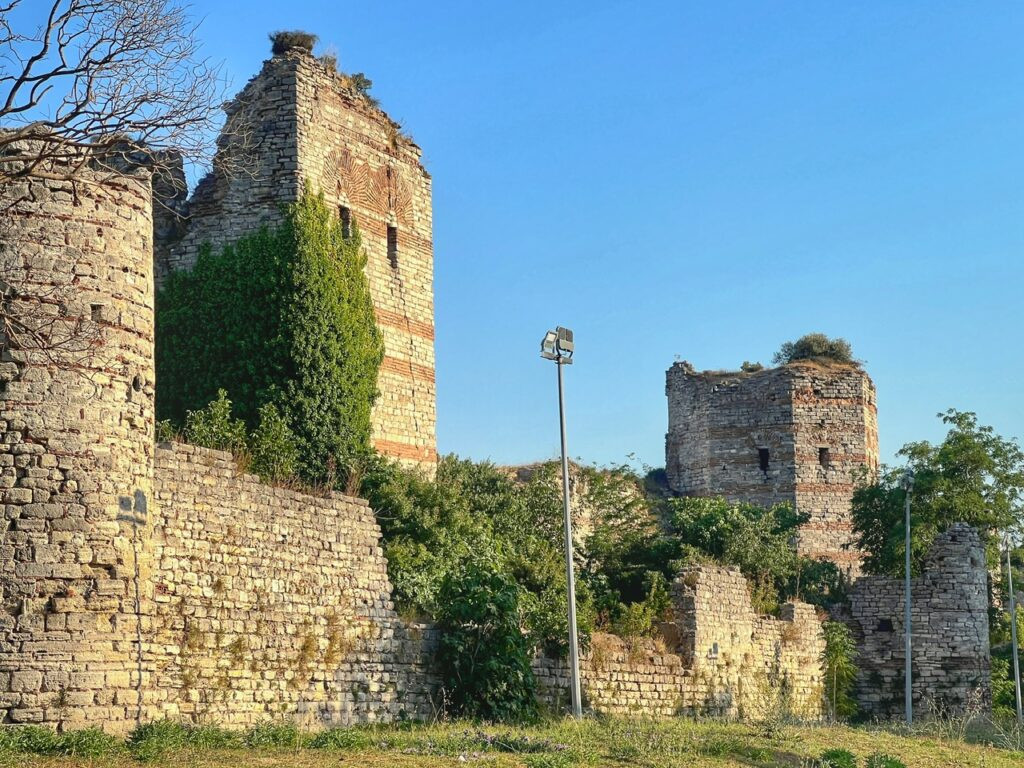
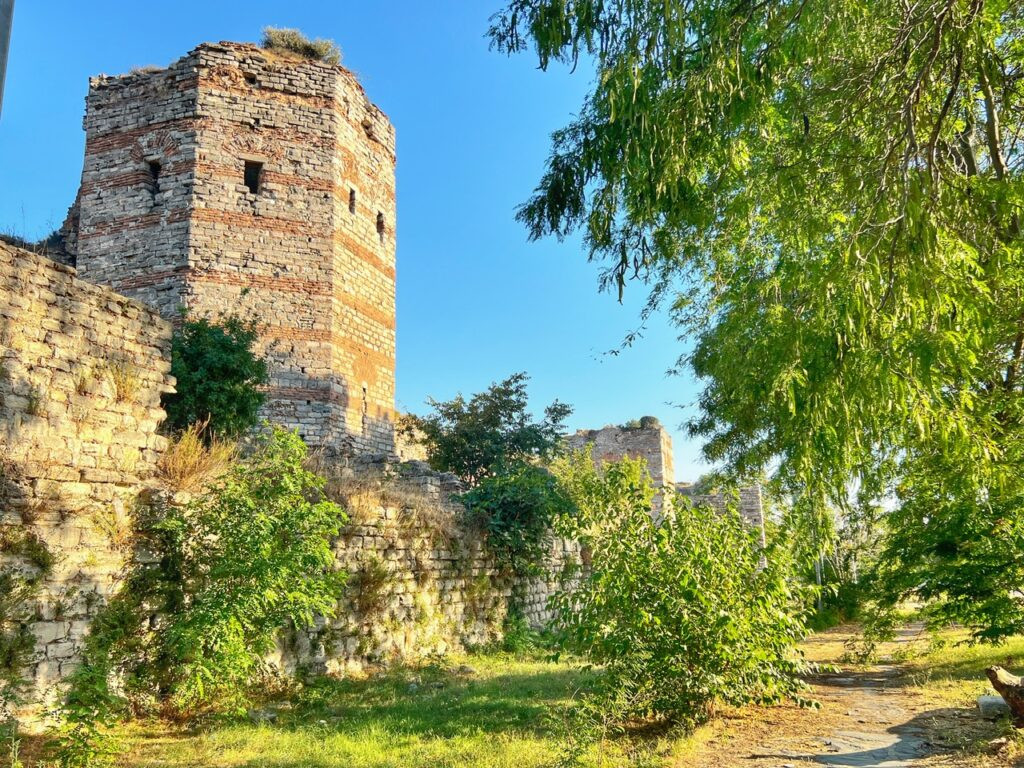
Our first excursion took us into the quiet serene and lush Topkapi Park, which once served as a major entrance to the Old City of Constantinople during the Ottoman Empire. Considering this fact, and the fact that it’s astounding 6.5 kilometer long wall built nearly 1500 years ago is largely intact (and naturally free), it’s actually shocking more visitors don’t make it out here. But that in itself, made it even better.
The Walls of Constantinople are often called the Theodisian Walls, and are among the most impressive examples of medieval architecture in the world. Not sure why no one ever talks about them?!
They protected the city and remained impenetrable for over 1000 years and originally had a triple line of defense…a moat, an outer wall, and an inner wall. This is truly entering history.
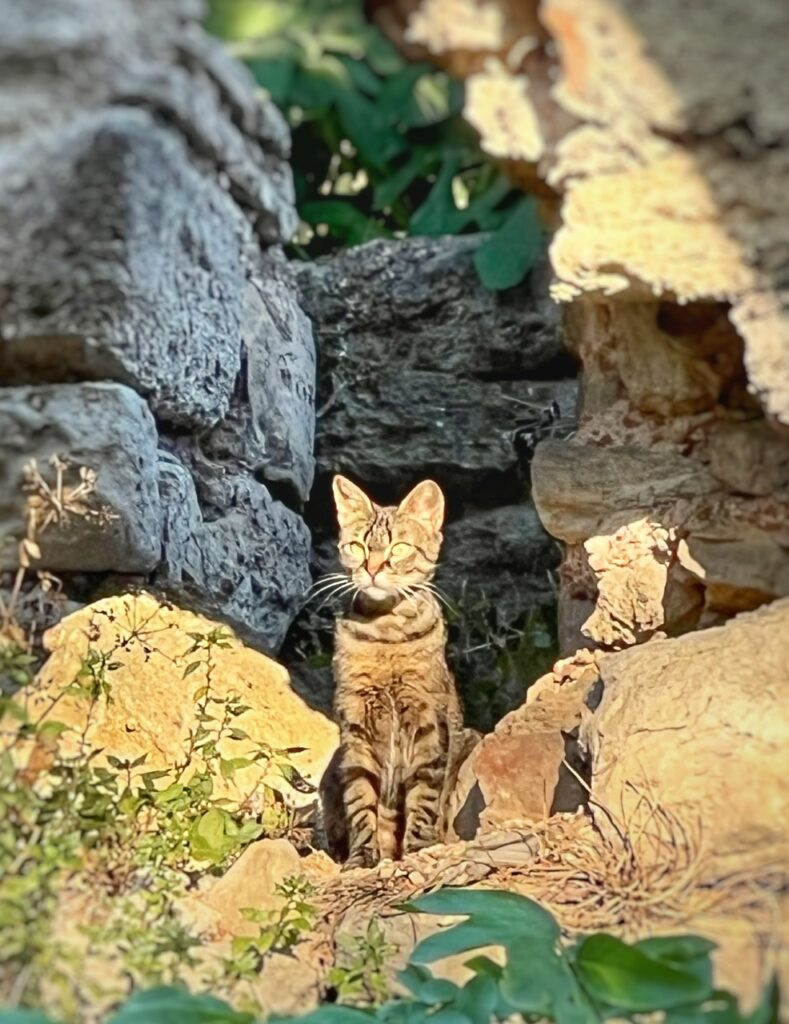
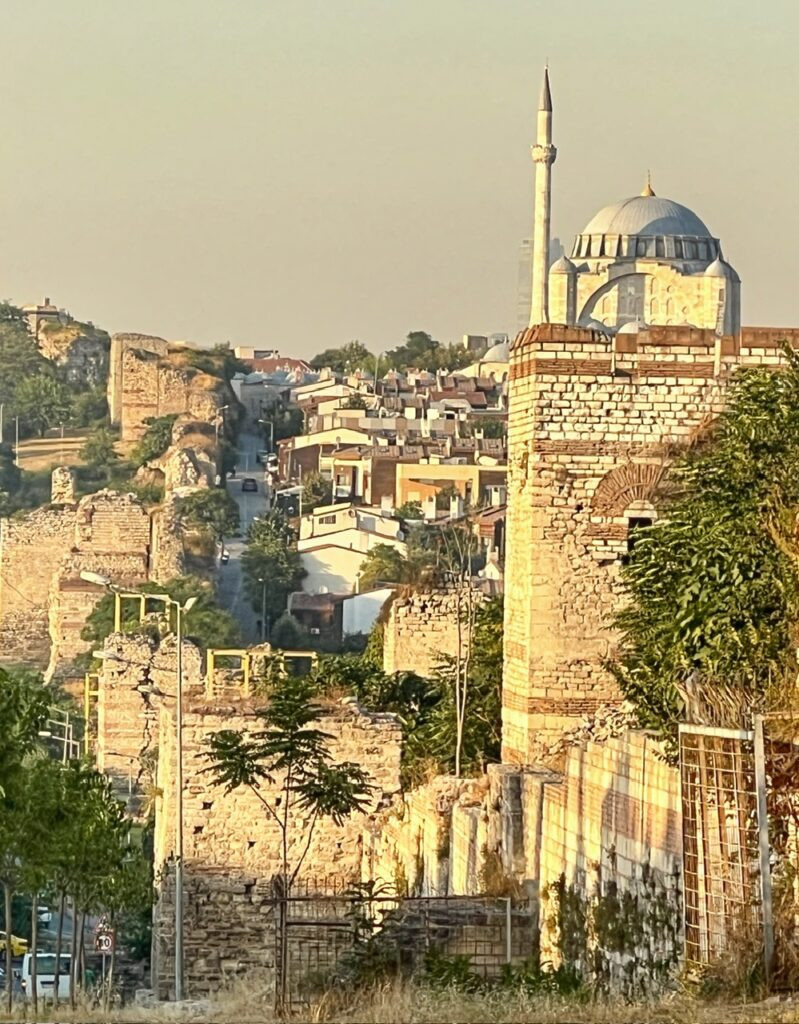
The guards on duty today seem a little less threatening than the ones from Ottoman times. The walls weaving their way northward, complete with mosque seemingly teetering like an immaculate cake on top.
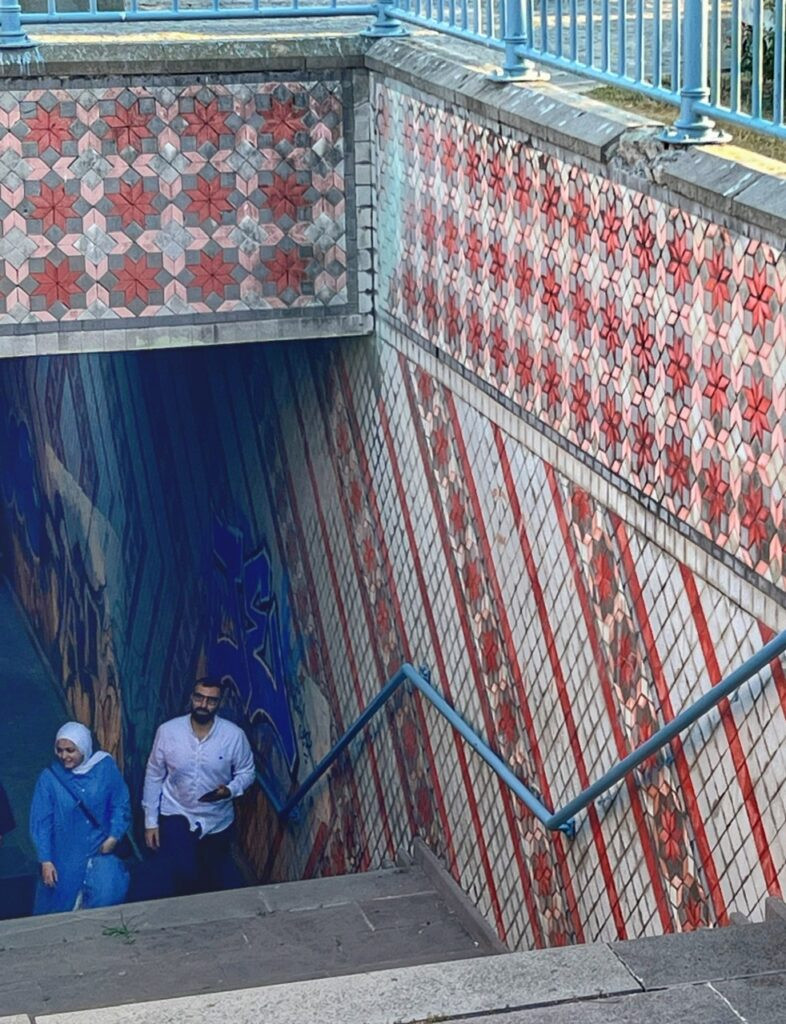
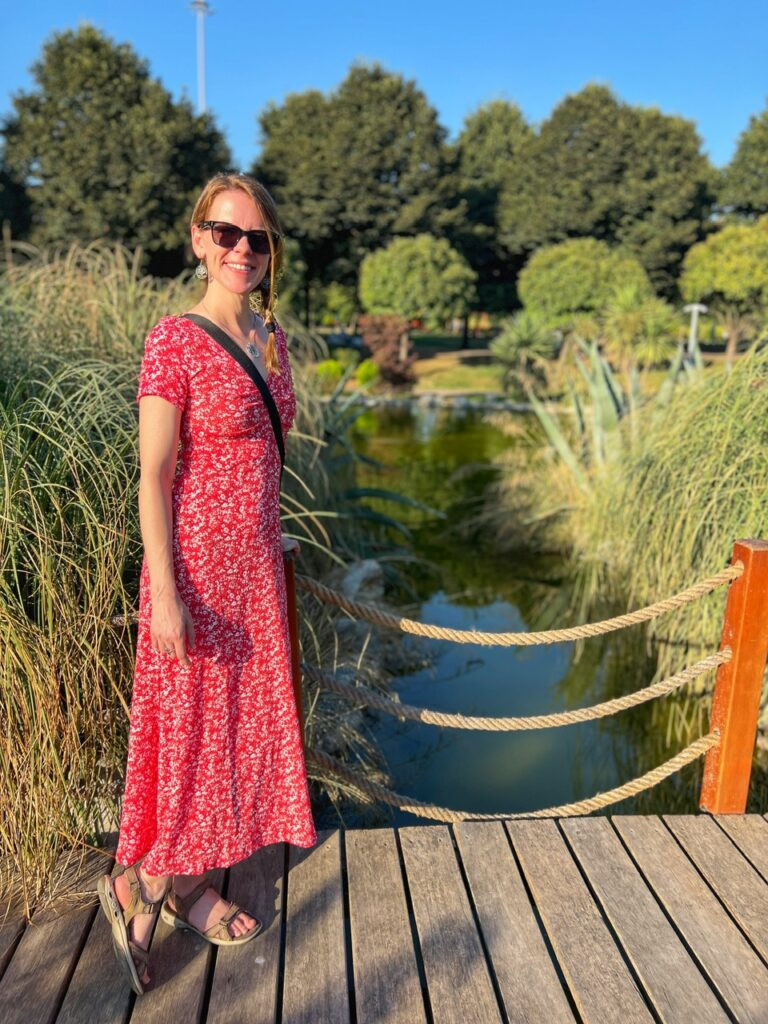
Entering the park, there are many fetching mosaic staircases leading down to the busy road, which runs UNDERNEATH the park….where all traffic belongs, in our opinion. Also, Mandy modeling her new (Bulgarian) dress in the park, which is very pleasant to stroll in.
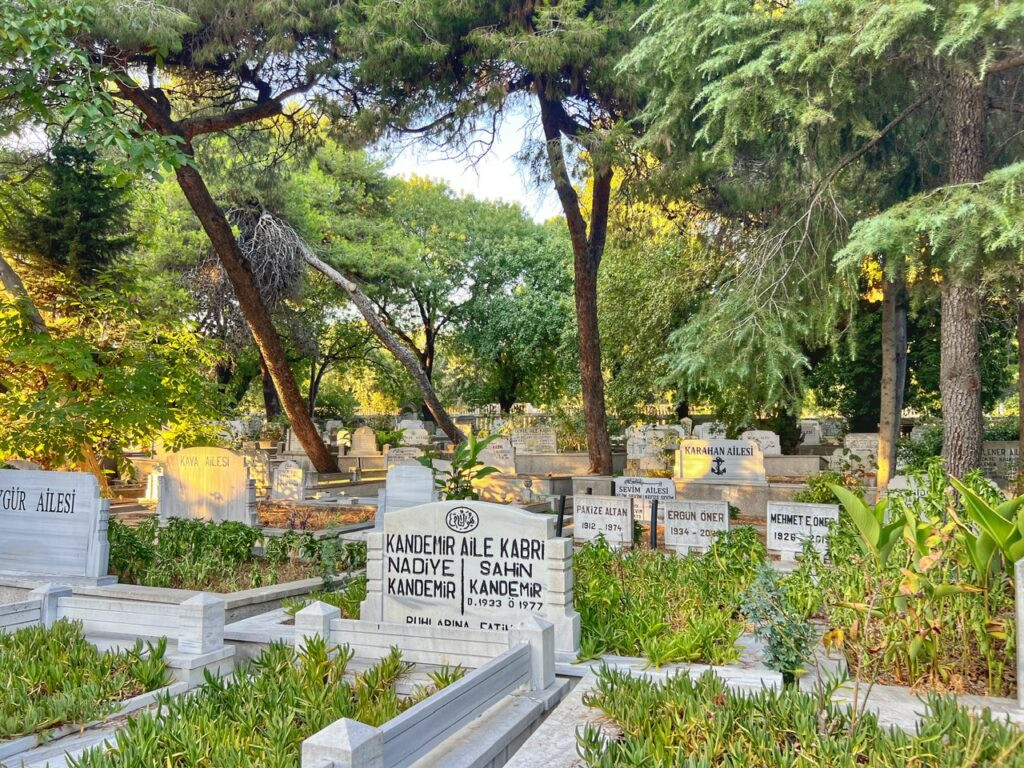
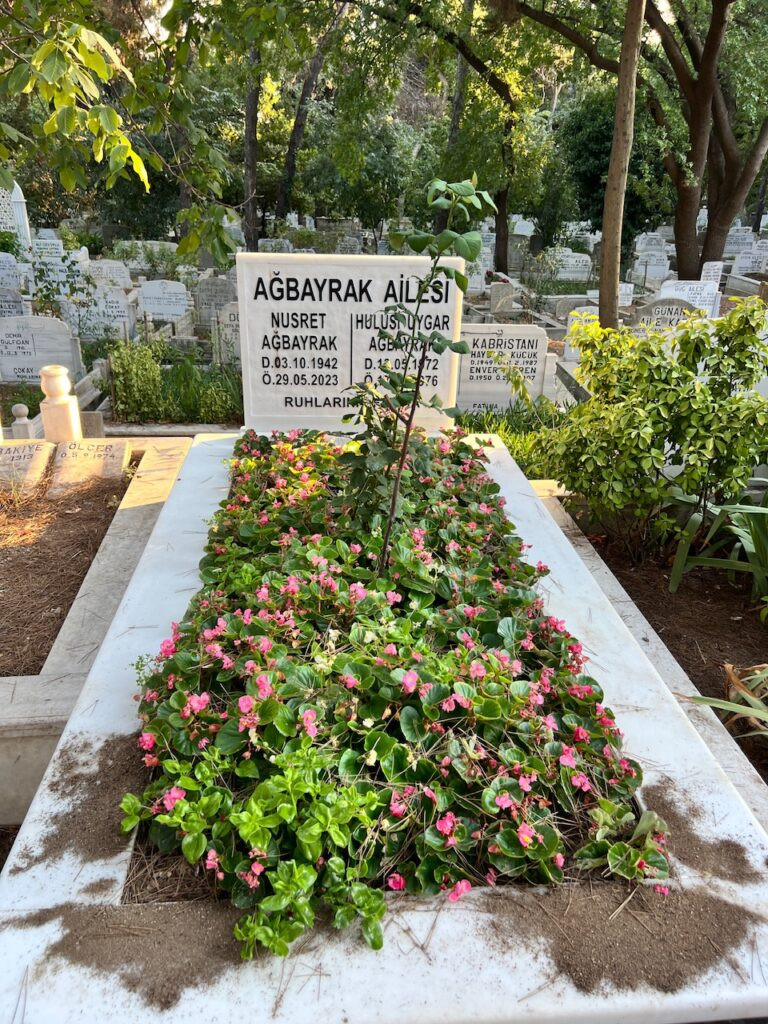
Roaming through a beautiful cemetery, which seemed to be growing flowers or other plants atop each grave. Now this is a nice idea…
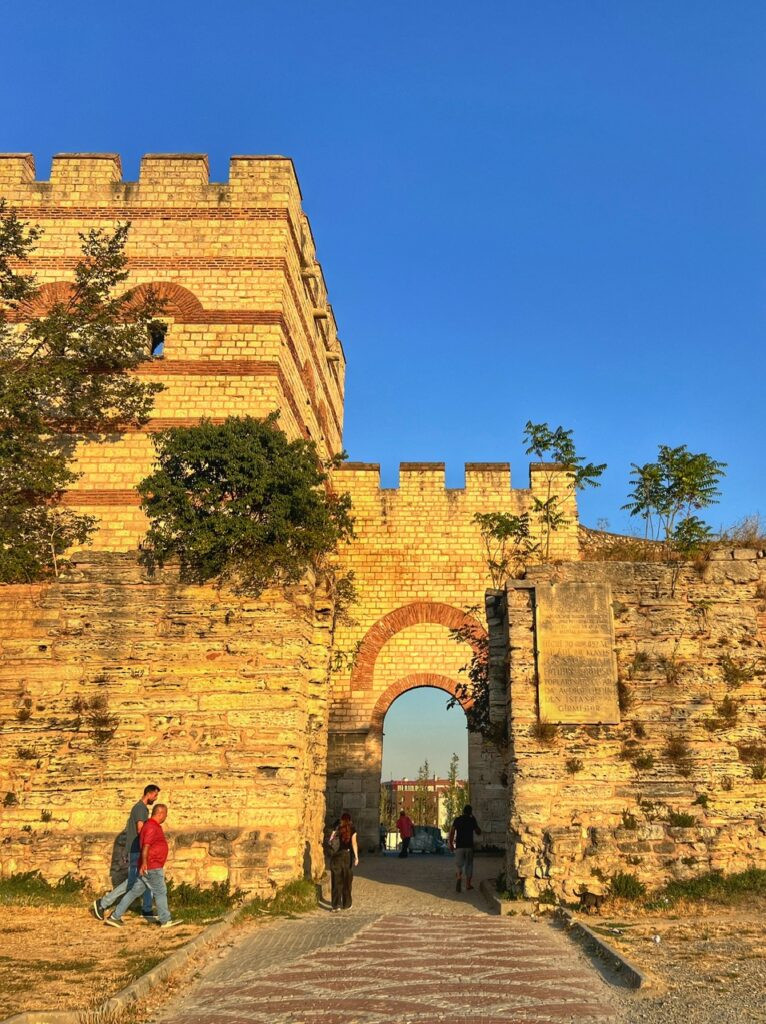
One of the fortress gates, which have been reconstructed, is the site where Muhammed II the Conquerer entered Constantinople on May 29, 1453 and was practically glittering during the golden hour. Wow…this city simply teems with history.
Girl Date with Sila
Yesterday, I spent the day happily reuniting with my Turkish friend Sila. We met while I was living in Prague in 2007-2008 and it’s always amazing to hang out with her in this jewel of a mega city she has lived in for 25 years. It’s also always amusing to see her in whipping into action…speaking Turkish, saving cats, and taking me to the best local joints.
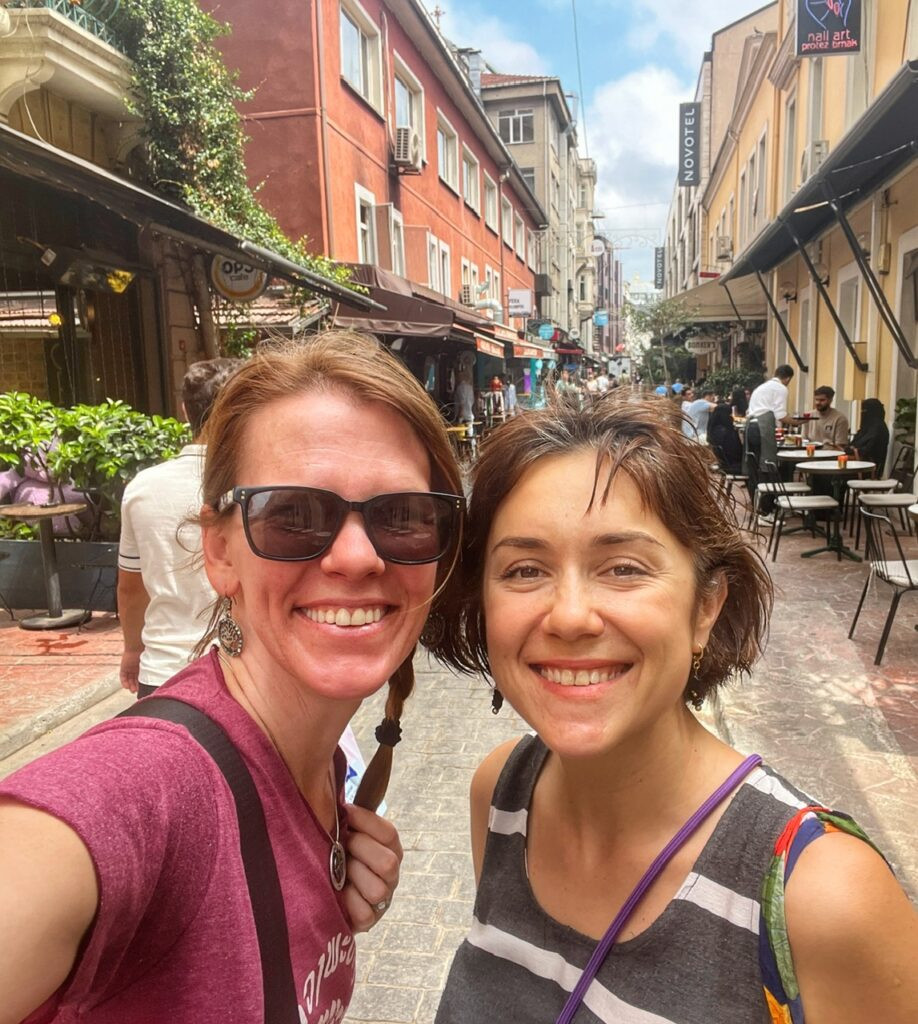
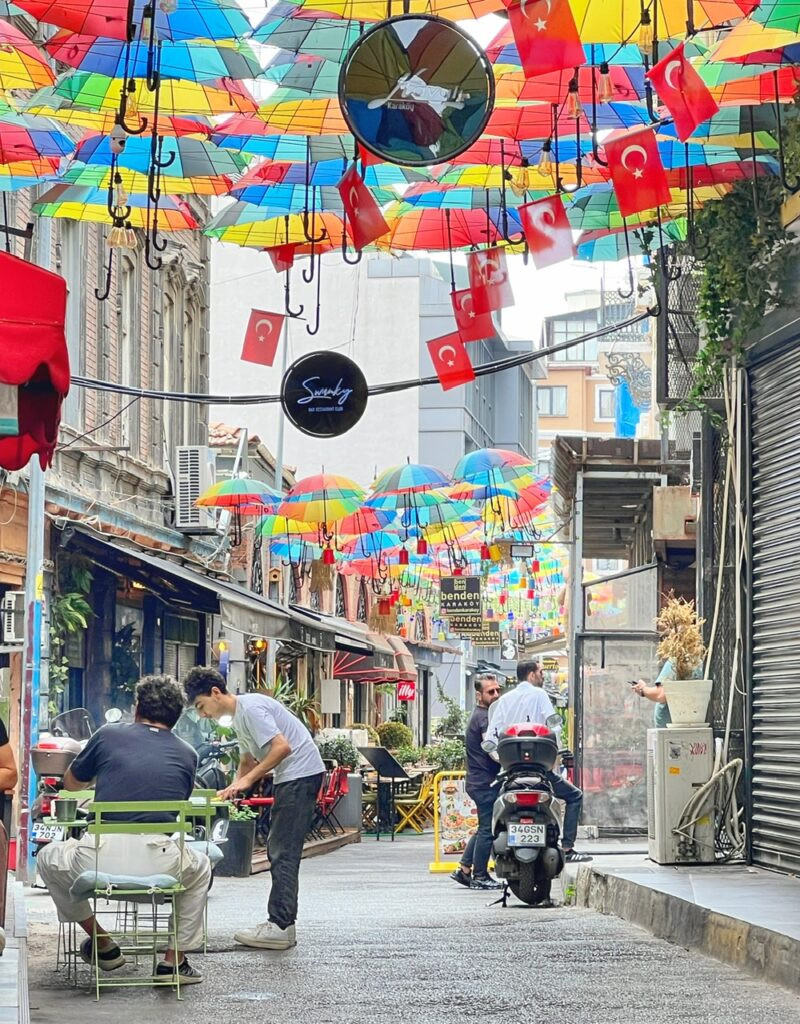
Roaming the streets of Beyoglu. If a major city doesn’t have a rainbow-splashed umbrella street can you really call yourself a city? Seriously, how can you not love Istanbul?!
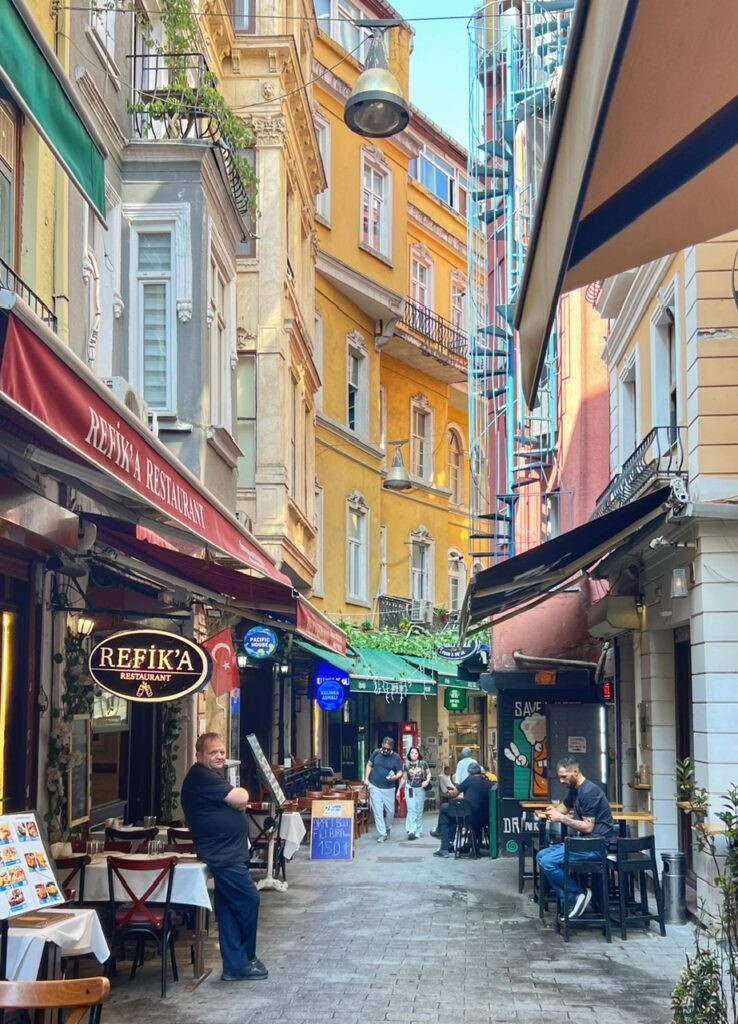
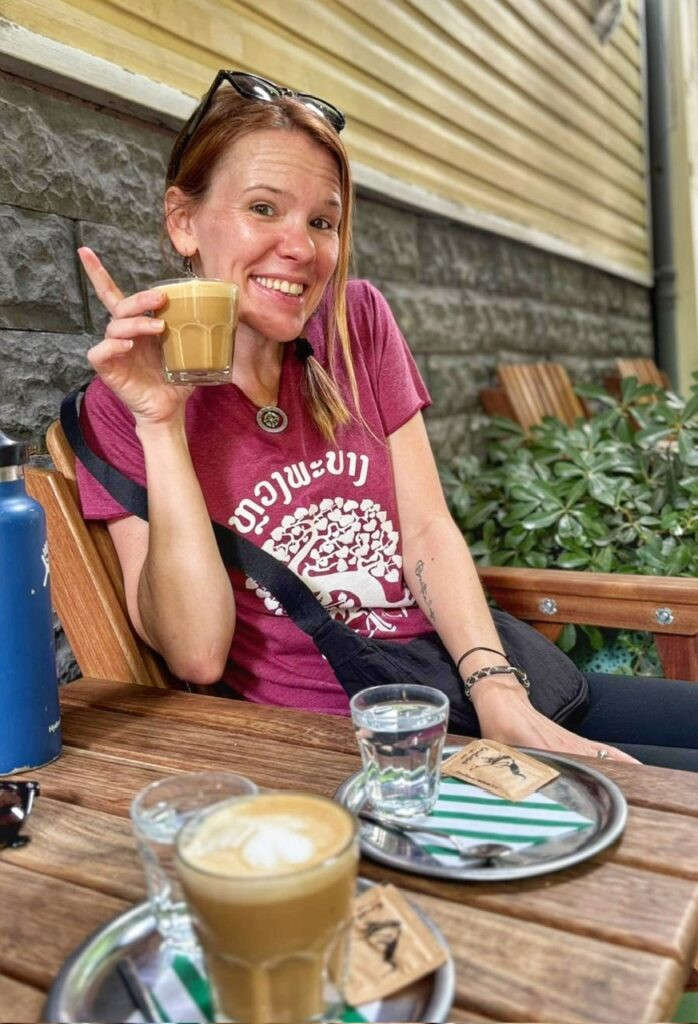
Grabbing a teensy frothy flat white at a charming cafe in trendy Karakoy. (Karabatak Karaköy).
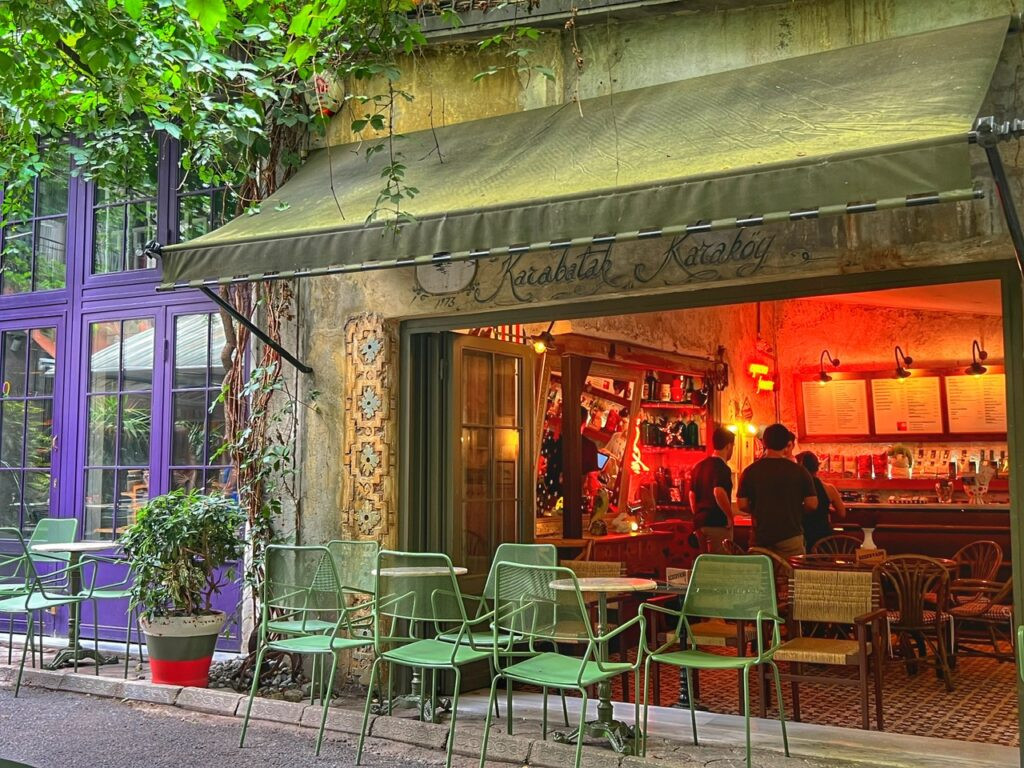
Coffees are now insanely priced at about $6.50 each at a place like this. Prices have skyrocketed like very few other countries in the last few years. Turkey is projected to be at #5 in the world’s worst inflation for 2025 at 33%, while last year it was 44%. It’s really awful for locals like Sila and yes, is also why chose to stick around the country beyond a week…as much as we love it.
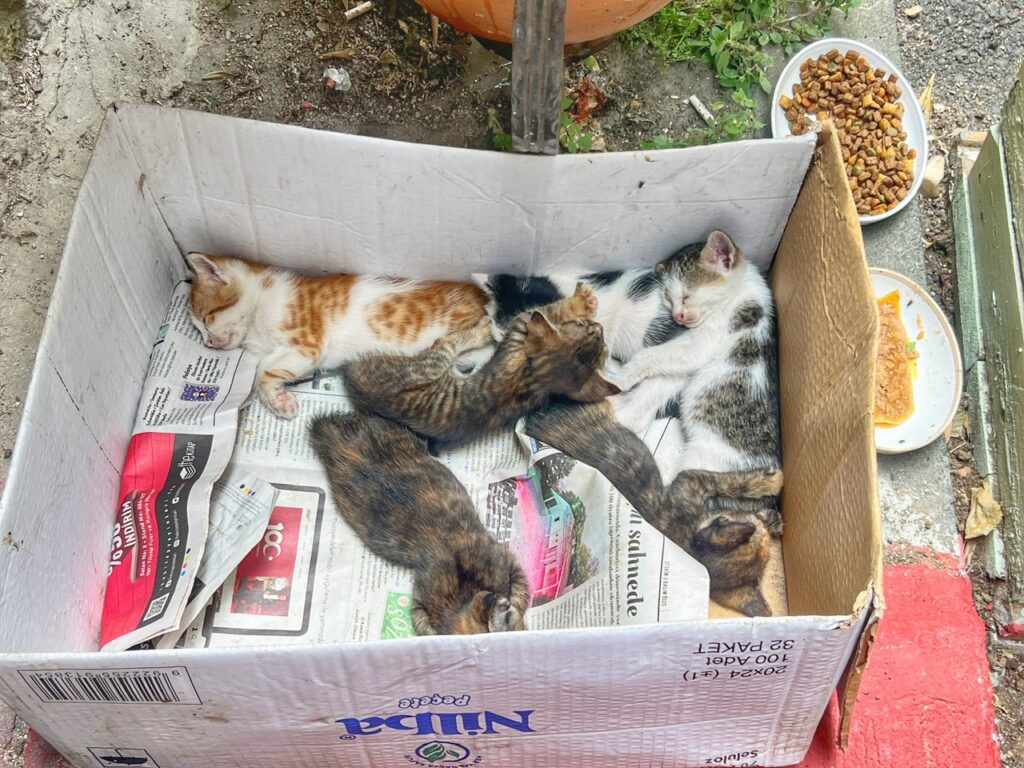
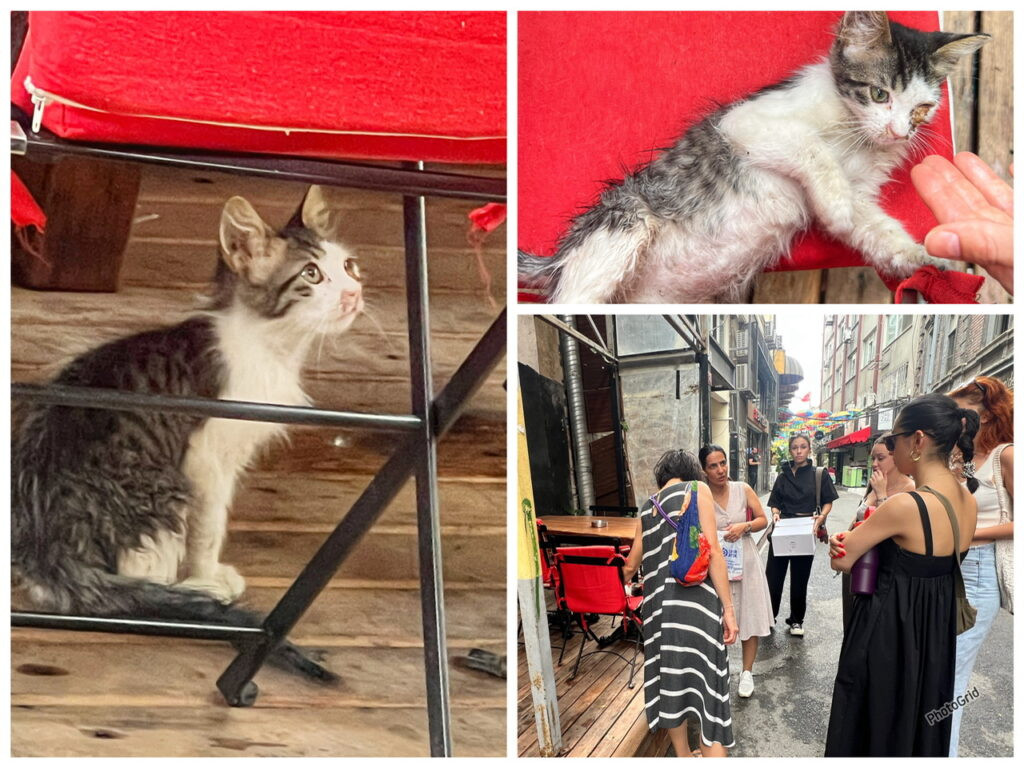
Of course, in a city of hundreds of thousands of street cats, it’s not unusual to find a box full of kittens on the sidewalk. And although most of them are well looked after, when one isn’t, it’s heartwarming to realize how many people care.
For example, Sila (who has had vet nurse training) and I also saw this kitten who appeared to have a very bad eye infection. So, she went to the restaurant staff and asked who was watching over it and helped the owner go to the pharmacy to get the right medication for it. When we returned, a whole group of girls were wanting to take it to a vet. Regardless, the cat will get the help it needs.
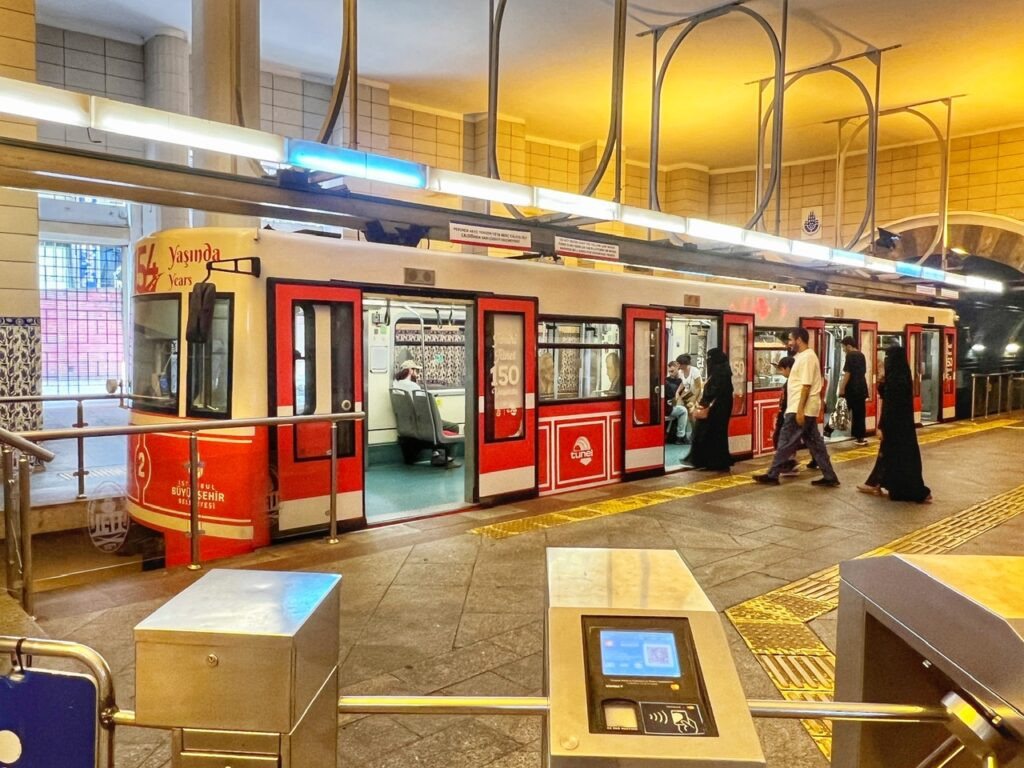
From there we took the “World’s Second Oldest Subway Tunnel” from Pera to Galata, a funicular that travels 573 meters. It was built in 1875 and is a quite unique ride which you can pay for with your Istanbulkart for about $.40.
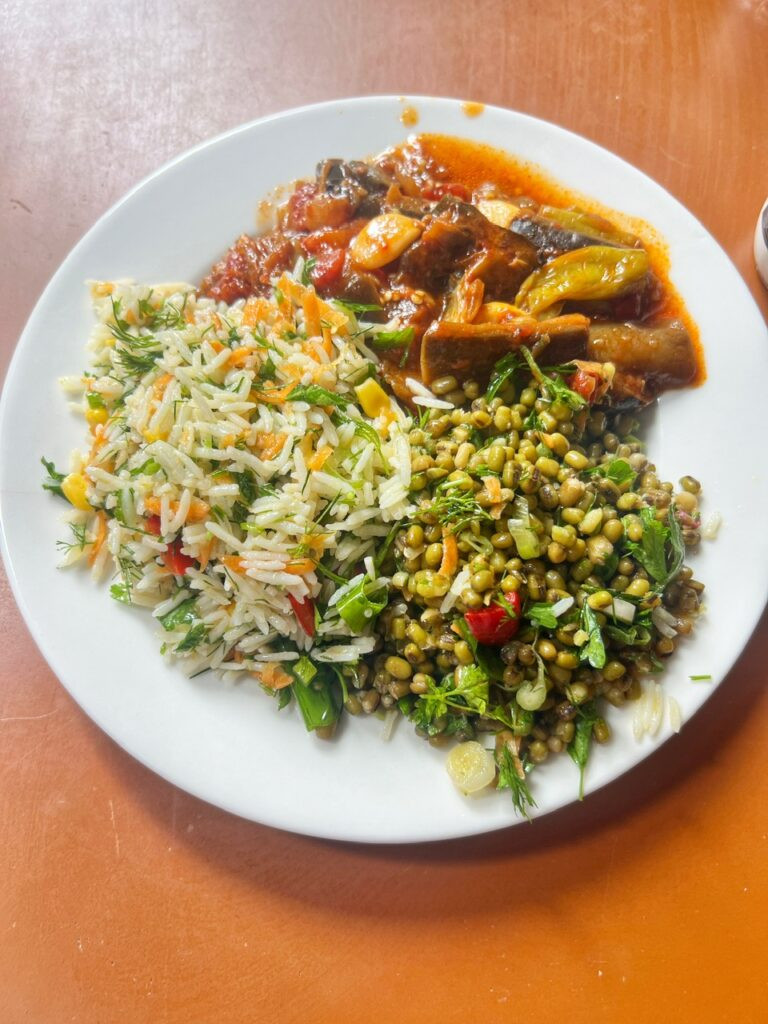
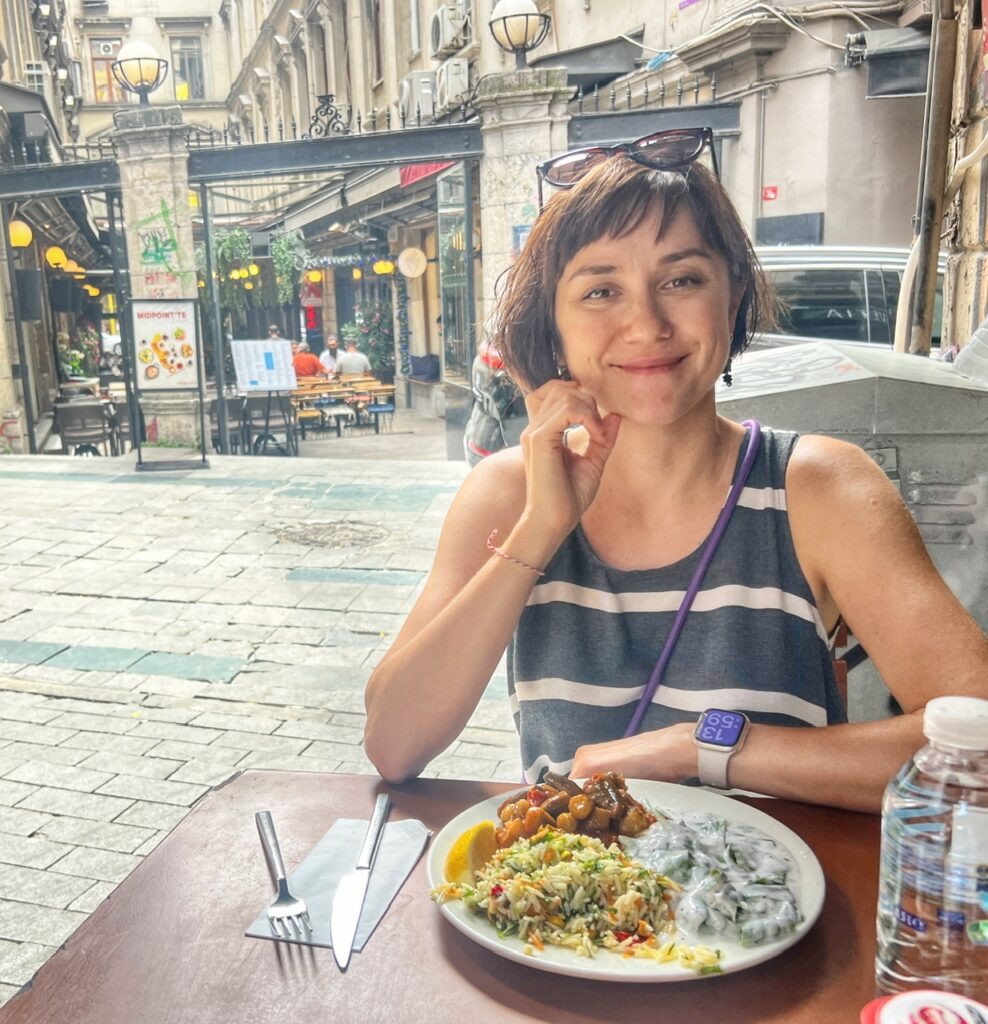
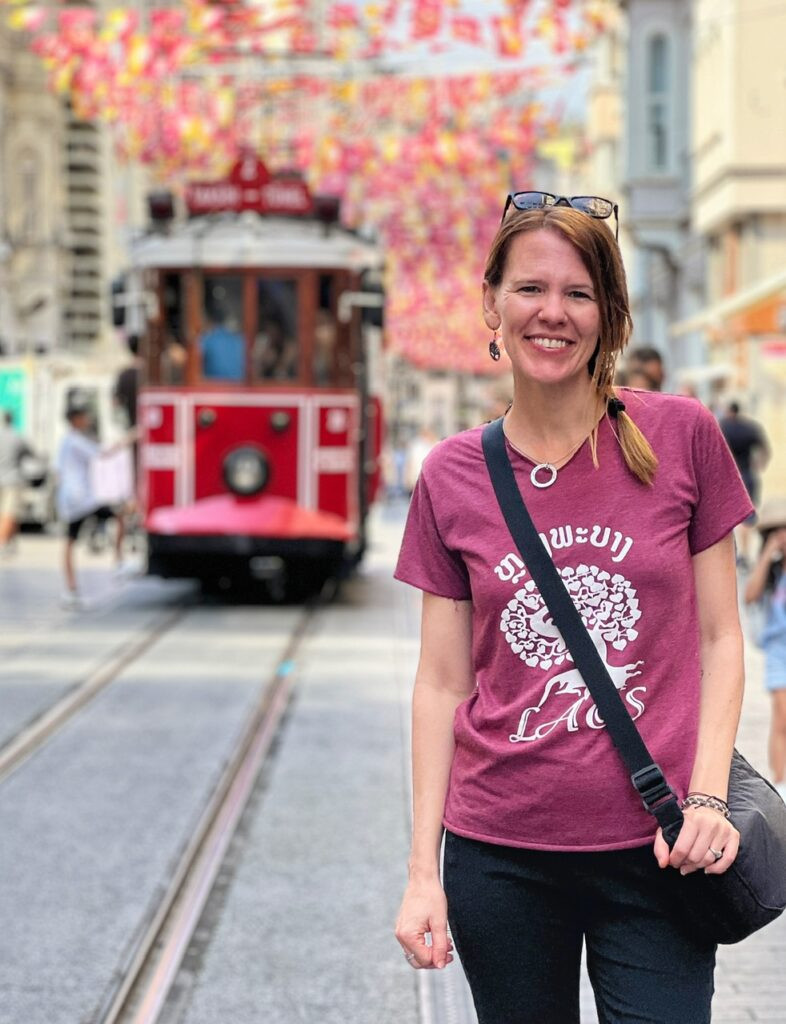
Our lunches at Helvetia Lokanta, which offered some quite tasty vegetarian options for about $9/plate. This would definitely have been half the price, or less, on our last visit in 2022. So wonderful to have a much needed day with one of my favorite gal pasl!
Exploring the Fatih Neighborhood
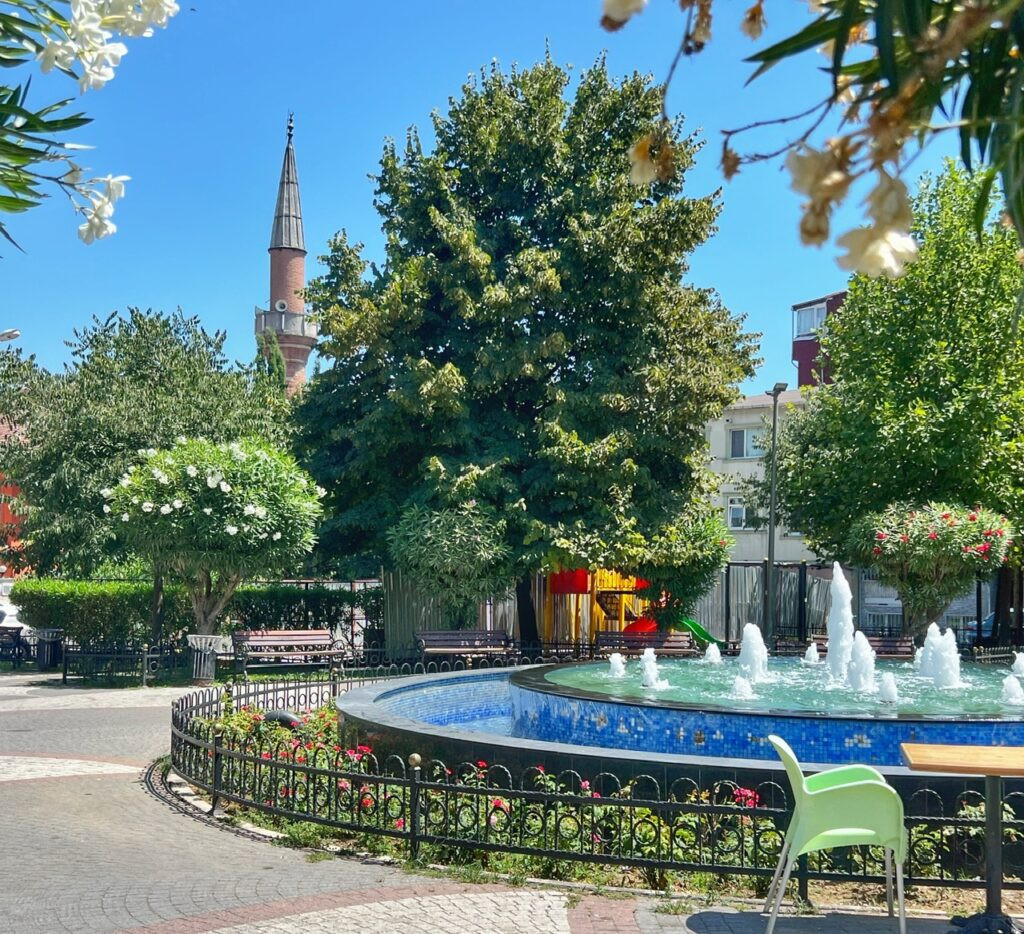
Because of where our hotel was located in the city, we had the chance to do a deeper dive into the heart of Constantinople’s old core. Fatih, the European piece of land between the Golden Horn and the Sea of Marmura, is notably more conservative than the rest of the city, and the hajibs and Calls to Prayer feel more prominent and consistent than in other areas.
It’s also where most tourists land to check out beautiful historic places like the Grand Bazaar, Hagia Sophia and the Blue Mosque. Fortunately, we got to avoid that zoo, and instead roam to some lesser known neighborhoods and sites.
This included a very affordable Syrian restaurant, which offered some of the best falafel and ful we’ve ever eaten, as well as a visit to the completely empty, and quite striking Yedikule Fortress, overlooking the sea. There were also lots of meals, lots of markets, lots of mosques, and lots of cats to fill in the gaps in between.
The outer portions of Fatih, near the historic walls, were lovely to just wander. This charming square above is called Kalburcu Mehmet and just a few blocks from our hotel.
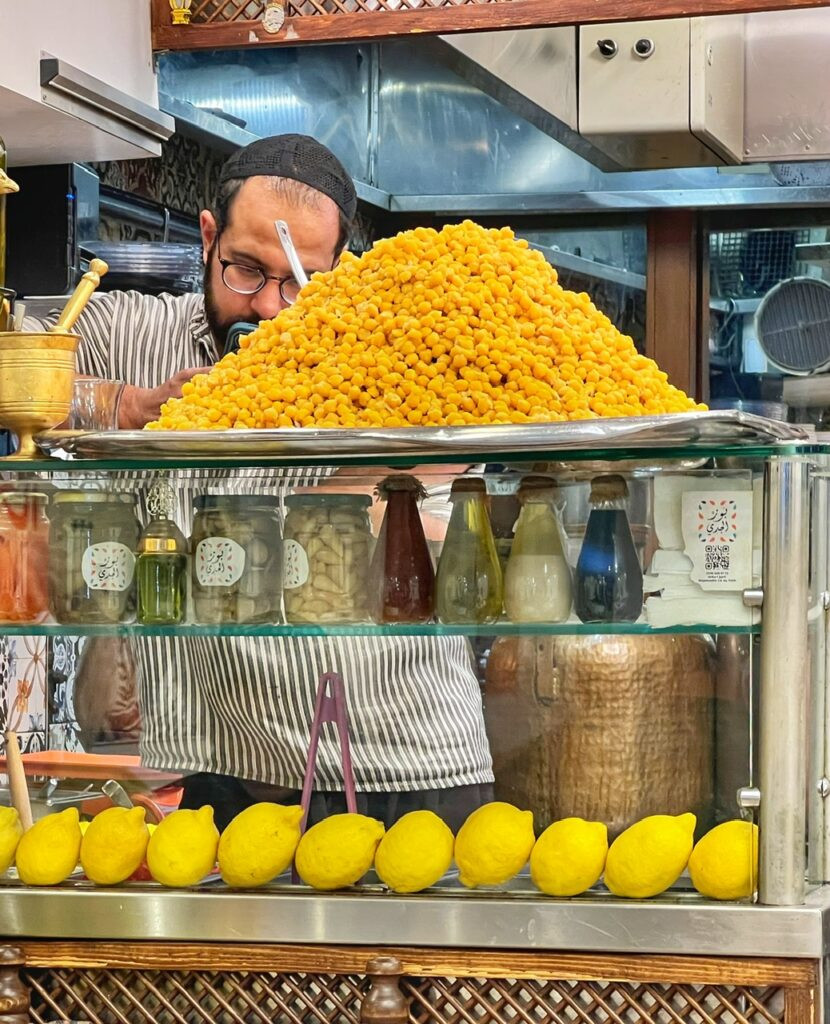
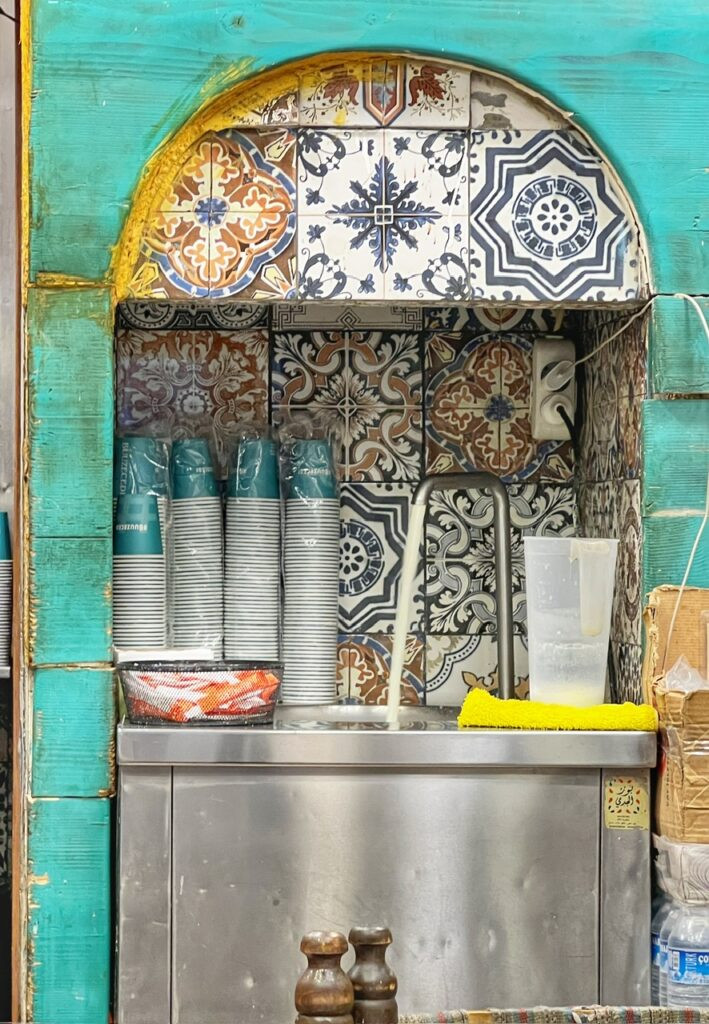
We heard about Buuzecedi Restaurant through two sources…a follower (thanks Laura!), and Atlas Obscura, so we knew it must be good. This vegetarian Syrian restaurant, bedecked with colorful tiles, Damascus Days of Yore photos, and olive oiled mountains of savory chickpeas, provides war refugees a chance to fulfill their homesick food cravings and us, the chance to delight in authentic Syrian cuisine, arguably some of the world’s tastiest.
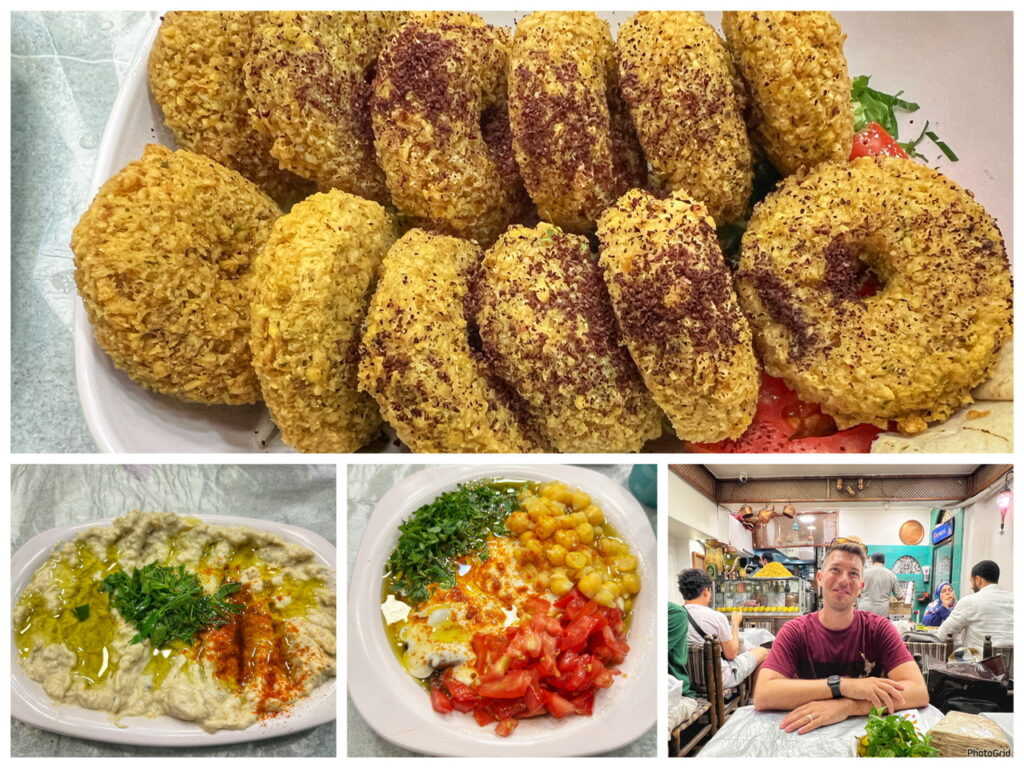
Our order consisted of sumac-dashed falafels, in the noteworthy shape of donuts, mutabal (a dip of tahini and eggplant), and ful, the traditional breakfast dish made from lava beans, slow-cooked and seasoned with garlic, lemon, olive oil and spice. Of course, everything is then scooped up using griddled flatbreads. All of this cost $14, which was by far our cheapest meal out in Istanbul. That said, wow…this place is so worth going out of your way for.
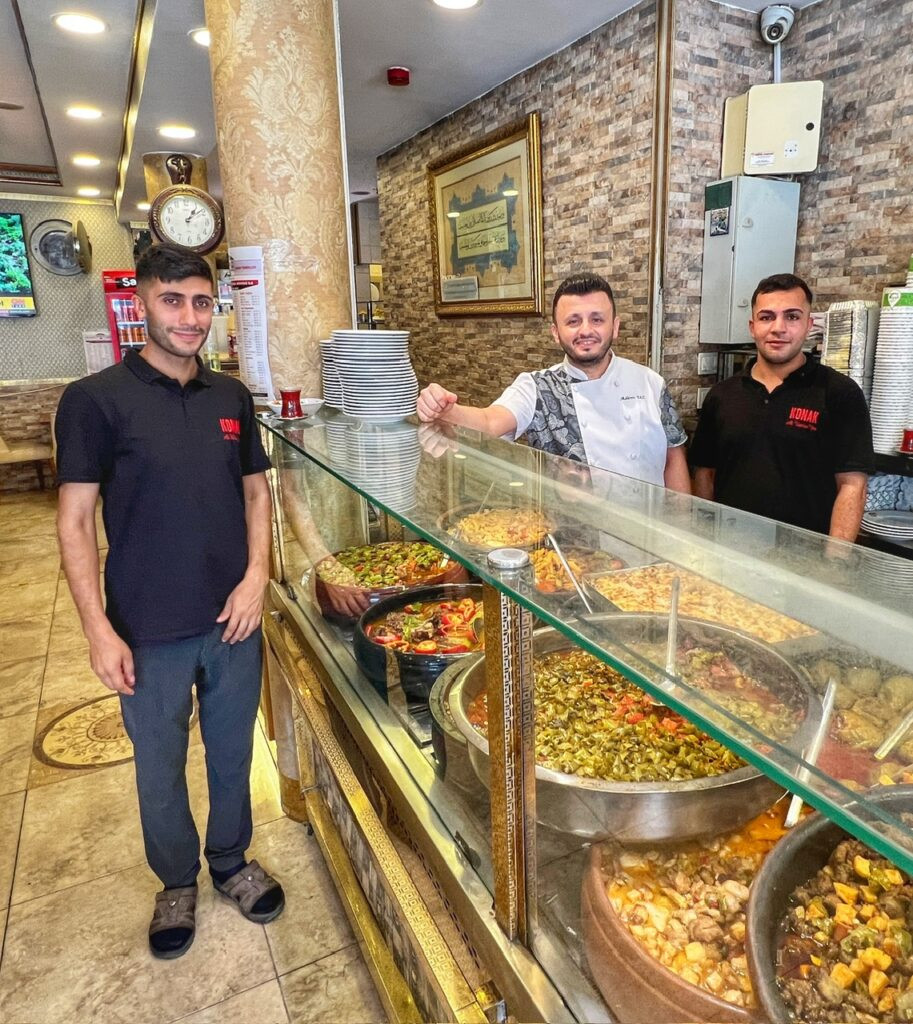
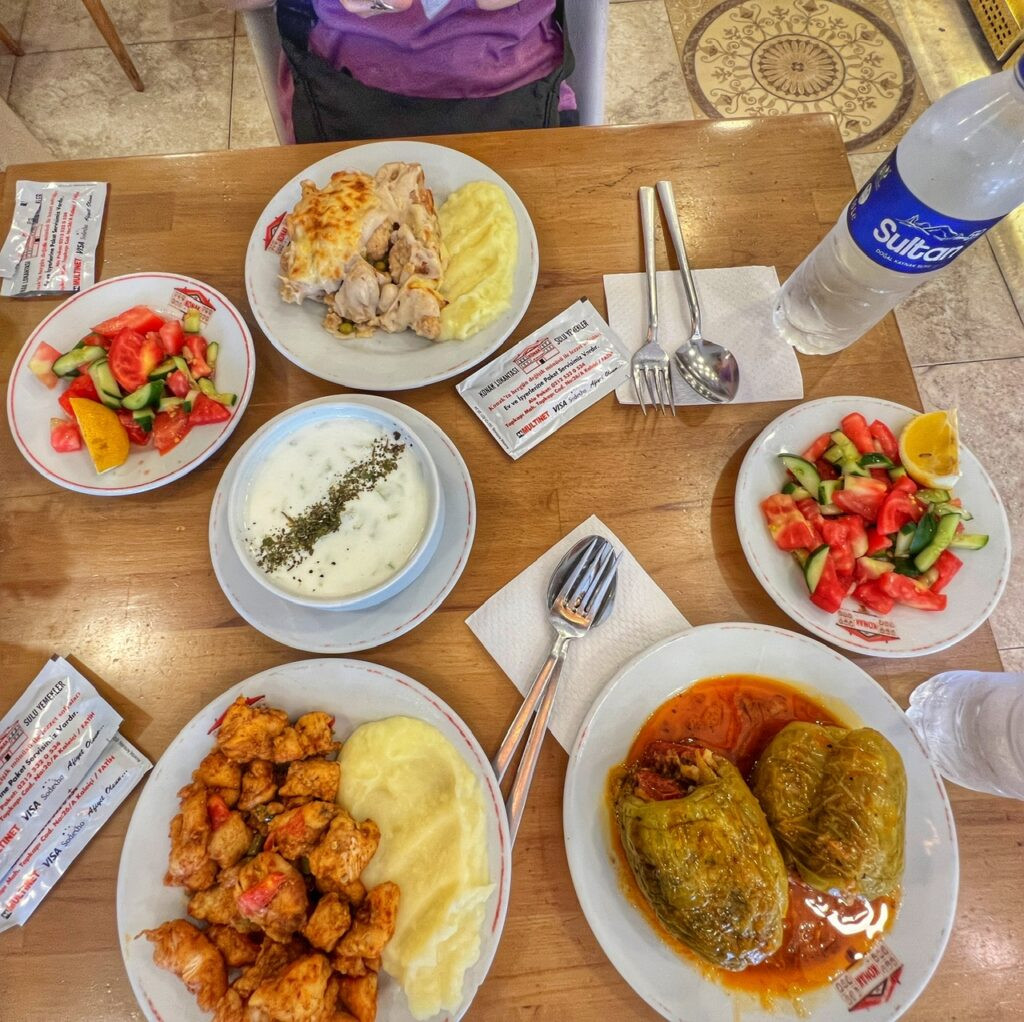
Two other lunches took us to Konak Lokantasi, a traditional Turkish restaurant, because it was good and near our hotel. Our meals ranged from $18-22. A quite similar meal, with one more plate each, cost us $10 in 2022.
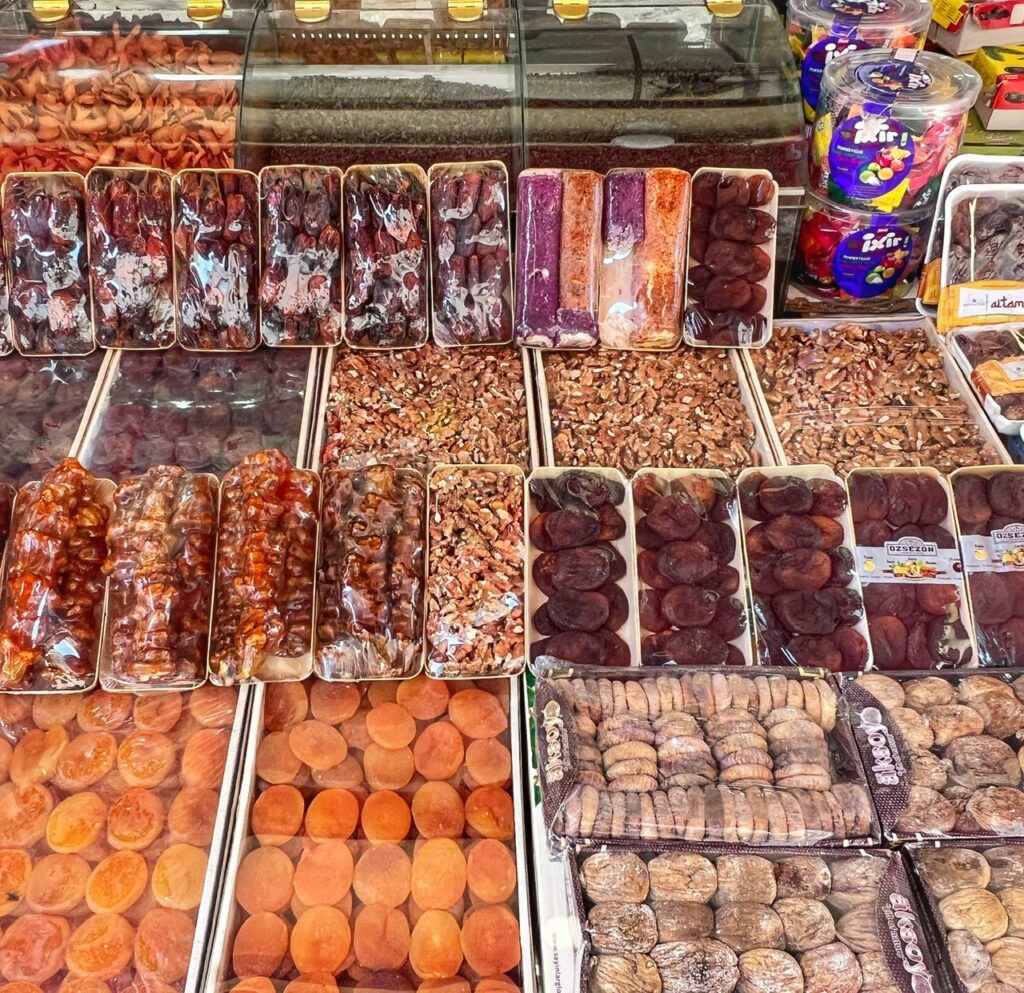
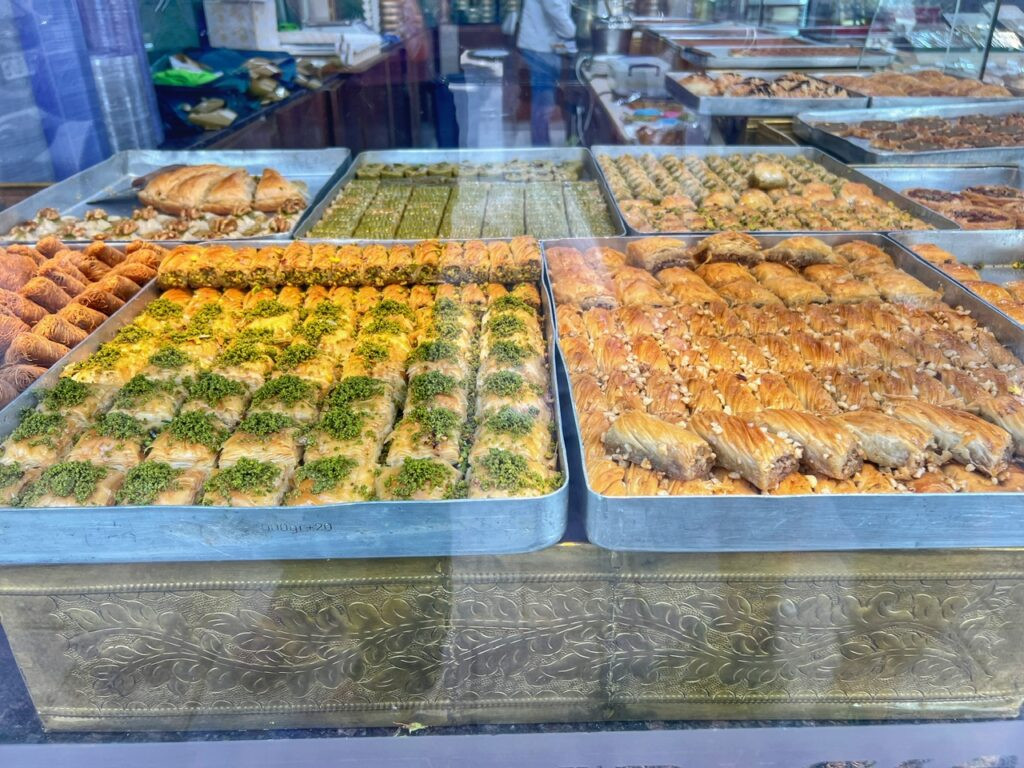
And as much as we yearned to stuff our faces with figs, dates and apricots, we weren’t even gonna think about buying these without prices in the market, although we might have to make an exception for some honey and pistachio-ed laden desserts
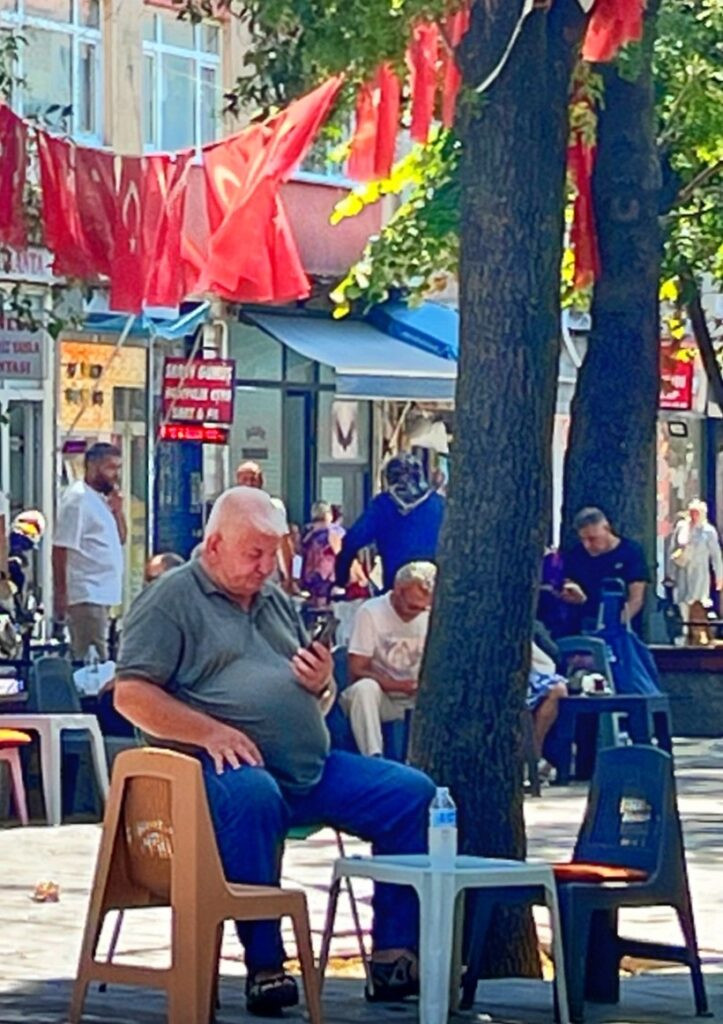
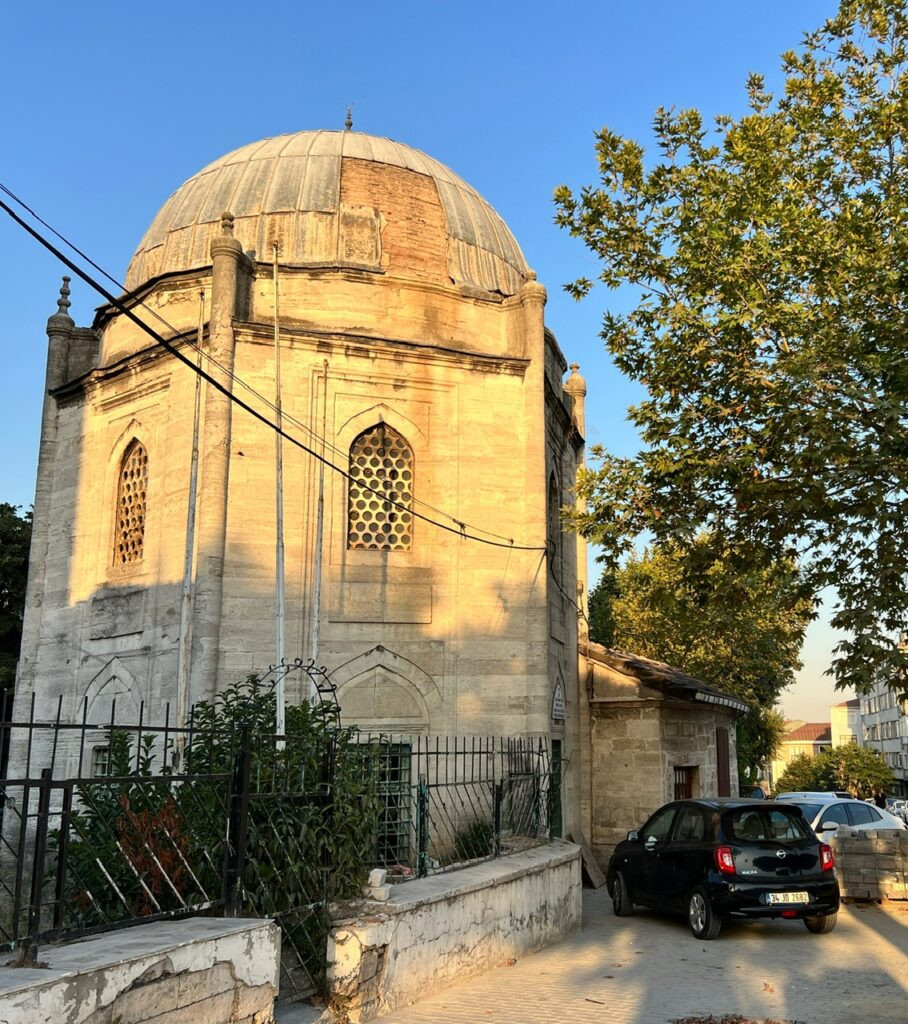
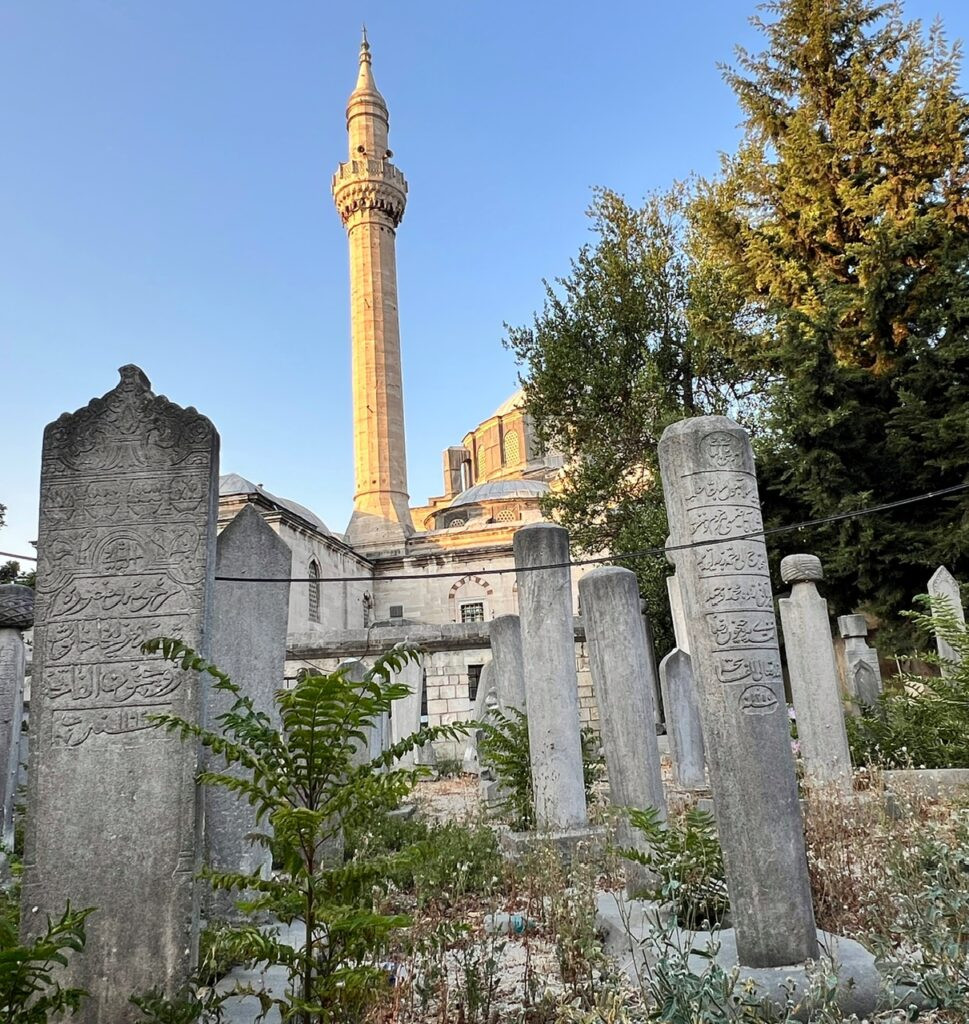
Daily life in Fatih. Even for this older man, it seems his tea hand has made way for his phone. <Sigh>
The tomb of Kara Ahmed Pasa where we peeked through the graveyard onto another hidden mosque.
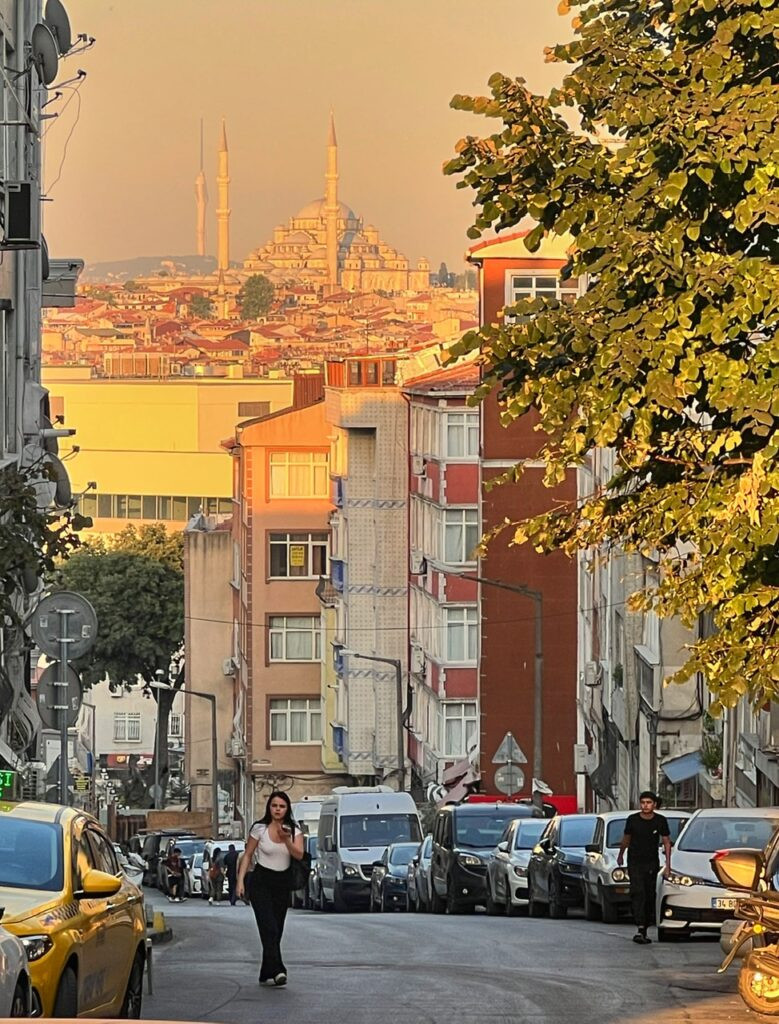
A street scene in Fatih, with the “New Mosque” in the distance. New means 1700s in Istanbul.
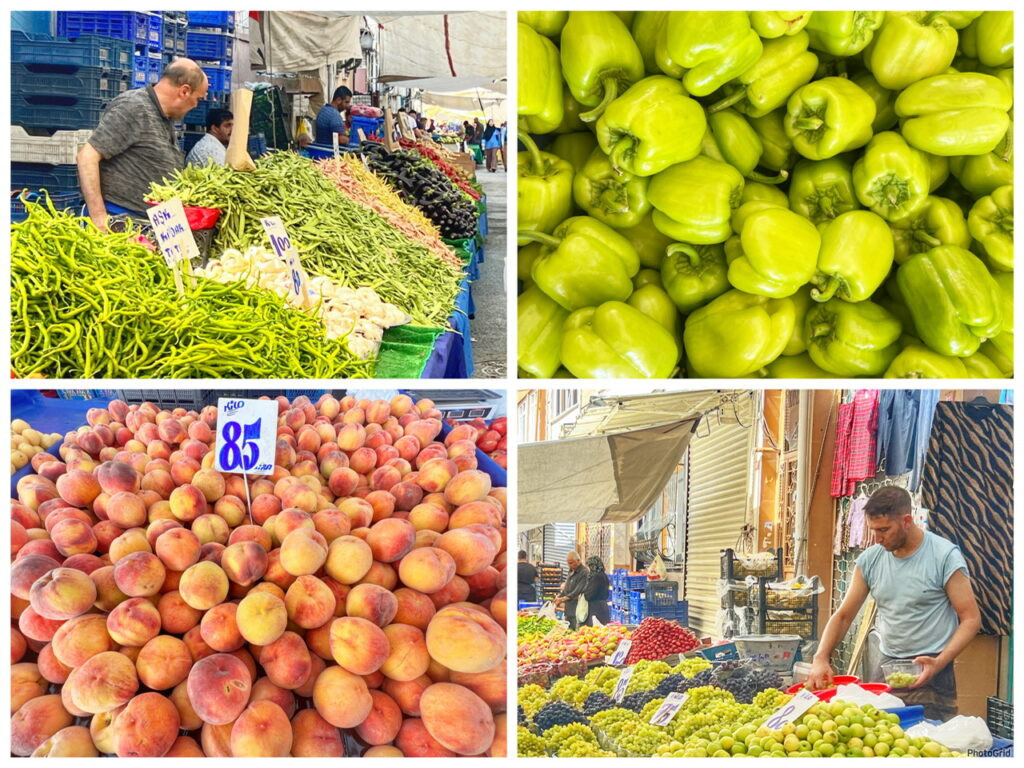
A neighborhood market, bursting with friendly locals and selection. We paid $1 for three peaches.
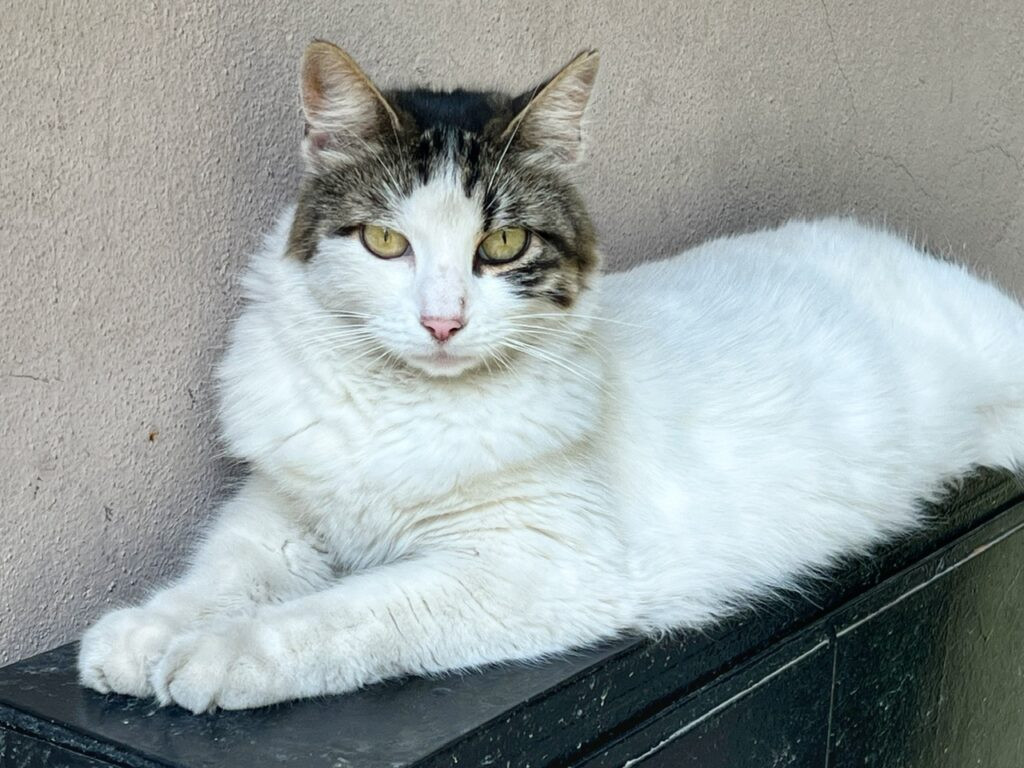
I know. You’re already tired of our cat pictures. I don’t care.
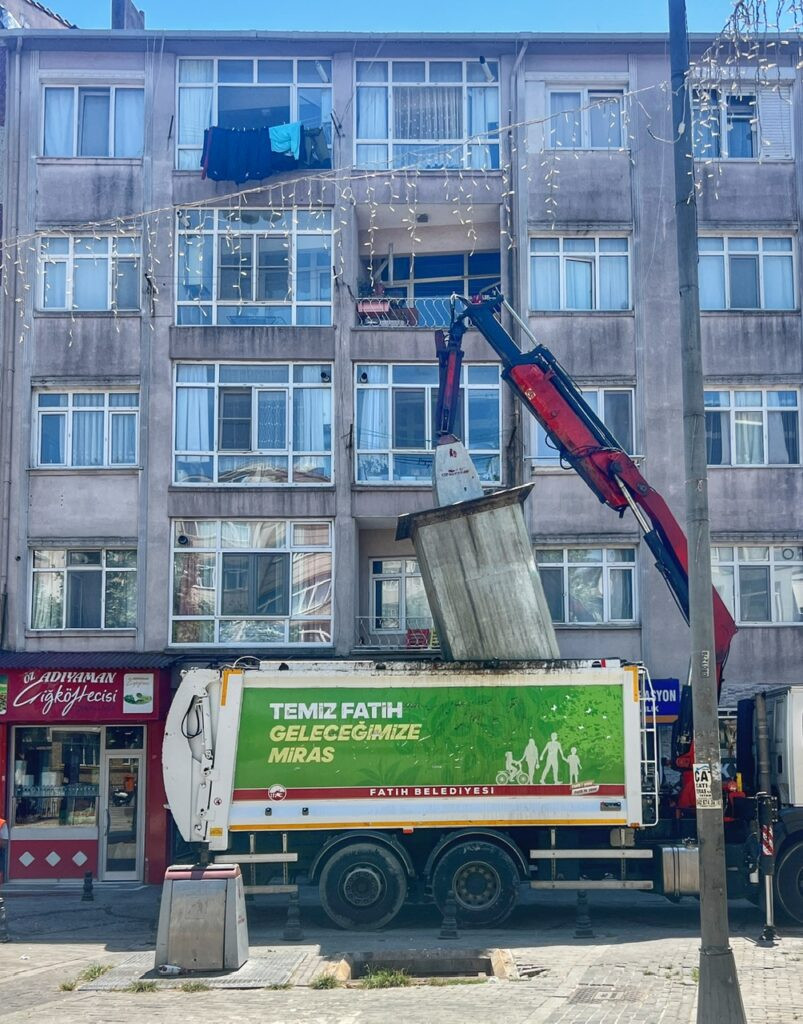
We probably spent five minutes watching this garbage truck, slinging around this rubbish bin quite aggressively near these apartment windows, and then evacuating its contents. If you look at the one on the ground, and compare it to the one in the air, it’s quite amazing how far underground these bins go. Pretty innovative, actually.
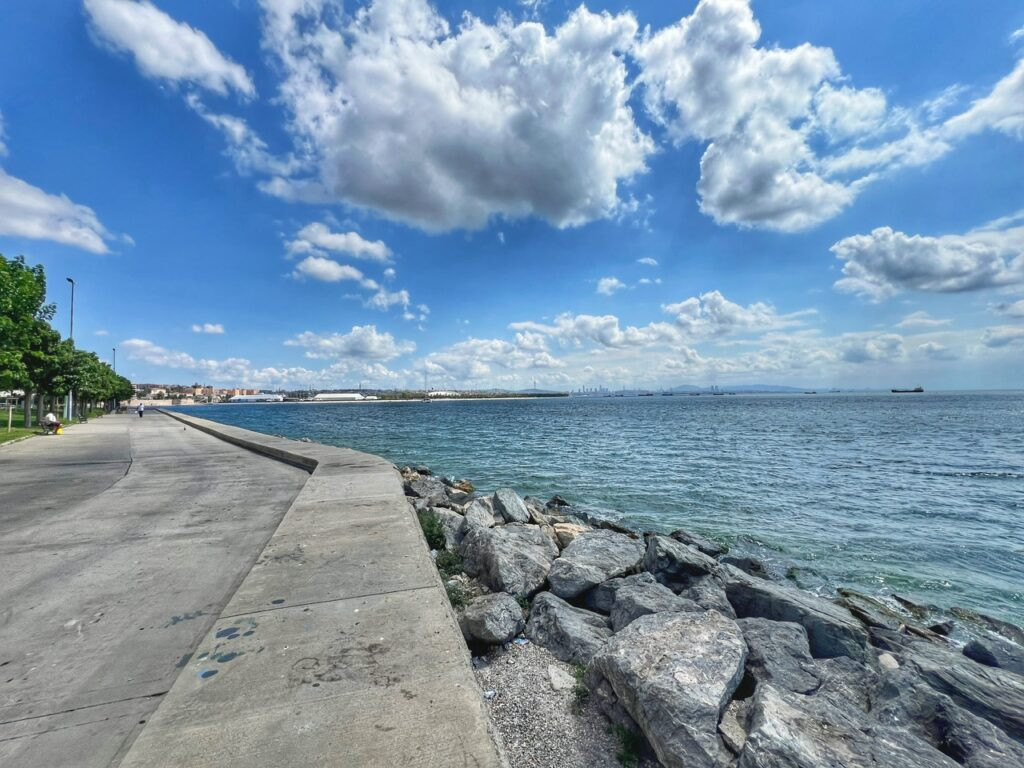
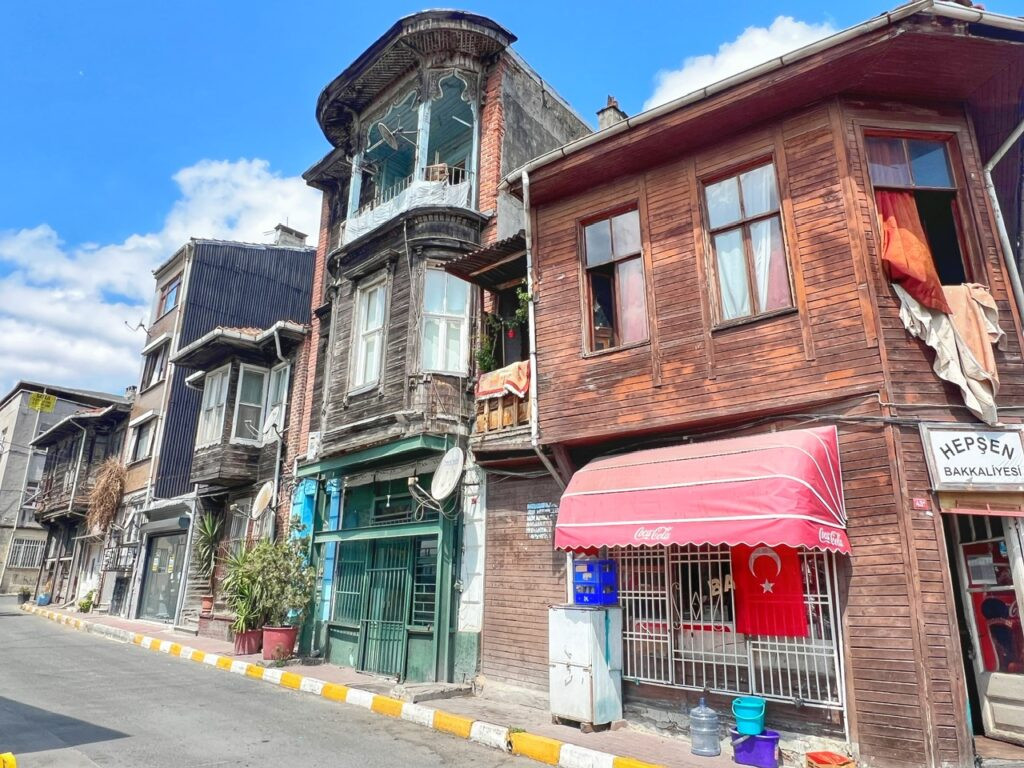
A walkway along the Sea of Maramura, which despite its name is not actually a sea in the true oceanographic sense. It’s actually an “inland sea”, completely enclosed by land and connecting two real seas…the Aegean and the Black Sea. The Bosphorus is part of this unique inland sea system. There are many admirable historic wooden houses in this area.
Checking out Yedikule Fortress
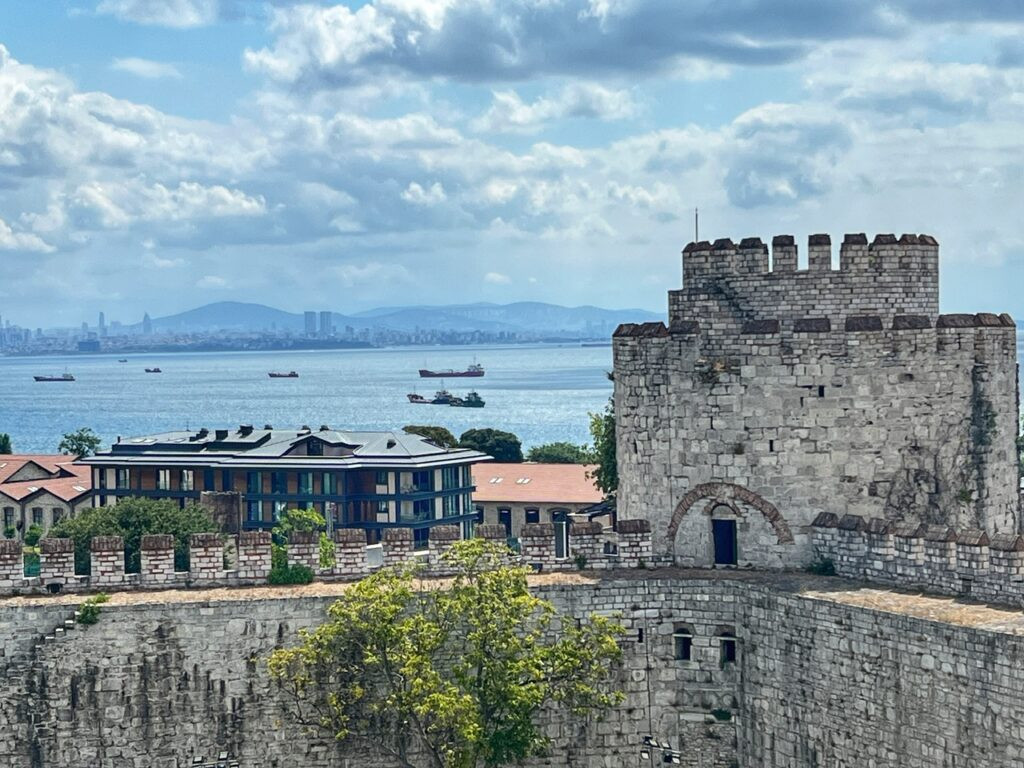
Three trips to Istanbul, and we finally made our way to the Yedikule Fortress, which provides a stunning view over the Sea of Maramura and is unquestionably off-the-beaten-path Istanbul. It has set up shop at the southern end of the historic Walls of Constantinople and was built after the conquest of Istanbul by Fatih Sultan Mehmet in 1453.
“Yedi” means seven and “Kule” means towers. Four of these towers were built by the Ottomans, when it was converted into a fortress, and three by are original Roman-Byzantine towers from the old city walls, built more than 1500 years ago. Here we are inside one of those towers.
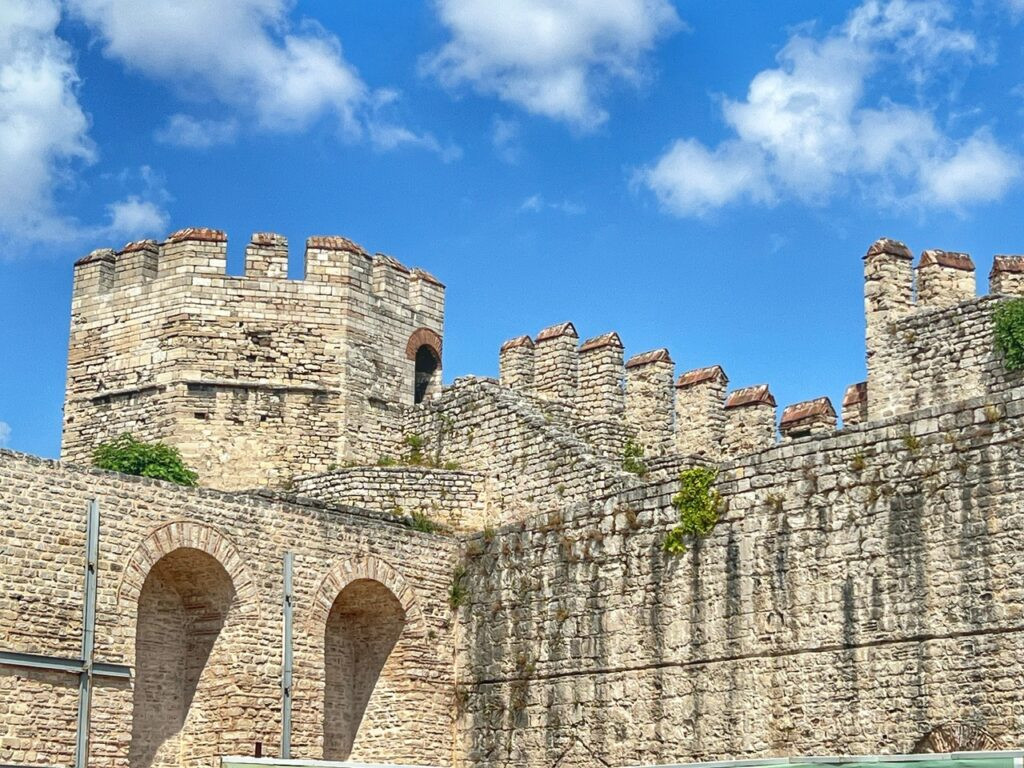
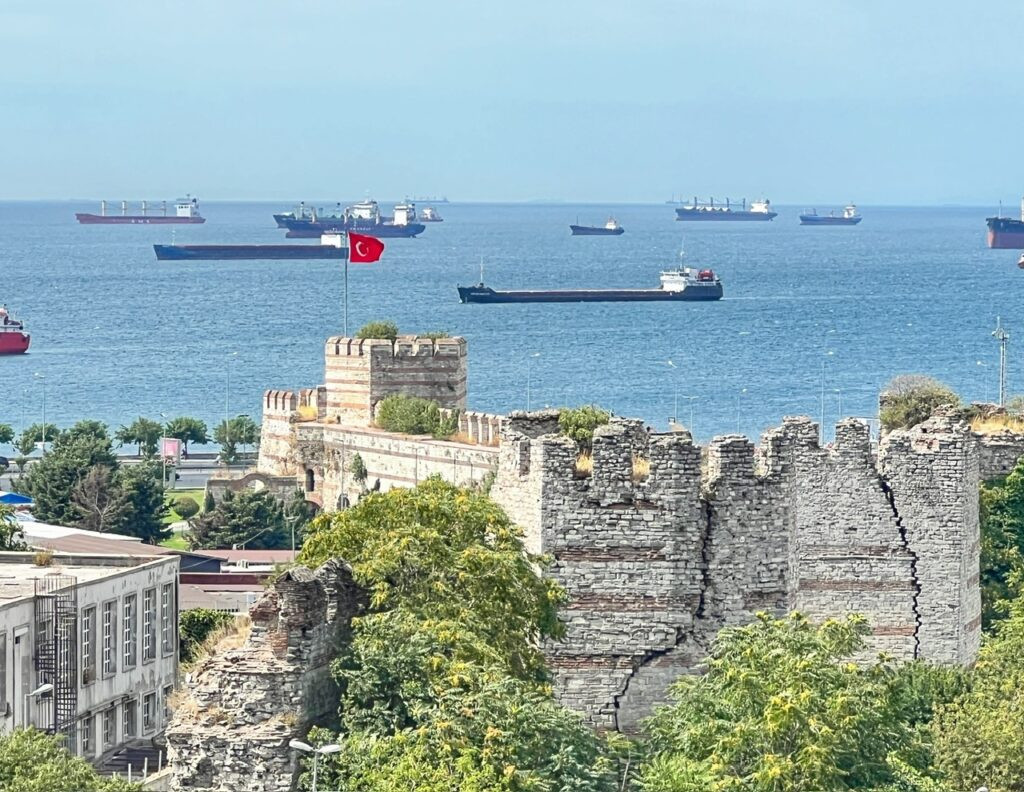
Yedikule was infamous as a high-security prison, particularly for foreign ambassadors who fell out of favor, rebel pashas, and even a few royal relatives. It also held the Imperial Treasury during Ottoman times.
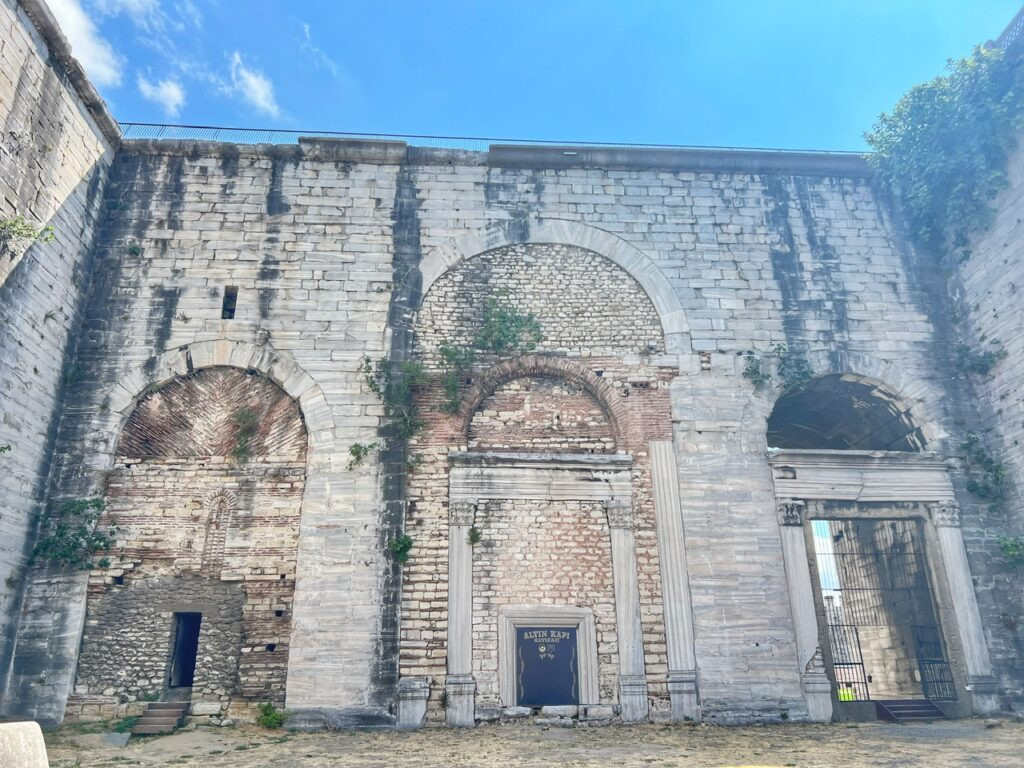
The Golden Gate is one part of the fortress which was leftover from the Romans. Although the exact date of construction is unknown, it is considered that it was built by Theodosius I in the 5th century as a triumphal arch. It is known that the Roman Emperors used the Golden Gate for their ceremonial departure from and return to the city. When it was built first, there was an inscription on the arches, written in Latin with bronze letters, which reads “The one who made the gate in gold created a golden age”. The written sources indicate that there was also a bronze statute of Nike, the goddess of victory, as well as a chariot drawn by an elephant.
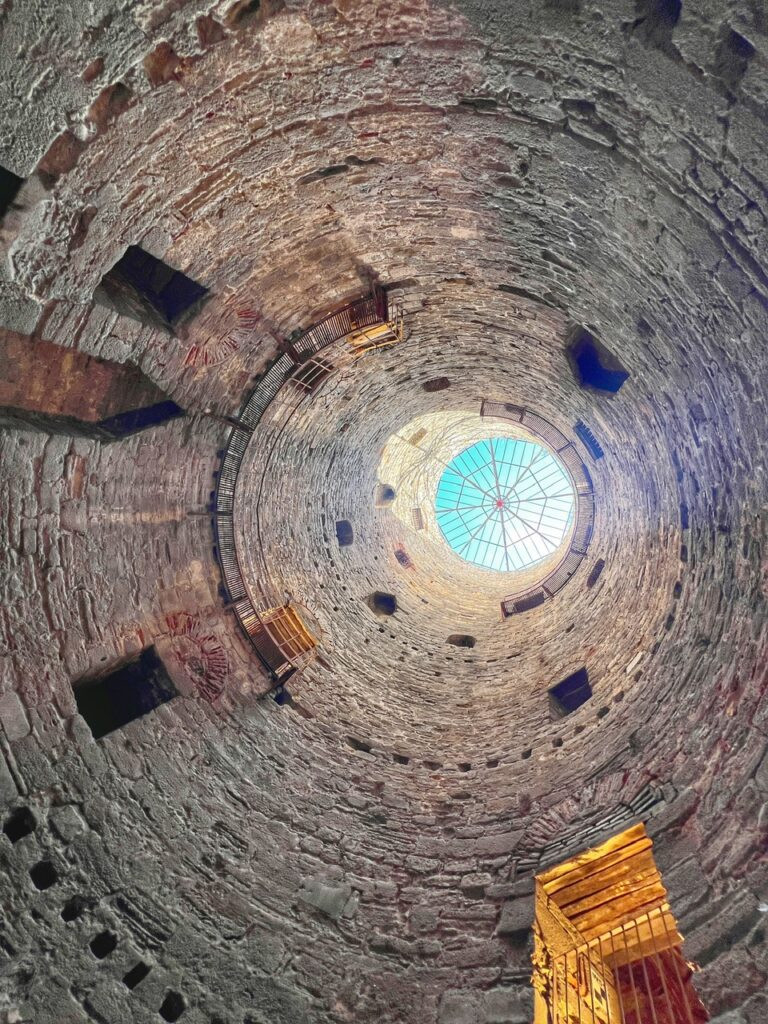
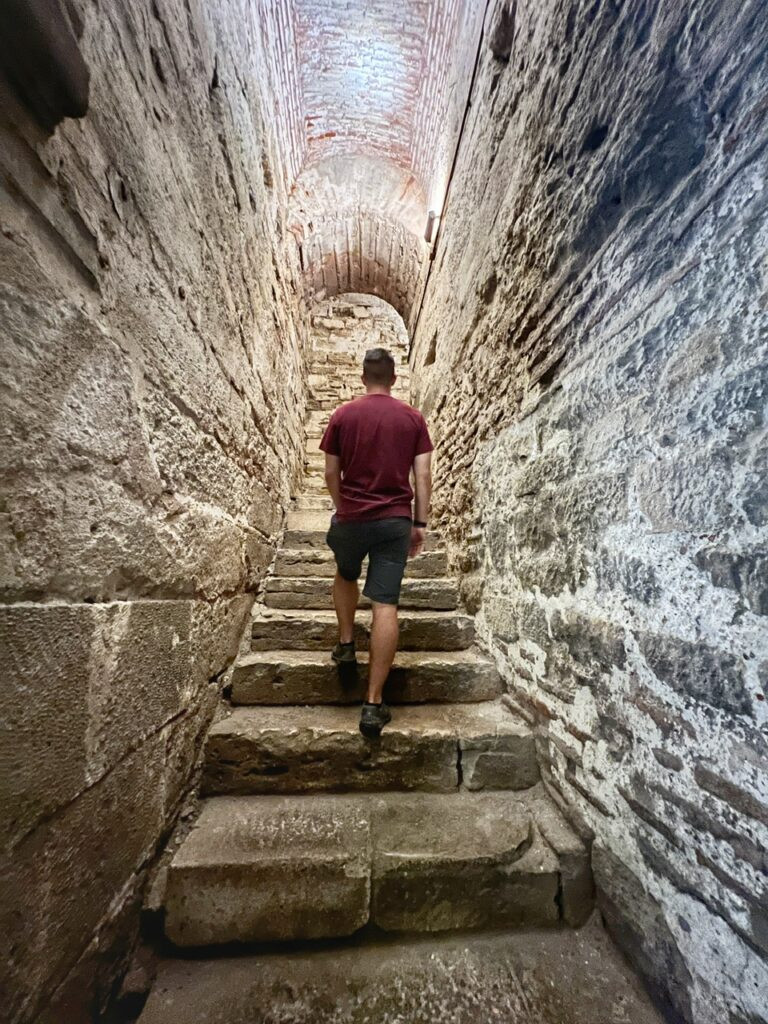
Inside one of the towers, and Greg climbing up the fortress walls. Wow….you are truly part of history here.
ArtIstanbul Feshane in Eyup
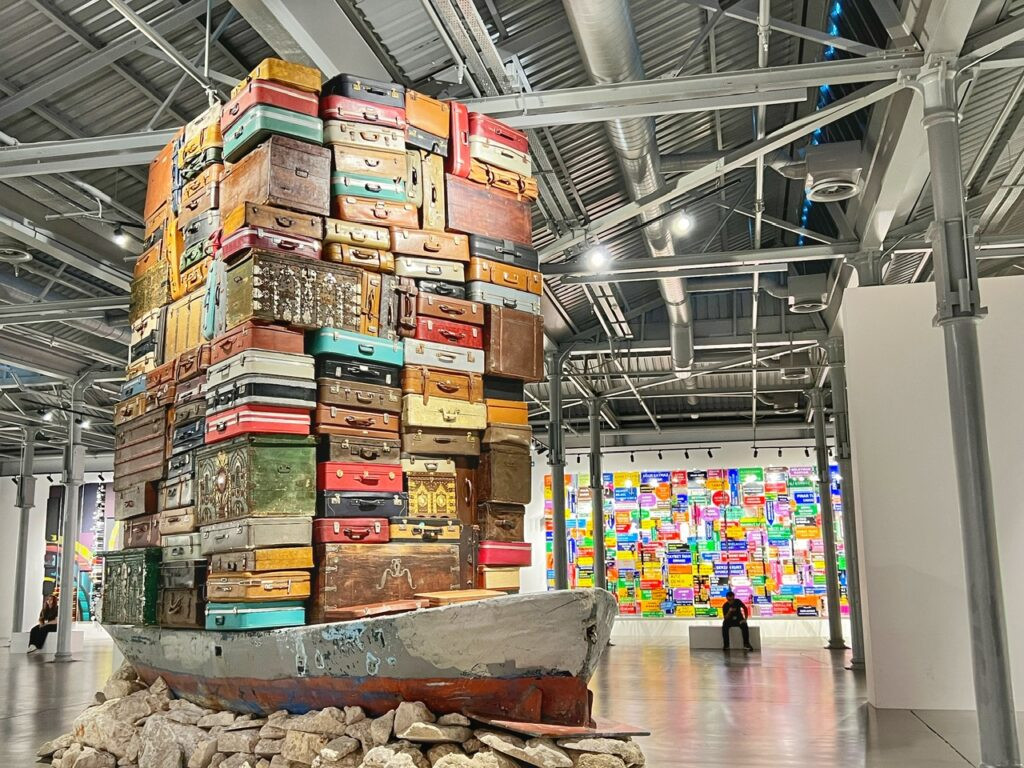
Calling all culture hounds! If you’re looking for something new, fresh, and FREE to do in Istanbul, check out ArtIstanbul Feshane developed in a unique and historic location within the Eyup neighborhood on the Golden Horn. This dynamic cultural and arts venue opened in 2023 in a building that was originally founded in the 1830s to manufacture fez hats for the Ottoman army, marking one of the empire’s first industrial factories.
We got to check out Ahmet Güneştekin’s intriguing exhibition called, “The Lost Alphabet.” It was bright, and compelling, sometimes using repurposed materials, but through the mirrors, skulls, snakes, gas masks, suitcases, we didn’t really have a clue what we were looking at half the time. But alas, isn’t this the point of art?!
According to “Art Dog Istanbul, “the exhibition explores themes of displacement and memory through installations that feature objects burdened with the memories of people forced to alter their geographies. These works confront viewers with the painful reconciliations of personal and collective pasts. Additionally, the exhibition includes video and sound pieces with micro-rhythmic structures that expand the scope of historical narratives.”
The most provocative piece for us was the rowboat heaped with suitcases of yesteryear floating amidst the gallery floor, which we gathered represents the life of a refugee. Coming from the inside of those suitcases came an eerie sound which added to the sensory experience….the gentle sound of a kitten crying.
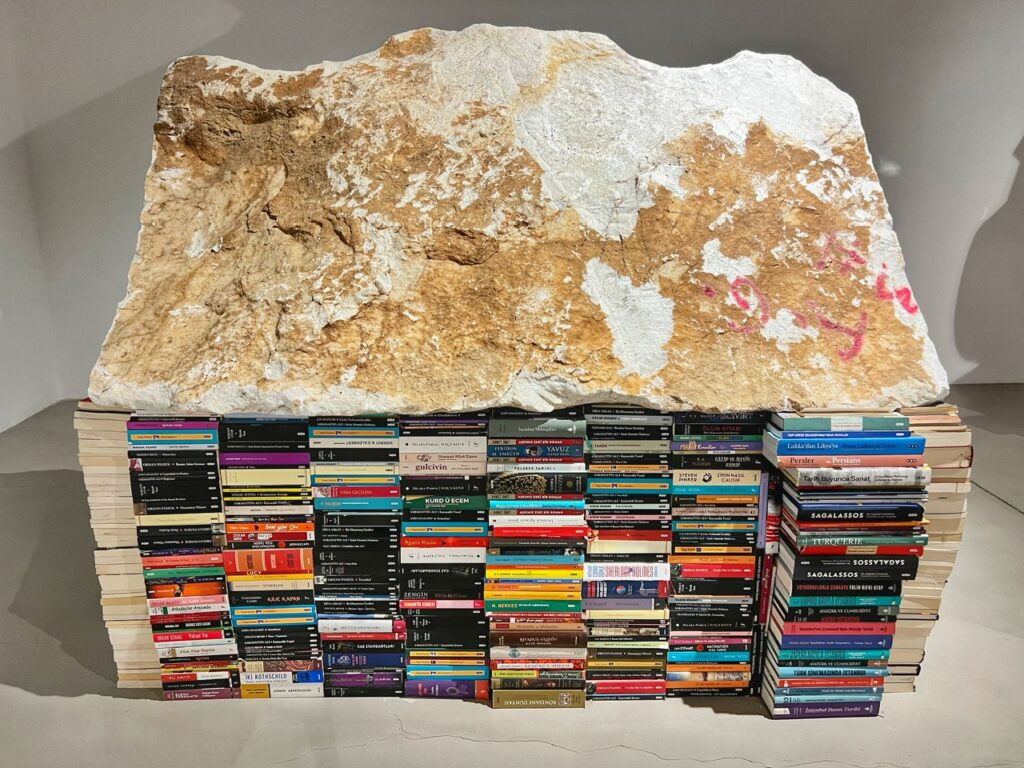
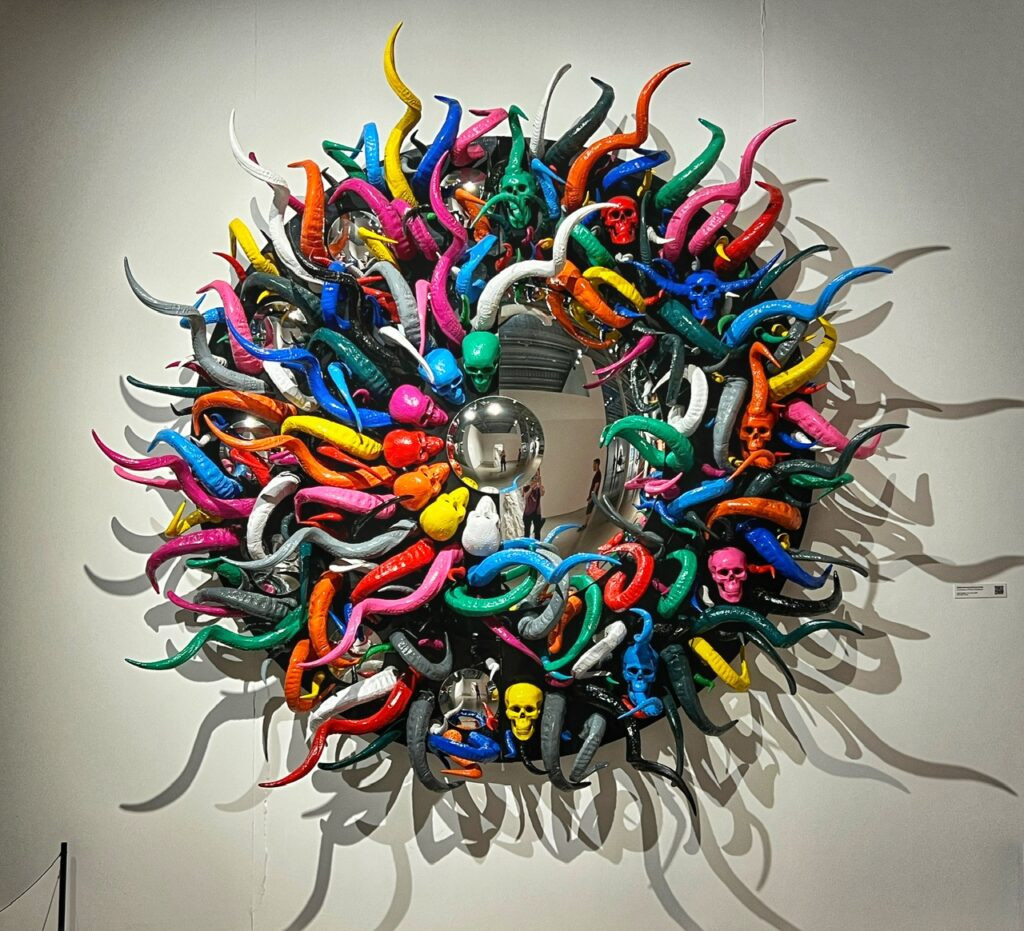
Books as art. According to the museum sign, “The common thread among these works is the memories carried intensely by individuals displaced from or forced to change their geography. The objects in these works bear this weight. I study the objects as possessing the capacity to initiate dialogue. The mistake lies in thinking that social networks consist solely of humans. They do not; they include humans connected through shared objects. Hence, objects can also become the focus of dialogue within physical galleries. An artwork might contain a subtle surprise or depict a discomforting historical image that demands discussion.”
This second one was called, “Guardians of Wall of Kindness,” which perhaps has something to do with self image since there’s a mirror?
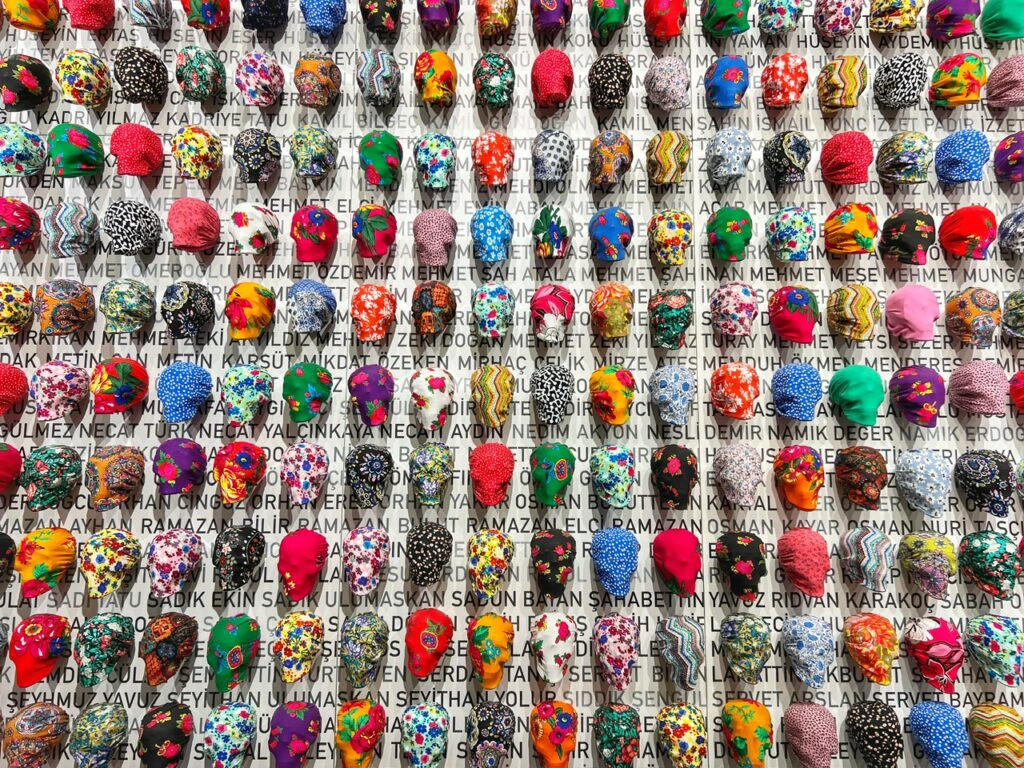
A colossal, and a bit overwhelming, wall of fabric-sheathed skulls.
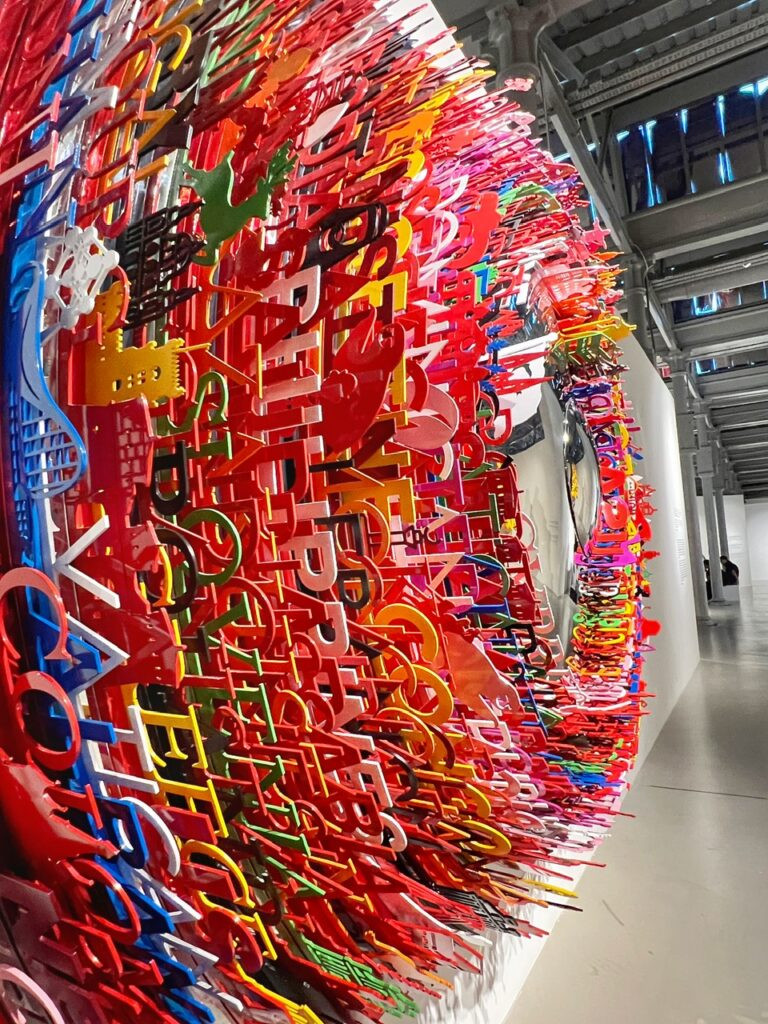
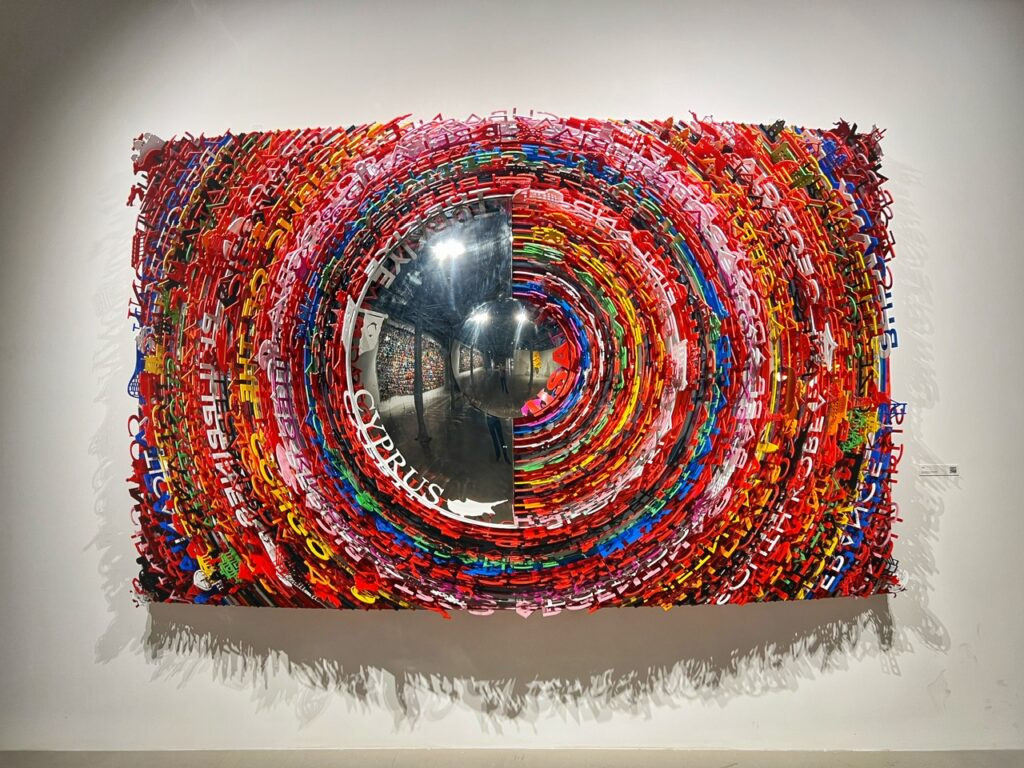
Naturally, we gravitated to the work entitled, “Atlas,” which seems to be a more prismatic, and quite jumbled way to denote all the world’s countries. We’re guessing the mirror represents your place within that tremendous jumble?
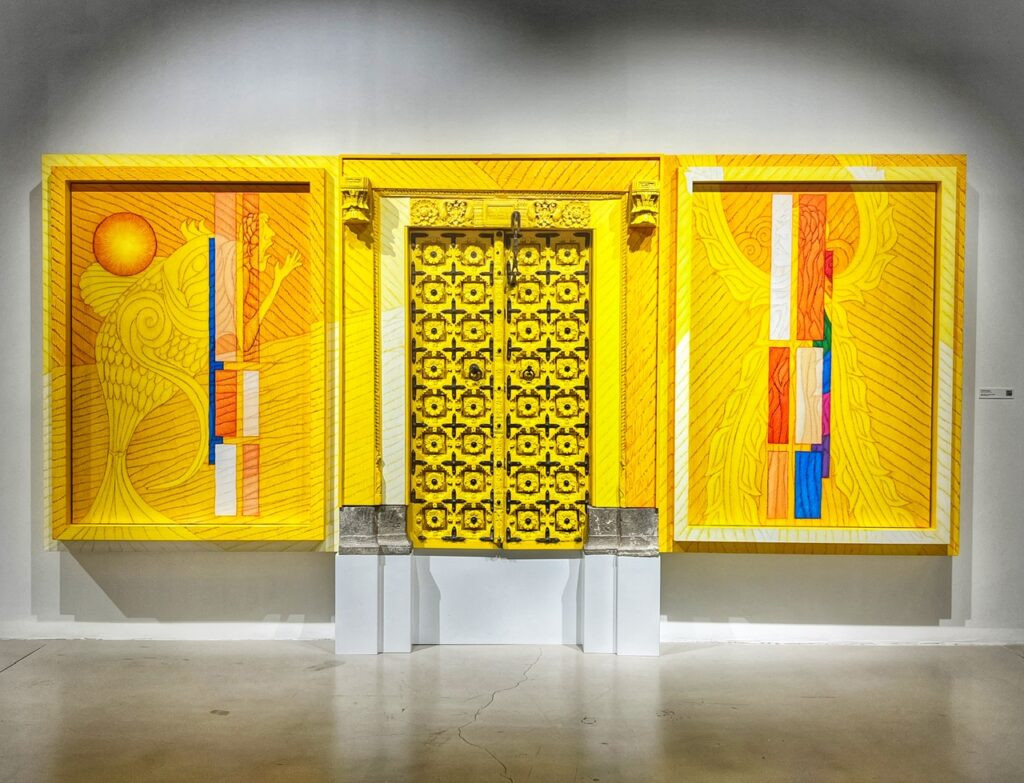
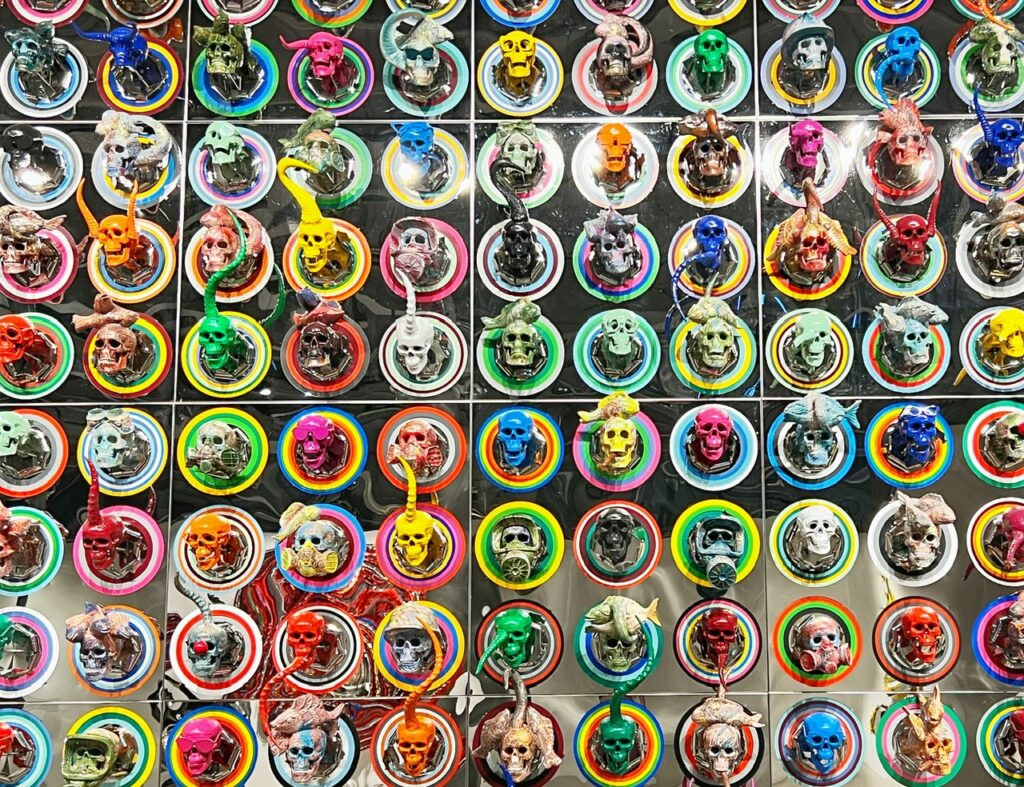
A series of the works were cheerfully colored doors, probably repurposed, with accompanying perplexing images like fish chowing down on men. Mmmm….k. In other art…some child’s nightmare.
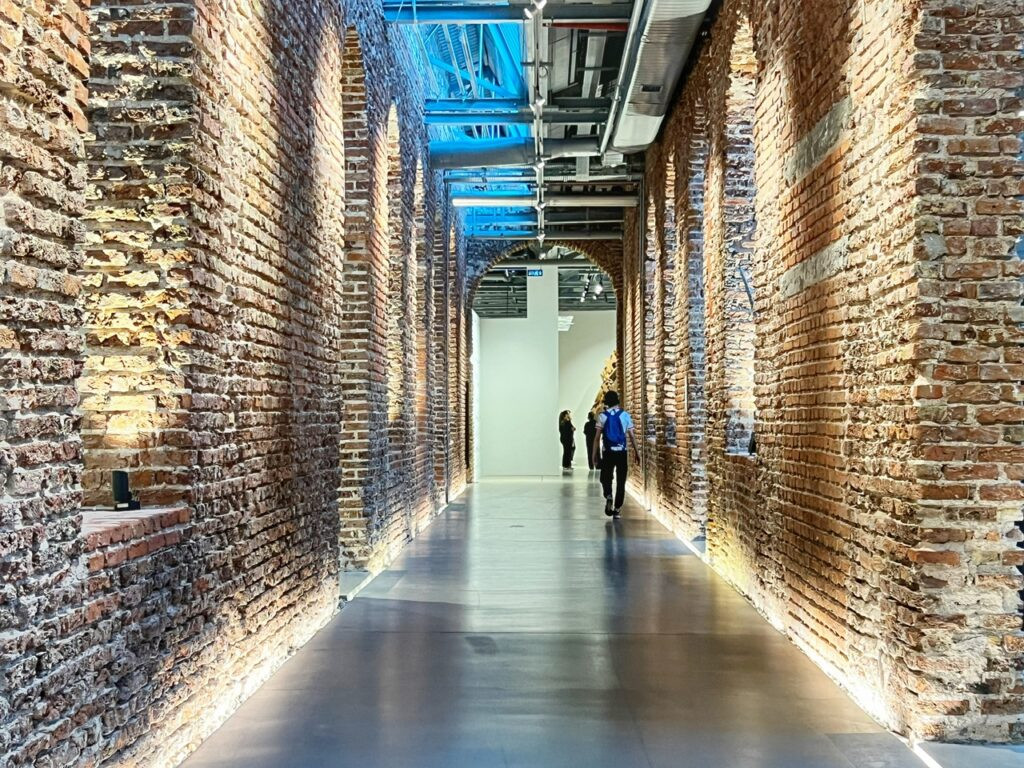
The massive corridors of the former factory.
Kuzguncuk Neighborhood
After an 8-month hiatus, we leapt the Bosphorus and wandered back into Asia where we would be for the next three months. For our Sunday activity in Istanbul, we chose to bus further afield from our base in Kadikoy up to the buzzing and colorful neighborhood of Kuzguncuk, which is perched alongside the Bosphorus in the Uskudar District.
Its tree-lined cobbled streets feature perfectly preserved 19th Century candy-colored wooden homes, an area once home to Jewish, Greek Orthodox, Armenian and Muslim communities all living side by side…an unusual example of harmonious relationships in Ottoman Istanbul.
Combine this eye candy with lush surrounding parks, felines napping in amusing positions and places, umbrella-dusted alfresco cafes, superb produce displays, and trendy eateries, and you’ve got yourself an idyllic Sunday morning.
Yep…it may just be our new favorite jaunt in Istanbul…
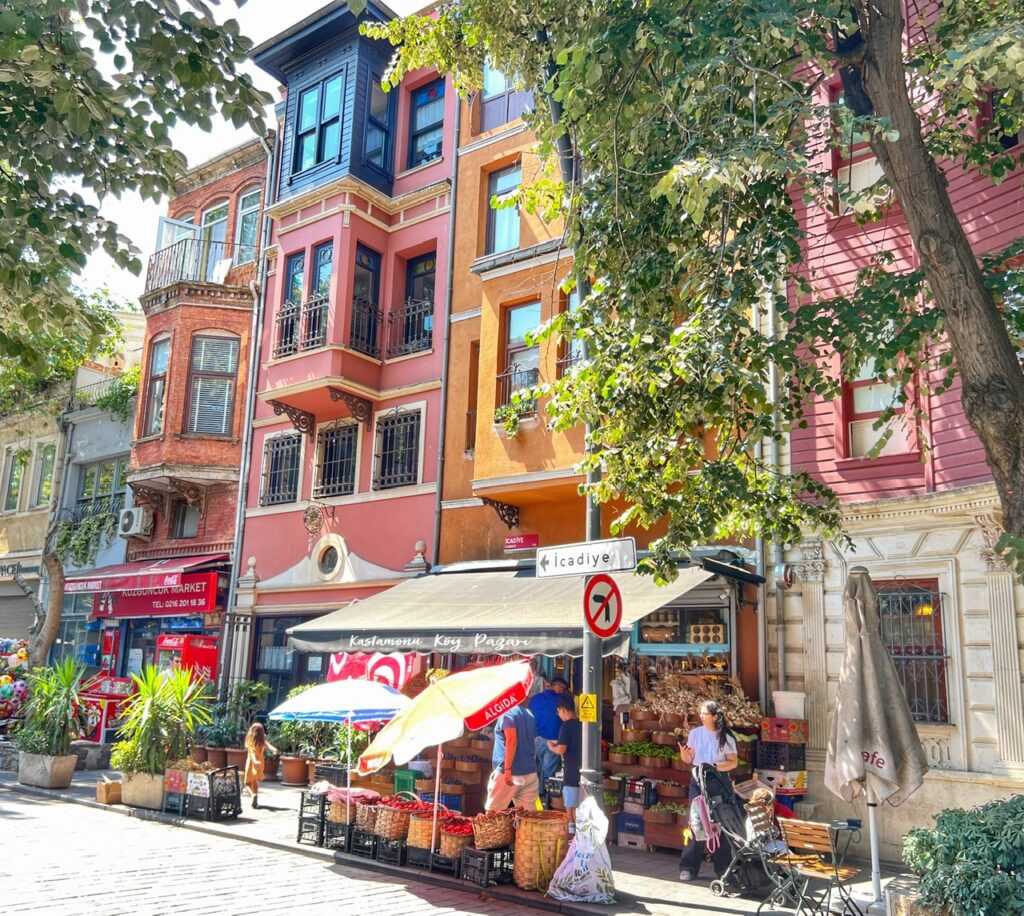
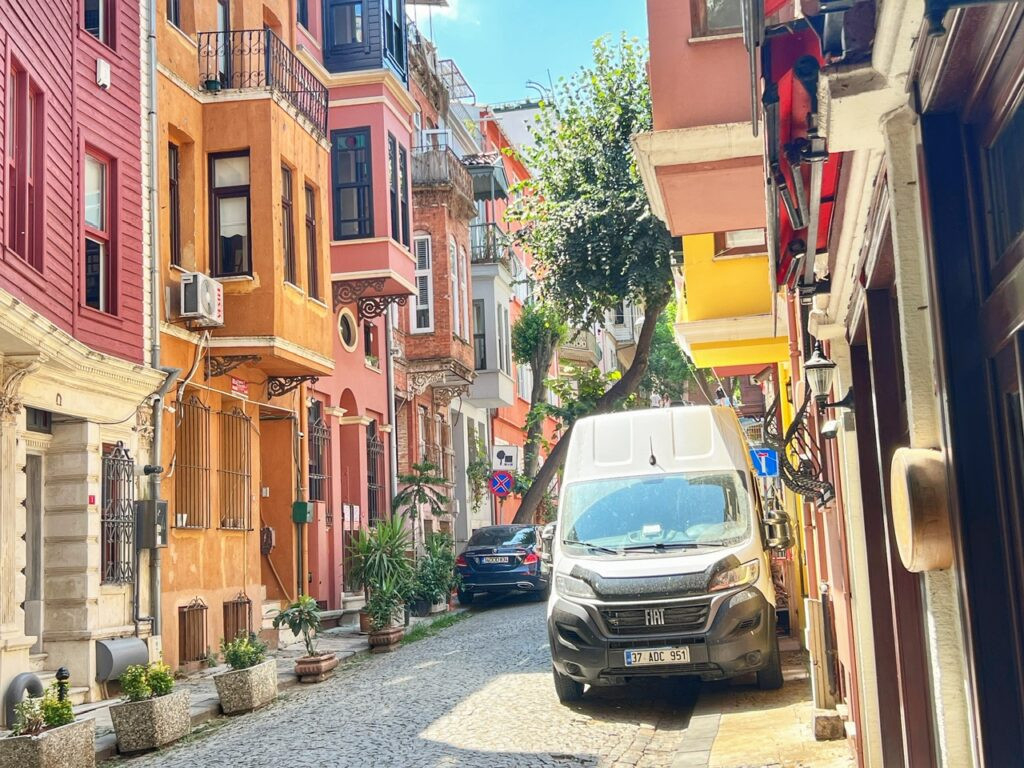
And we thought the Balat neighborhood was cute!?!
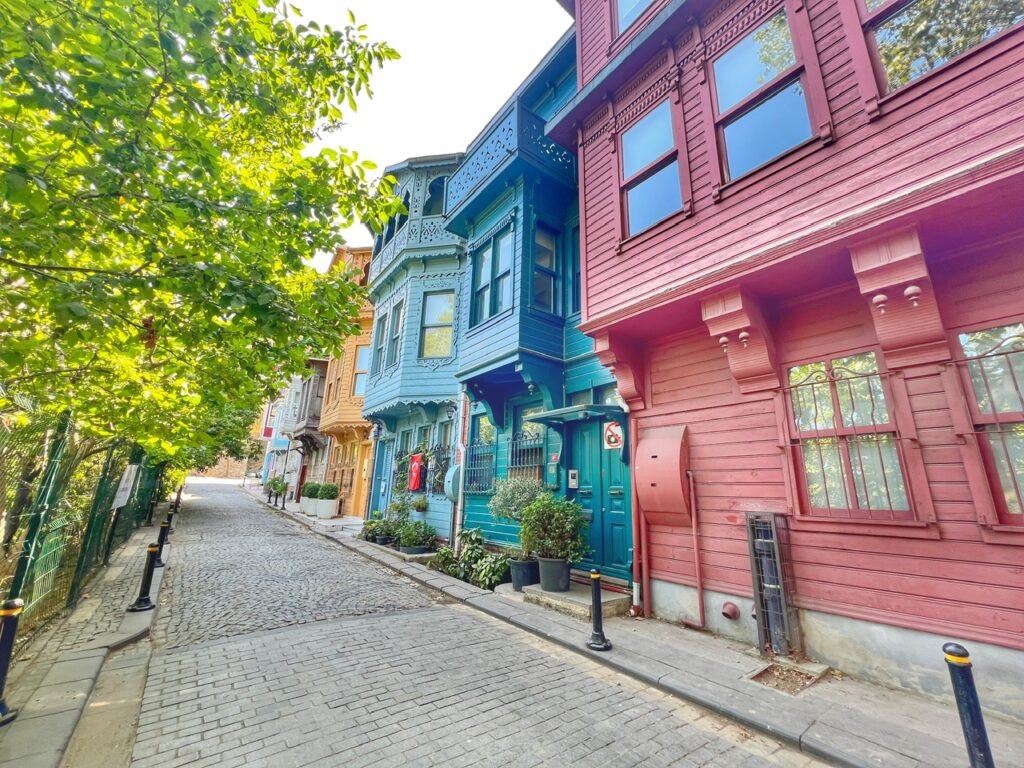
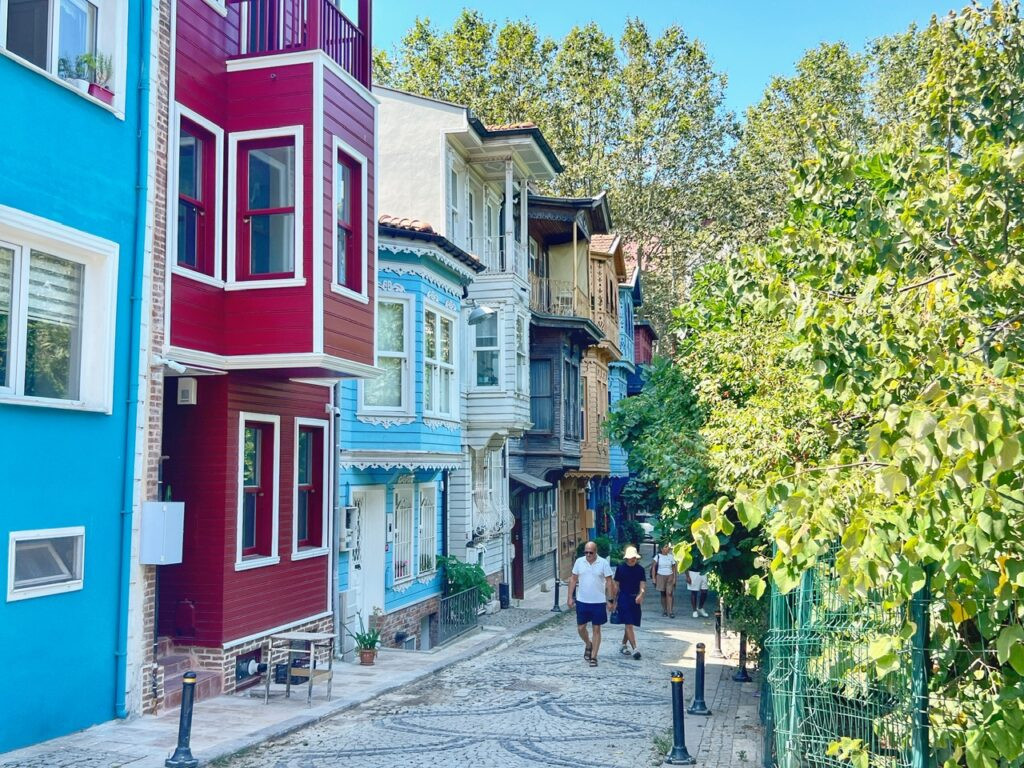
This particularly picturesque street is known as Ahsap Evler, which simply means “Wooden Houses.” Wow…if only all the houses in Istanbul were preserved in this way!
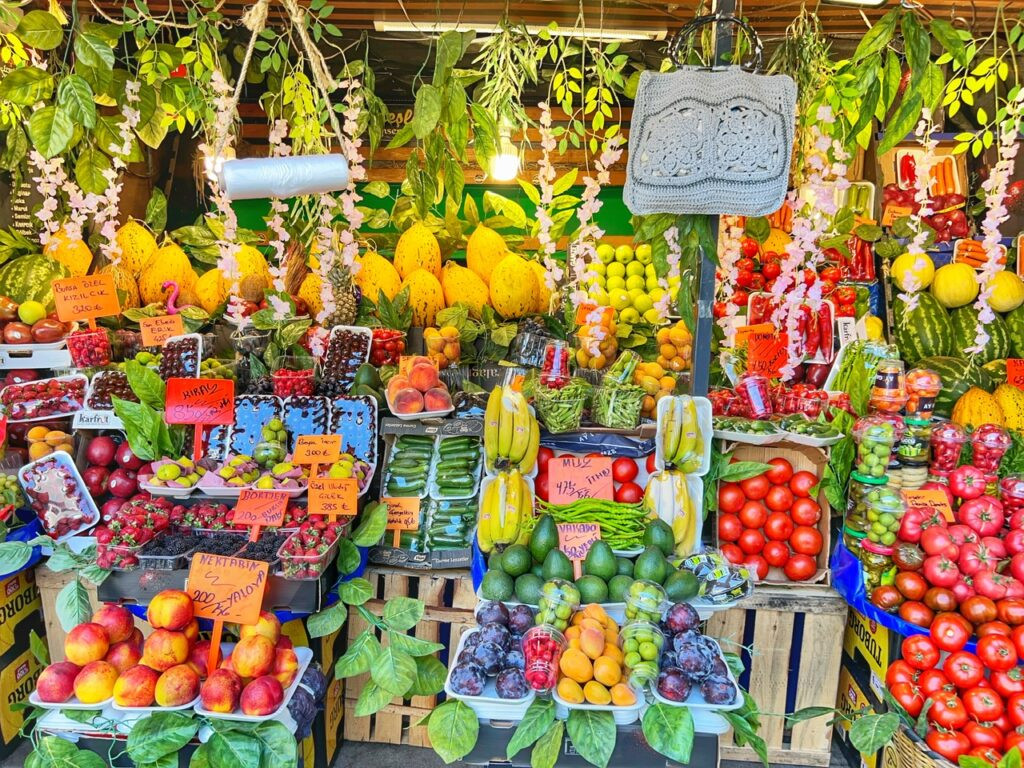
This produce must be fake…it’s way too aesthetically pleasing to eat.
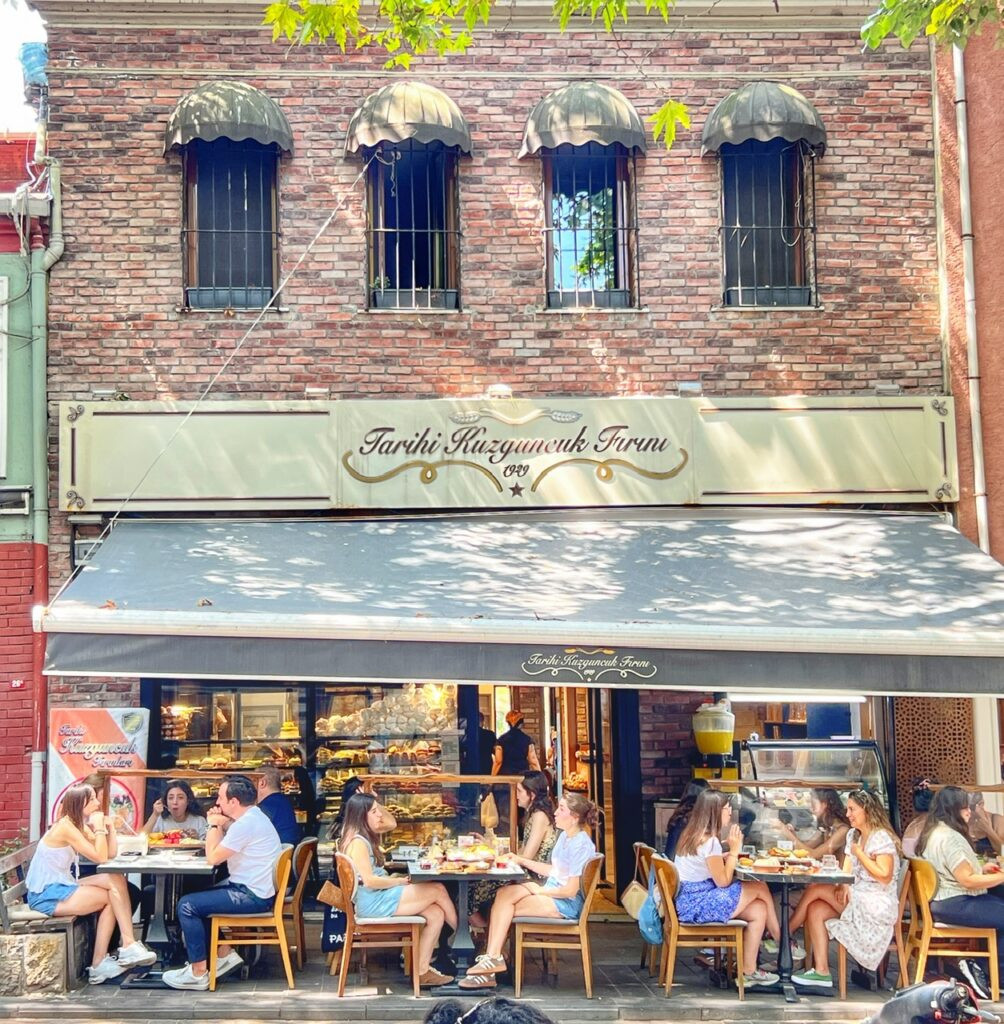
Are you sure we’re in Istanbul?! This feels more like Italy…
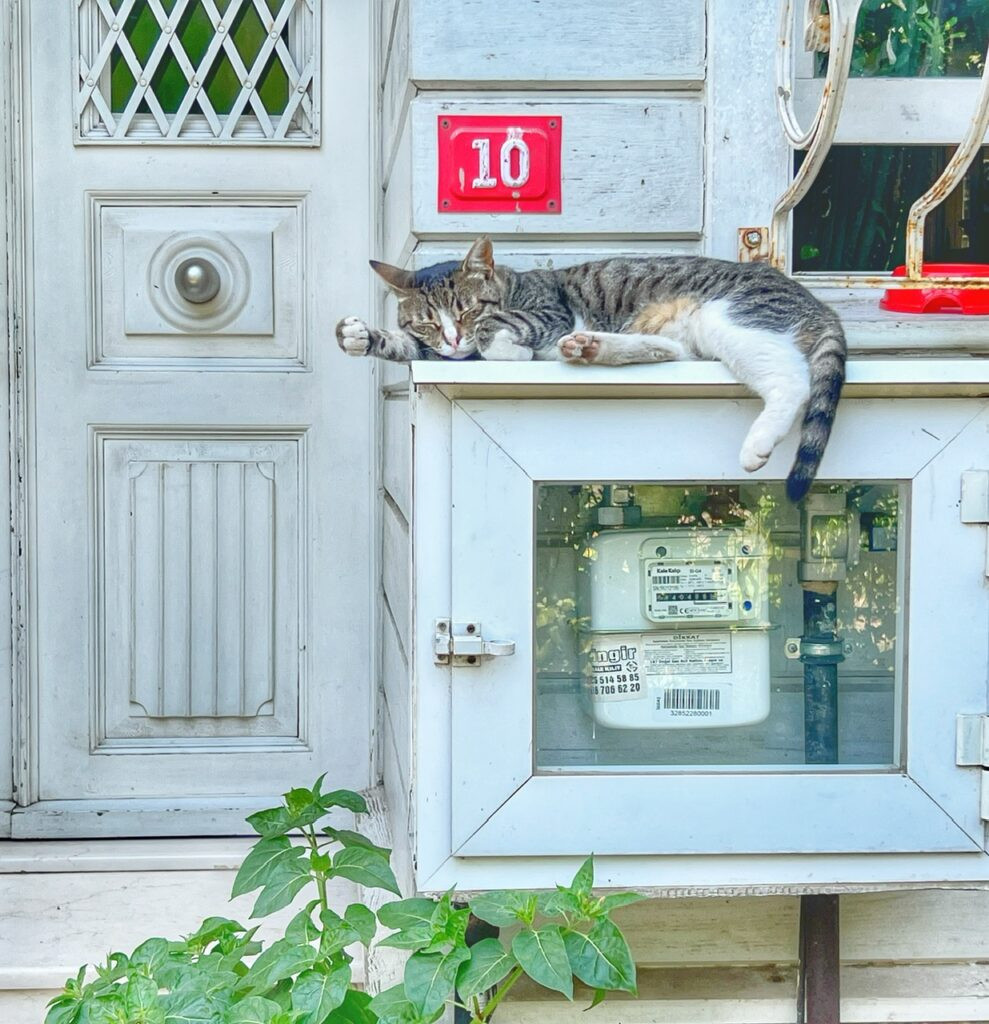
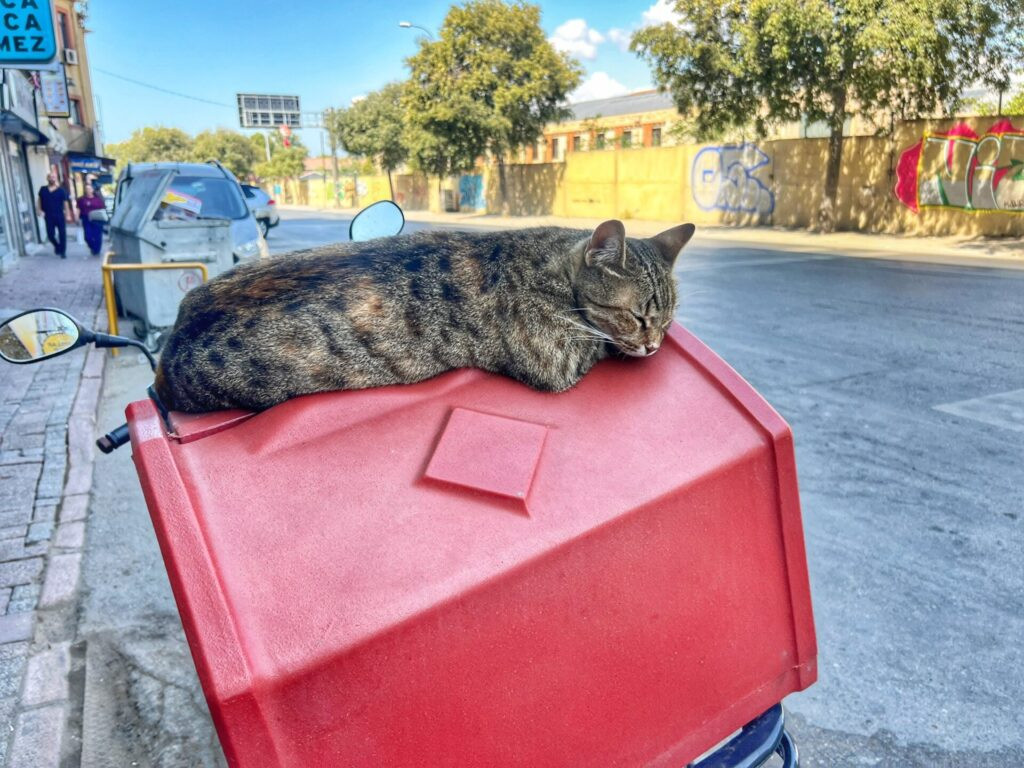
Ah…hem….…Catstanbul. Because…why wouldn’t you snooze on the back of a motorbike?!
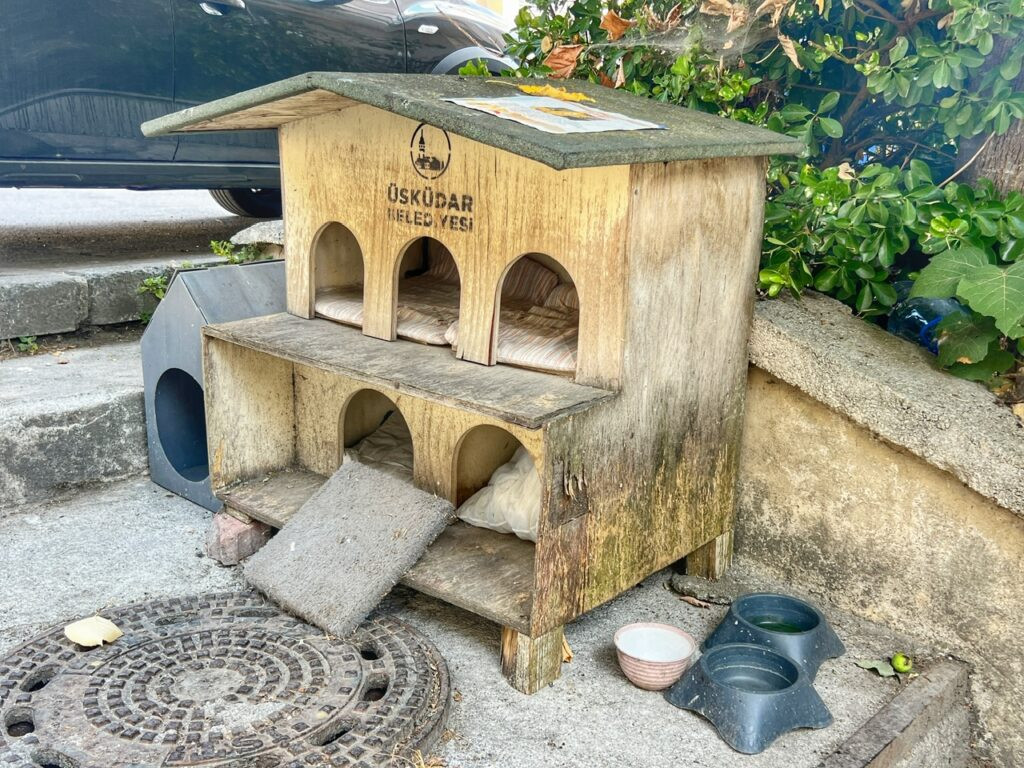
City sponsored cat chalets for off-season habitation.
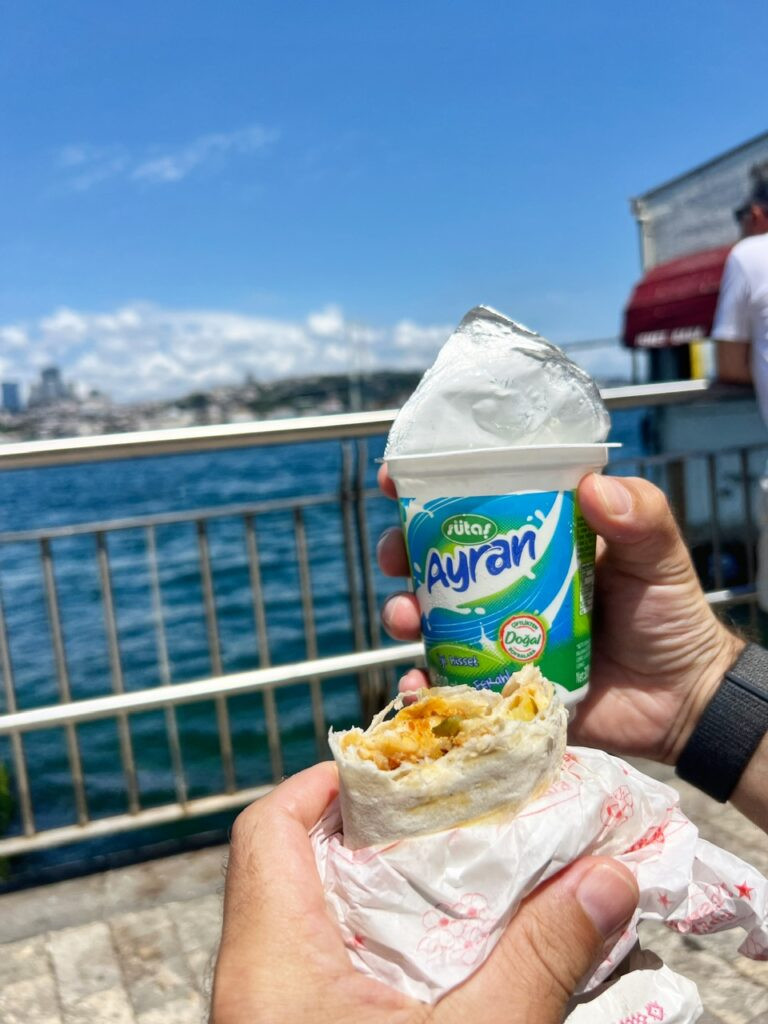
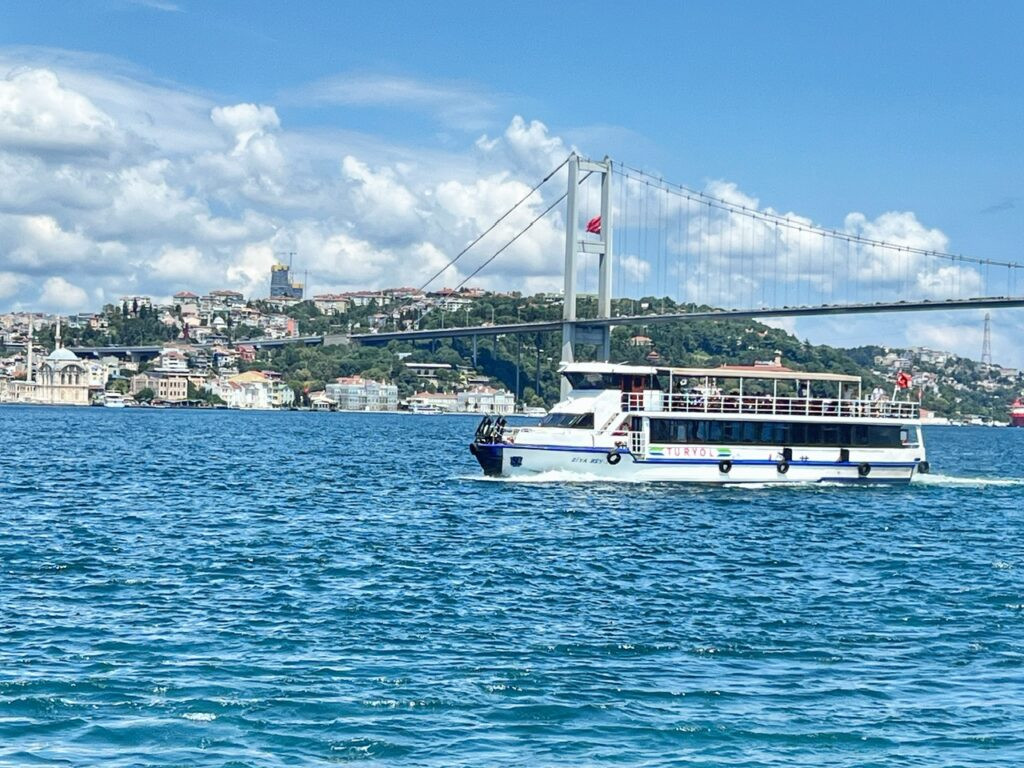
Most meals in the neighborhood were going for about 350-450 Lira, which is $8.50-$11 each, so we decided to eat “cheap” and grab chicken doners and ayran to eat along the water. This meal was about $5 total in 2022. We paid $15 in 2025. The doner alone was $6 each. (But yes, for those curious, it was far better than the Bulgarian version.) Fortunately, we later found doners for $2.10 in Kadikoy which is a little more like it. The view of the Bosphorus though was pretty priceless…
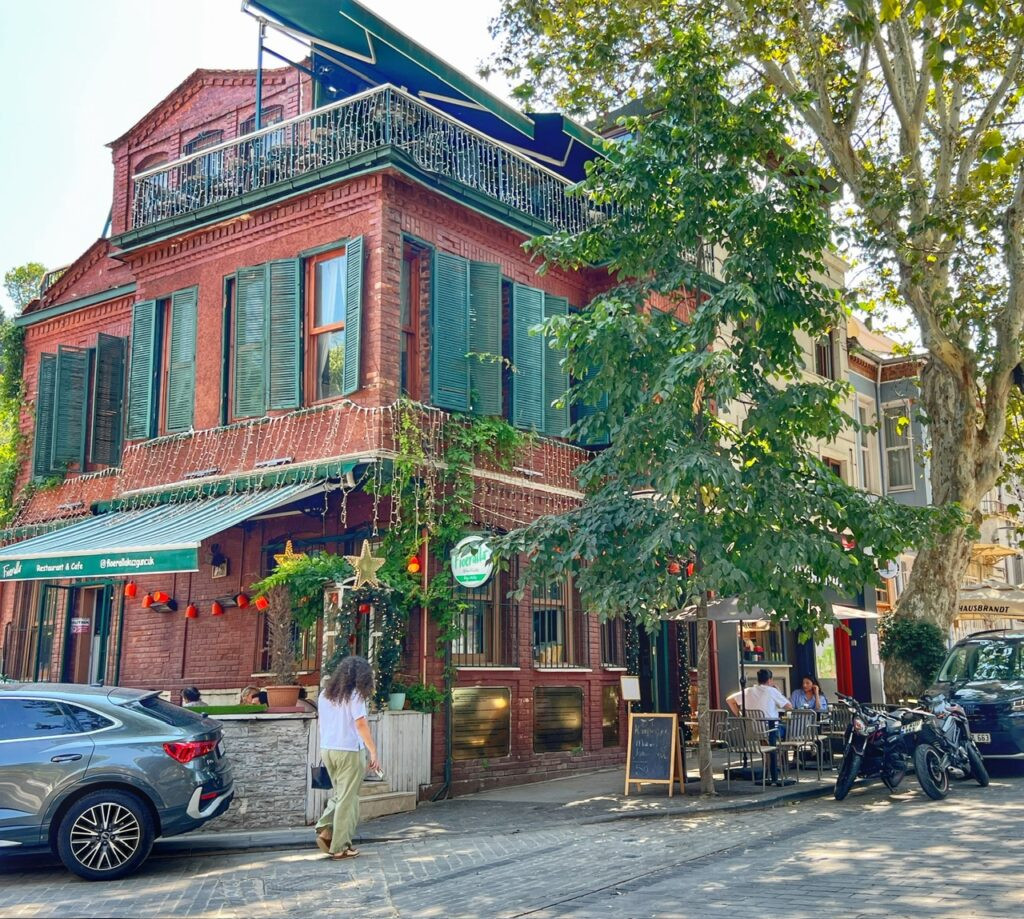
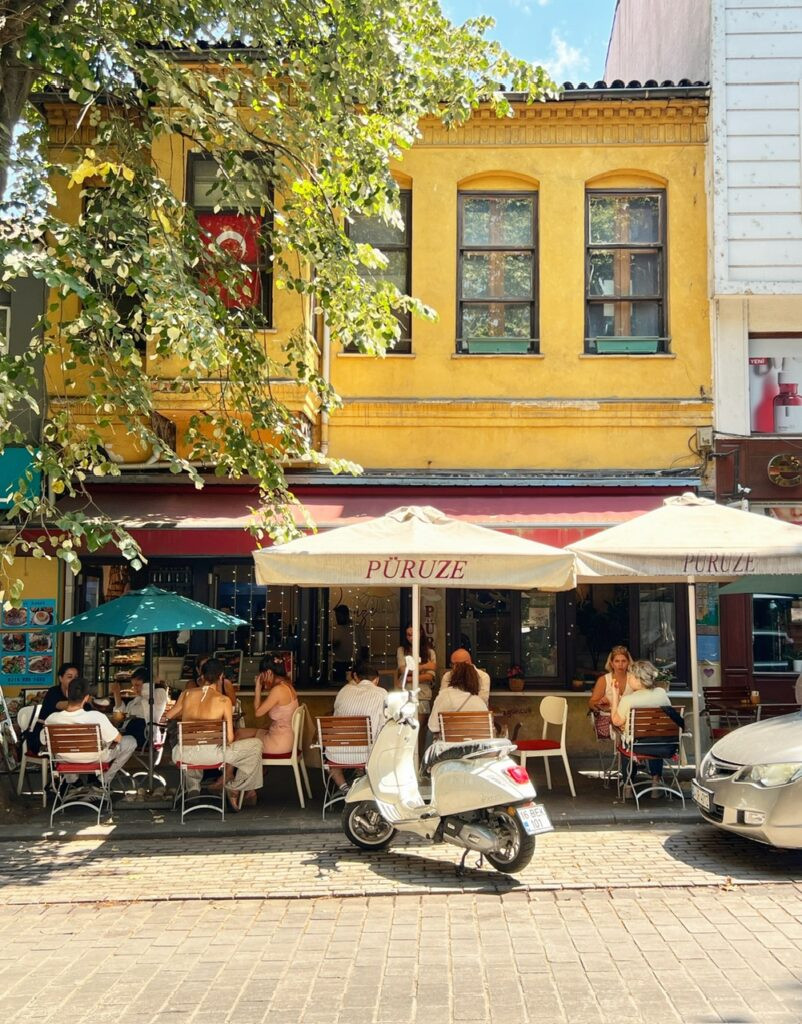
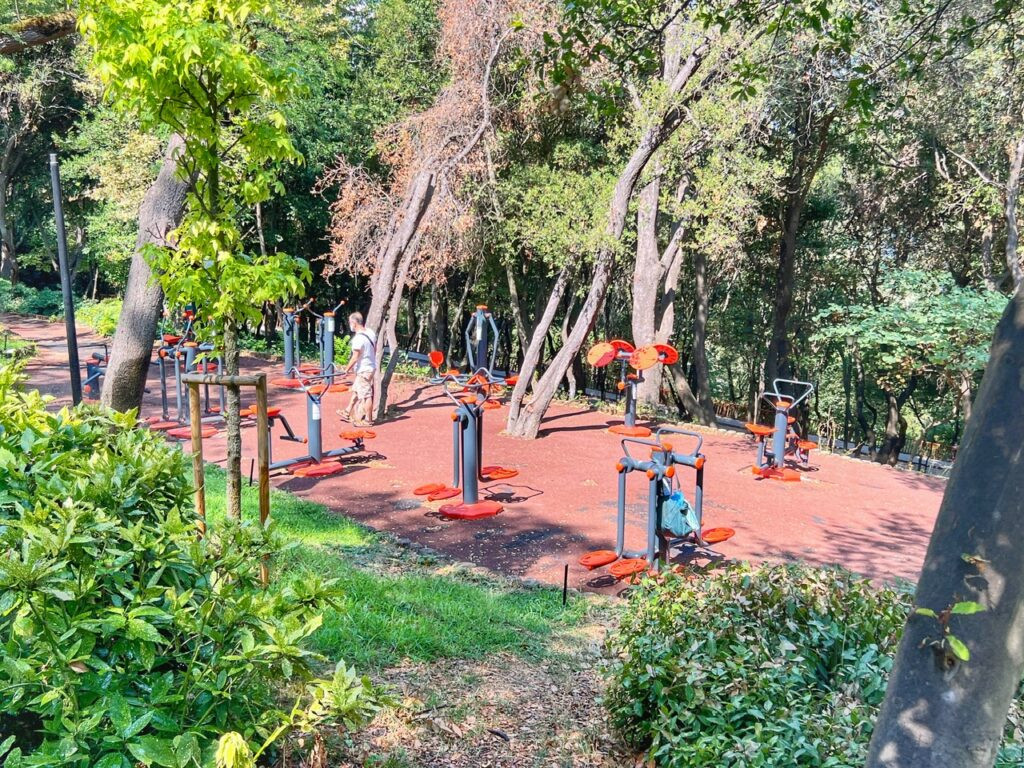
After washing down our doners with the ayran, we headed to Fethi Pasa Korusu Park, a pleasantly forested hill with only a few locals walking their dogs, and a terrific outdoor exercise equipment selection for working off any meat sweats.
Into the Heart of Kadikoy
We wrapped our brief stay in Istanbul in the heart of Kadikoy before heading to an airport hotel to embark on our next adventure. This liberal and vibrant neighborhood, on the Asian side of the city, is hard not to fall for with its diversity, abundant activity, seaside strolls, vivacious street art, obvious affinity for cats, to-die-for desserts, and ample eating and drinking opportunities, some “cheap” by current Istanbul standards.
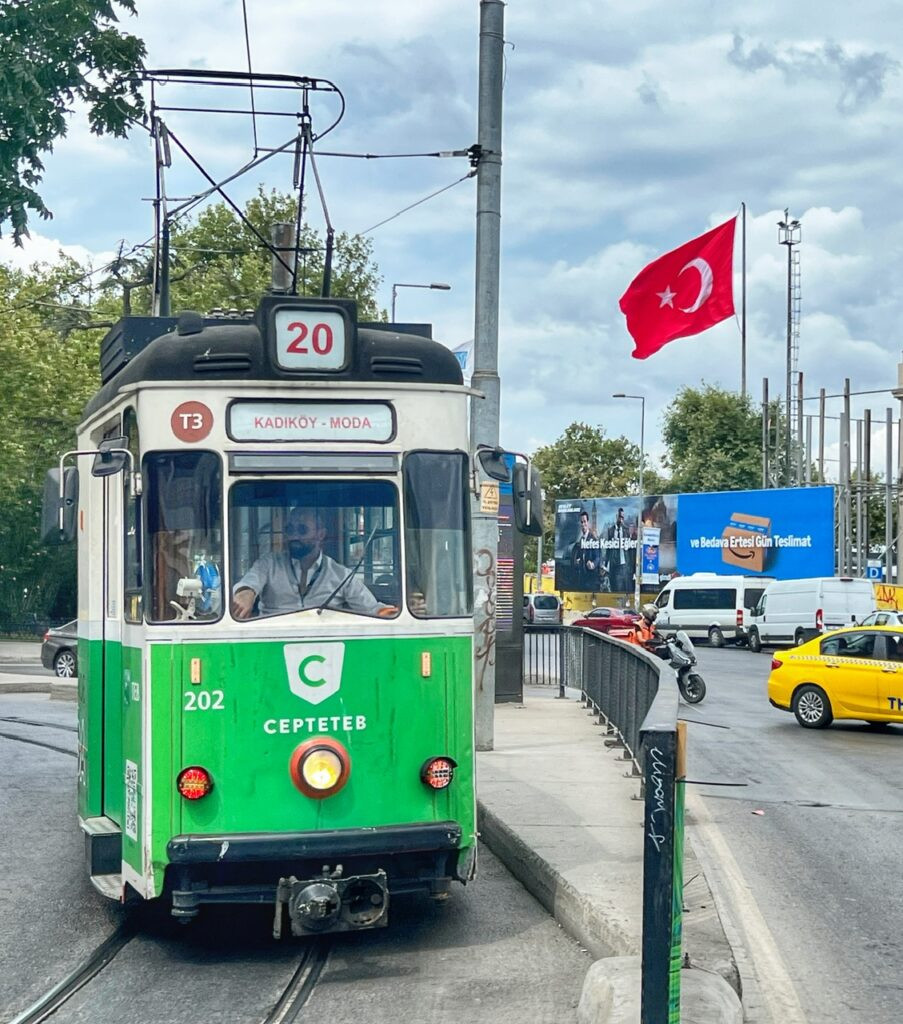
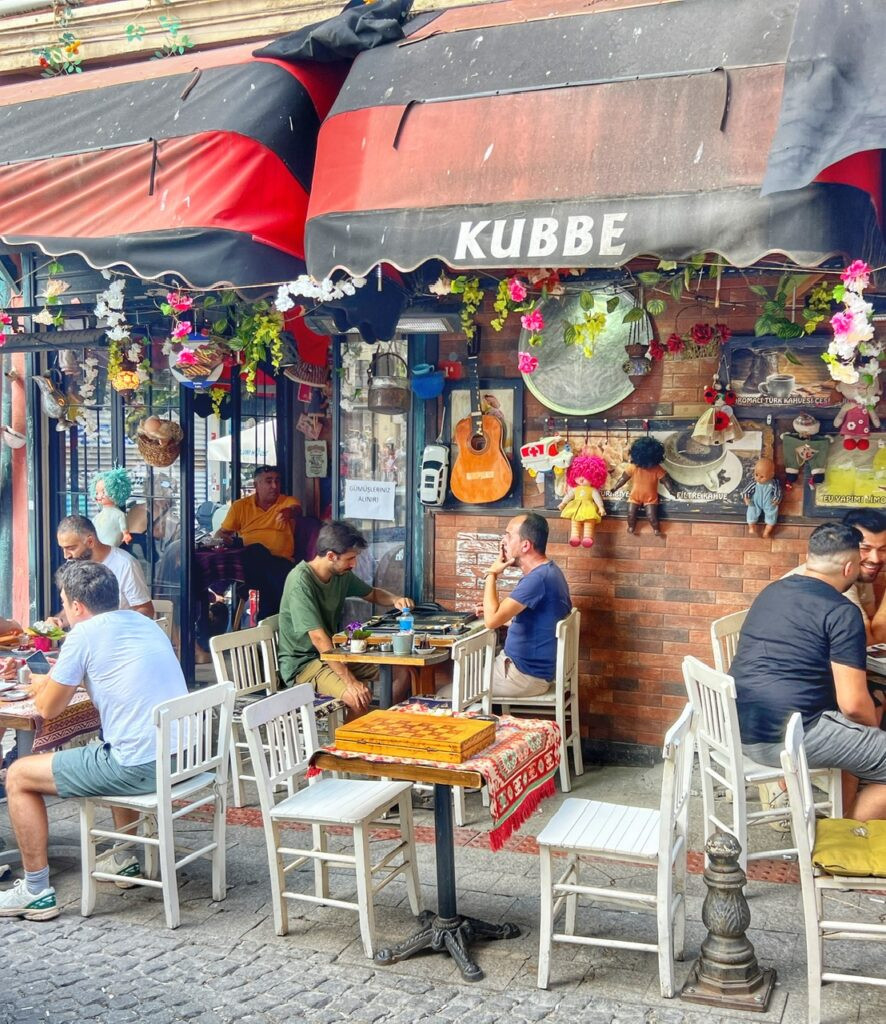
Although the area is undeniably walkable, it’s hard to resist the charm of the historic trolleys that chug down Moda Street, the hip and residential core of the neighborhood.
Within Kadikoy, it’s common to find multiple local cafes with locals intensely contemplating their next Backgammon move, or Tavla, as it’s known in Turkish culture. Losing often involves a playful “penalty” like buying the next tea round.
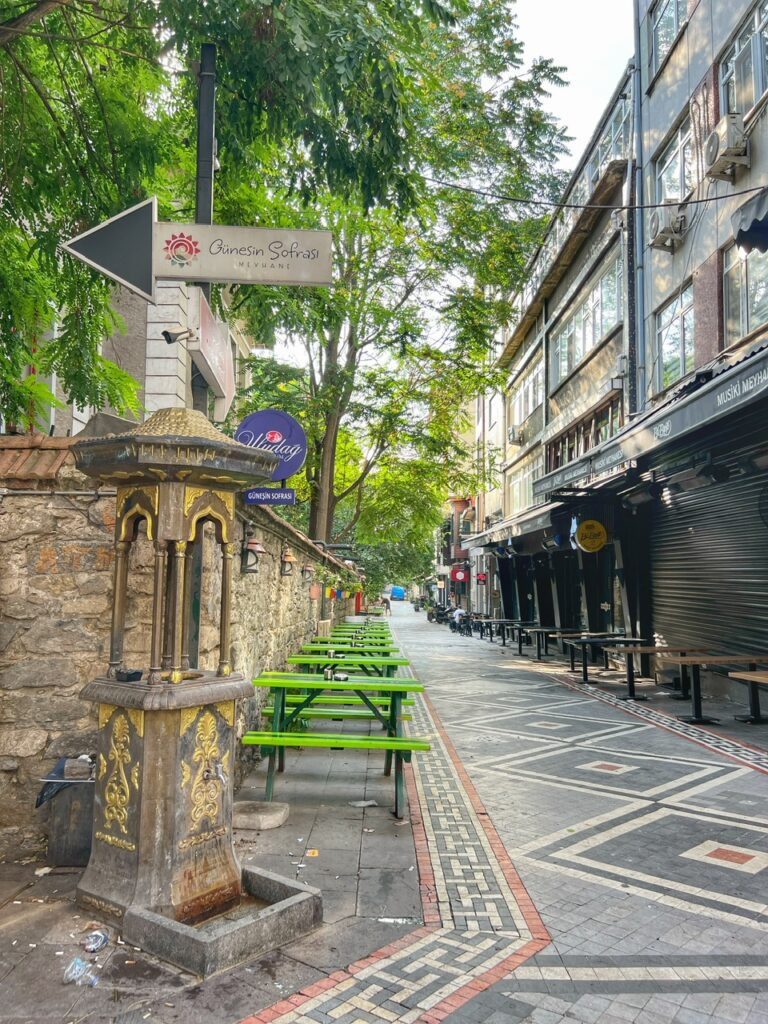
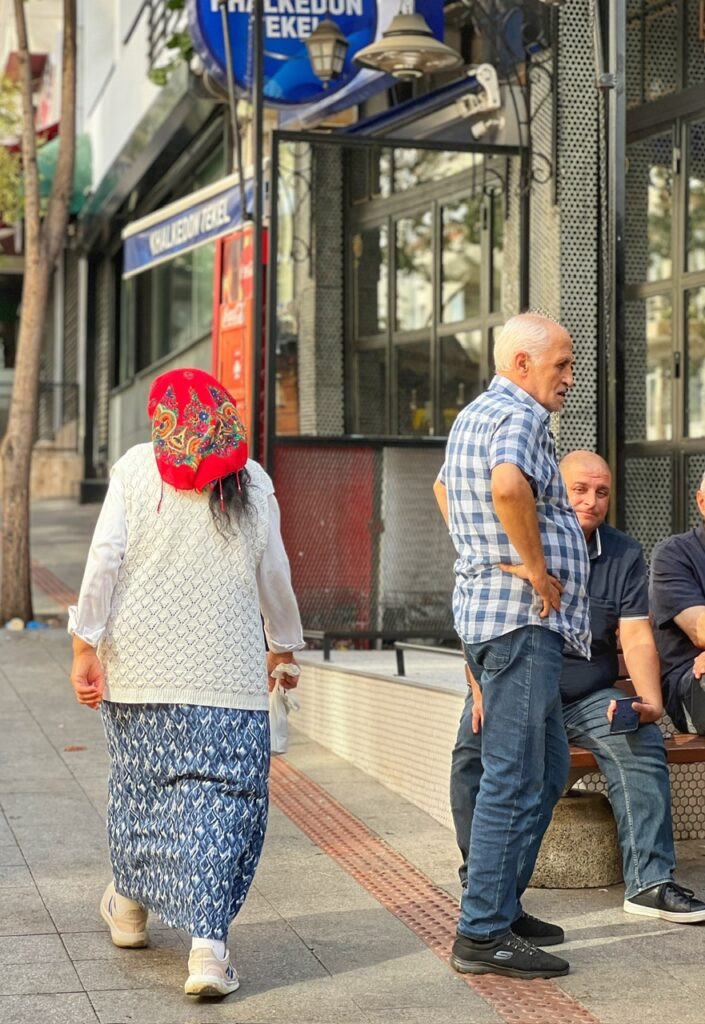
A quiet Sunday stroll through the heart of the bar and restaurant zone…the part that has been tided up. Meanwhile, locals enjoy their early morning too.
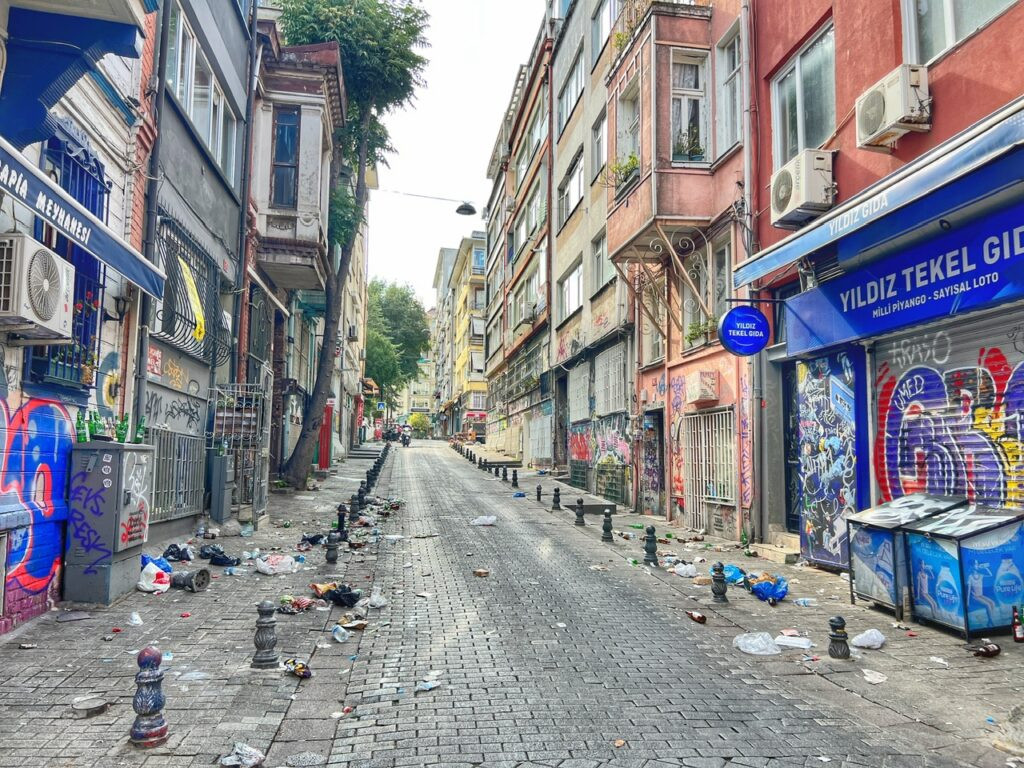
If you type the word “beer” into Google Maps, in Asian Istanbul you’ll find it’s all concentrated in a 10-block radius within the neighborhood. This is always where the only Airbnbs reside, as well as around Taksim Square. This is the cyclone we also found on Sunday morning that those self indulgent sinners left behind.
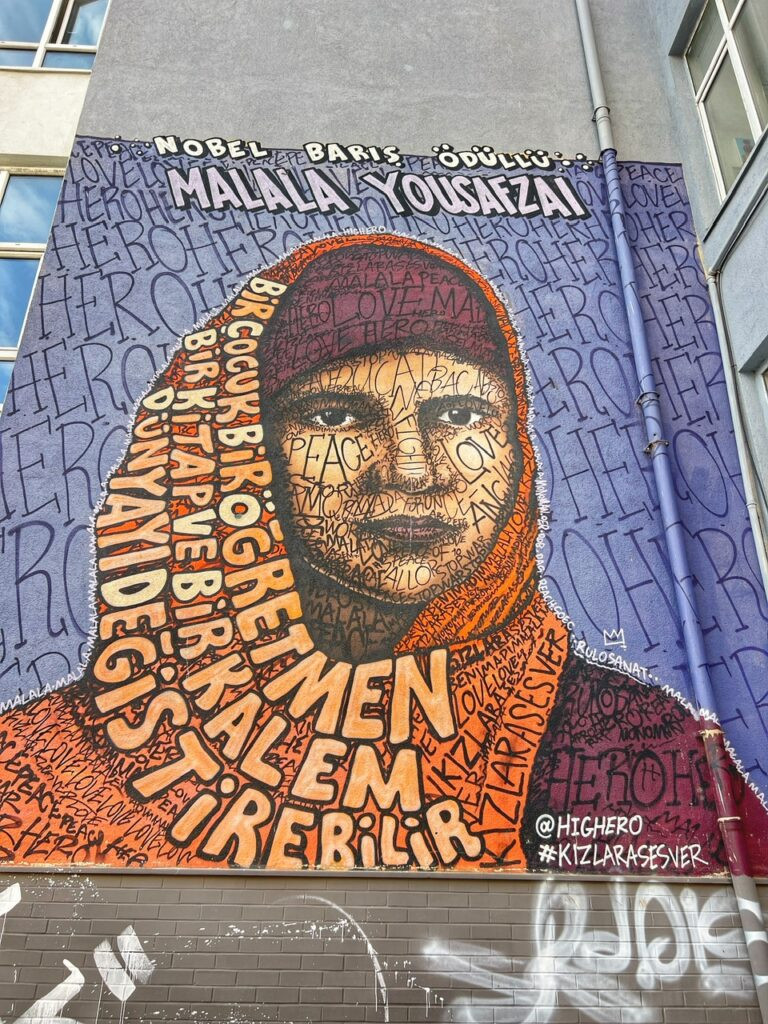
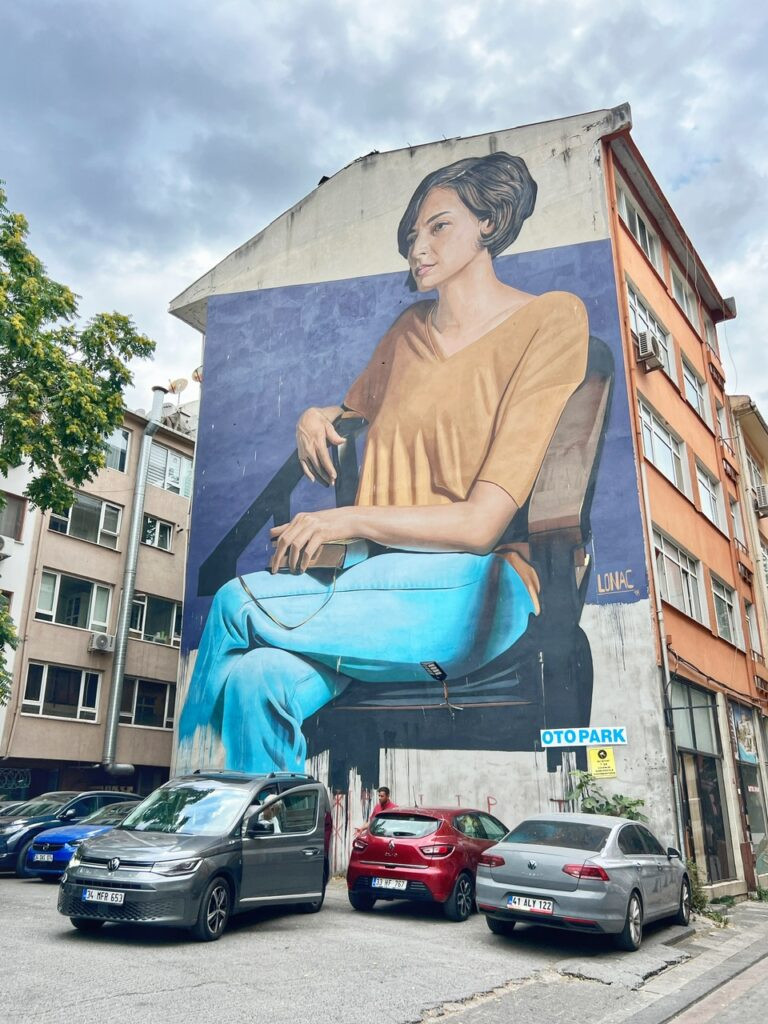
Eye-catching street art abounds the neighborhood…including a large mural dedicated to Malala Yousafzai, a Pakistani human rights advocated and the youngest-ever Nobel Peace Prize winner. At age 17 she was internationally recognized for her courageous fight for girl’s education in the face of Taliban oppression.
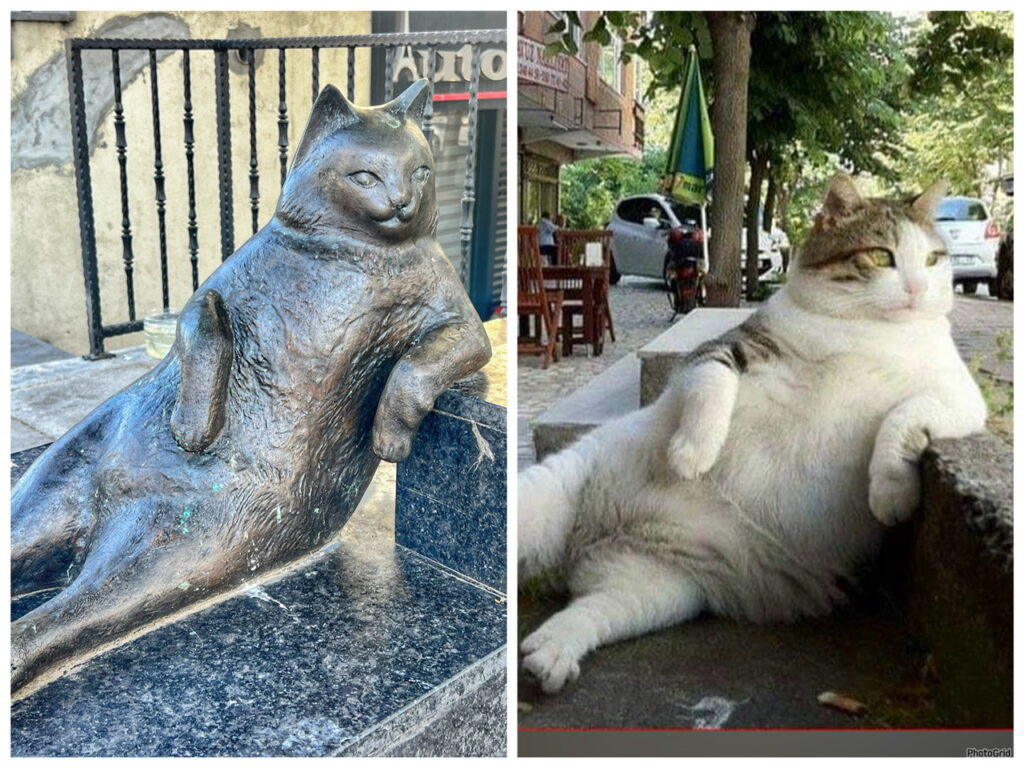
We couldn’t stay in Kat-ikoy, as it is affectionately known, without paying respects to the area’s most beloved kitty, Tombili. Tombili, who may have been a bit tubby due to the handfuls of kibble that got thrust at his cuteness, was renowned for his cool cattitude, which he fine tuned everyday on these steps. Sadly, he passed away in 2016, but the community passed the kitty and received 20,000 signatures and donations to raise a shrine in his honor.
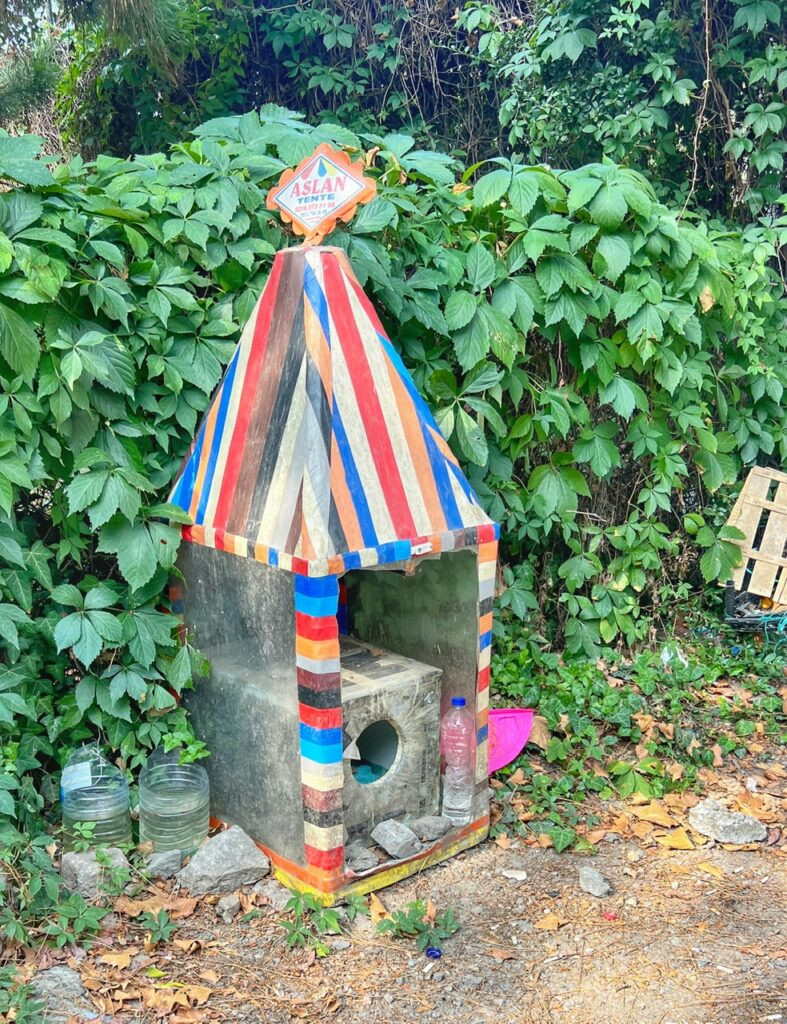
Speaking of Shrine…this particular catcommodation must have been made for the cat circus.
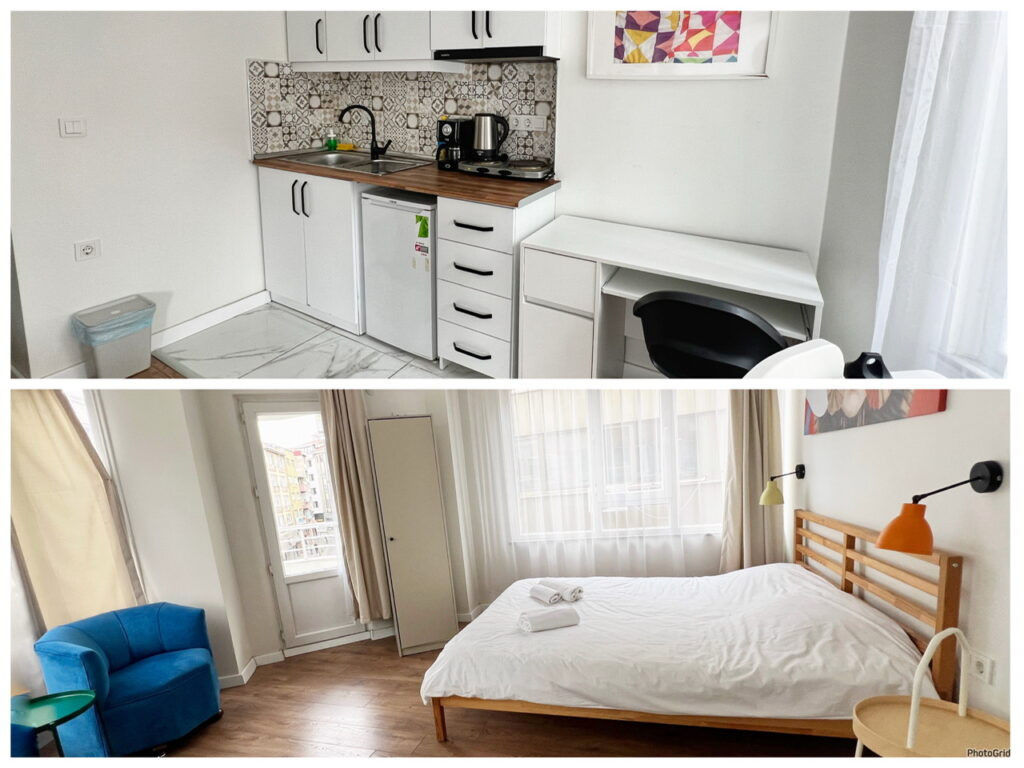
Our Airbnb in Kadikoy maxed out our daily budget with flying colors at $51/night for a very modest studio.
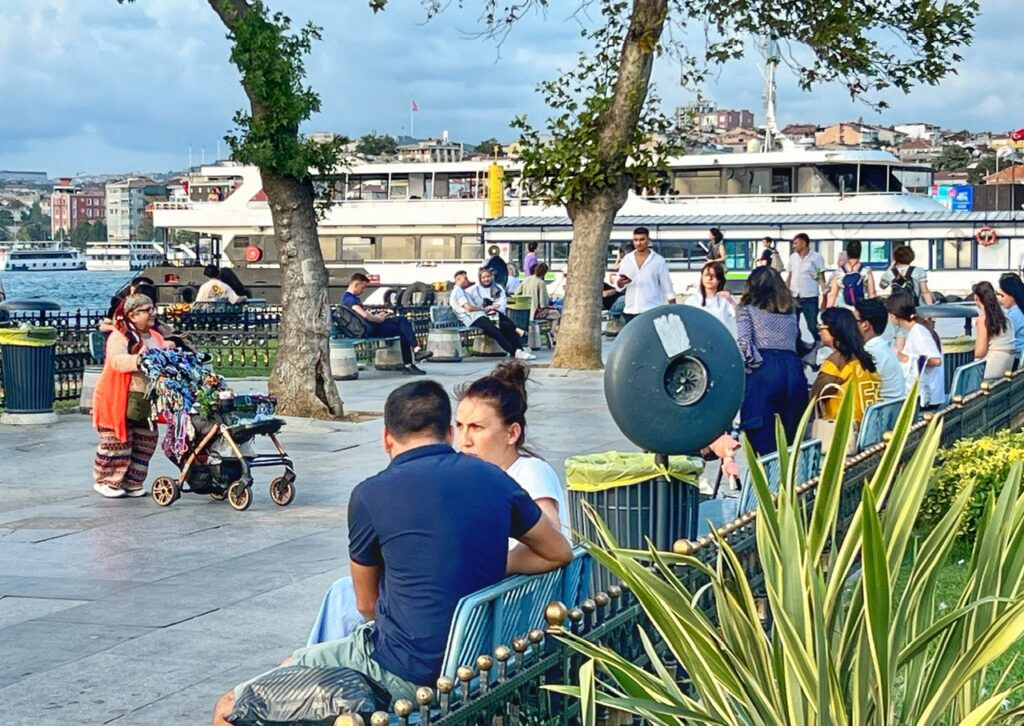
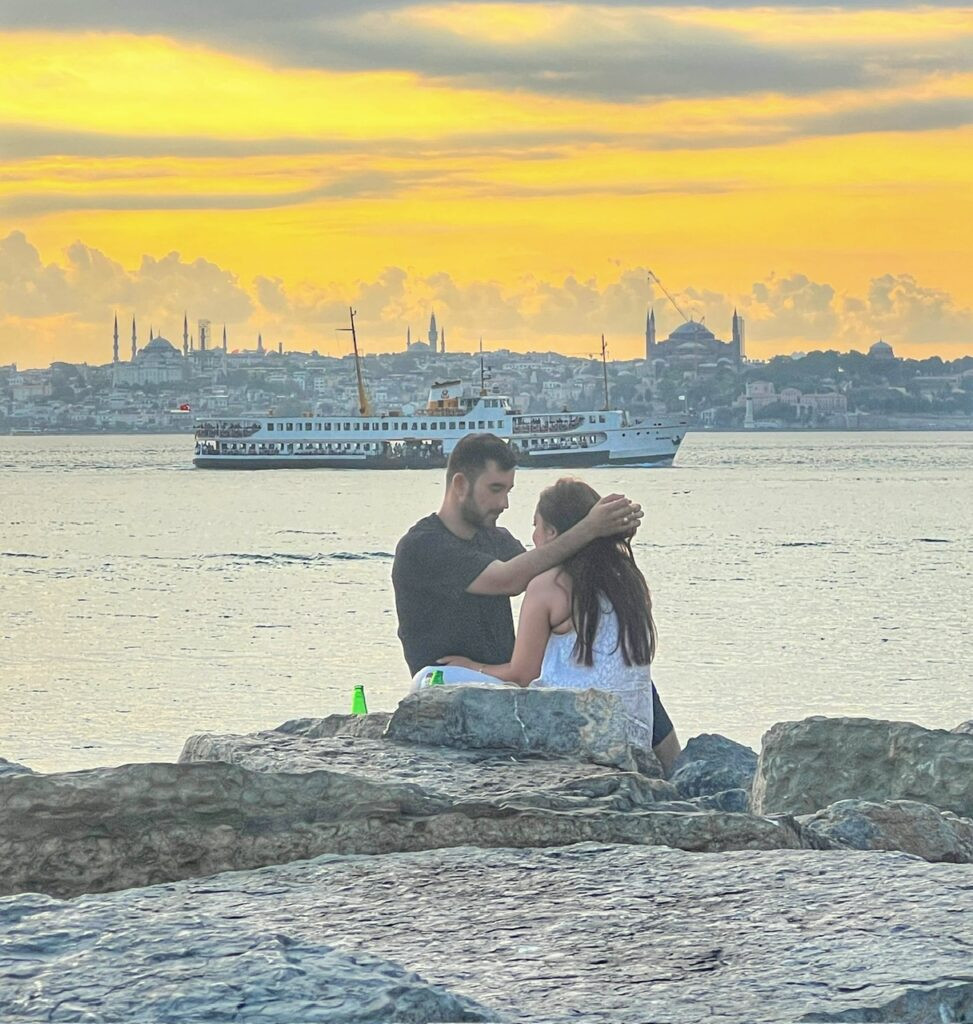
A bustling evening along the Bosphorus waterfront, and a couple canoodling at sunset
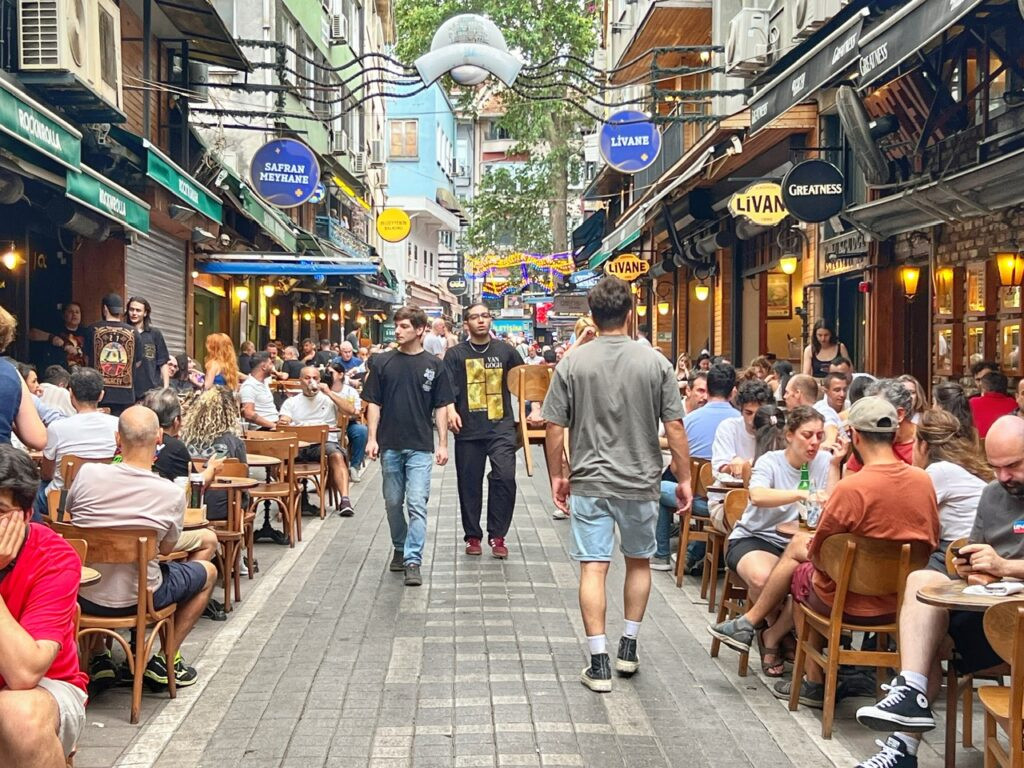
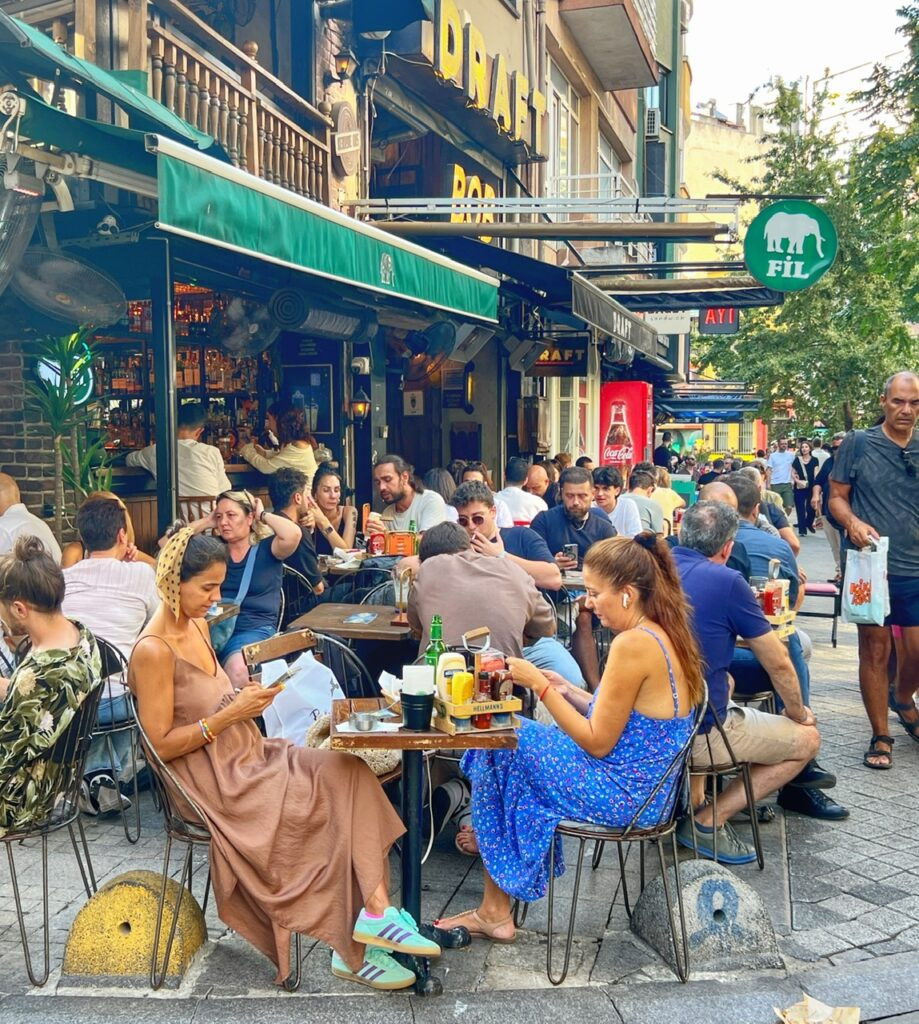
Saturday night begins in Istanbul’s hedonistic core…a polar U-turn between our evenings in conservative Fatih across the Bosphorus. Inflation schminflation! It’s certainly not slowing down these party people! In fact, nearly every table was filled no matter where we roamed.
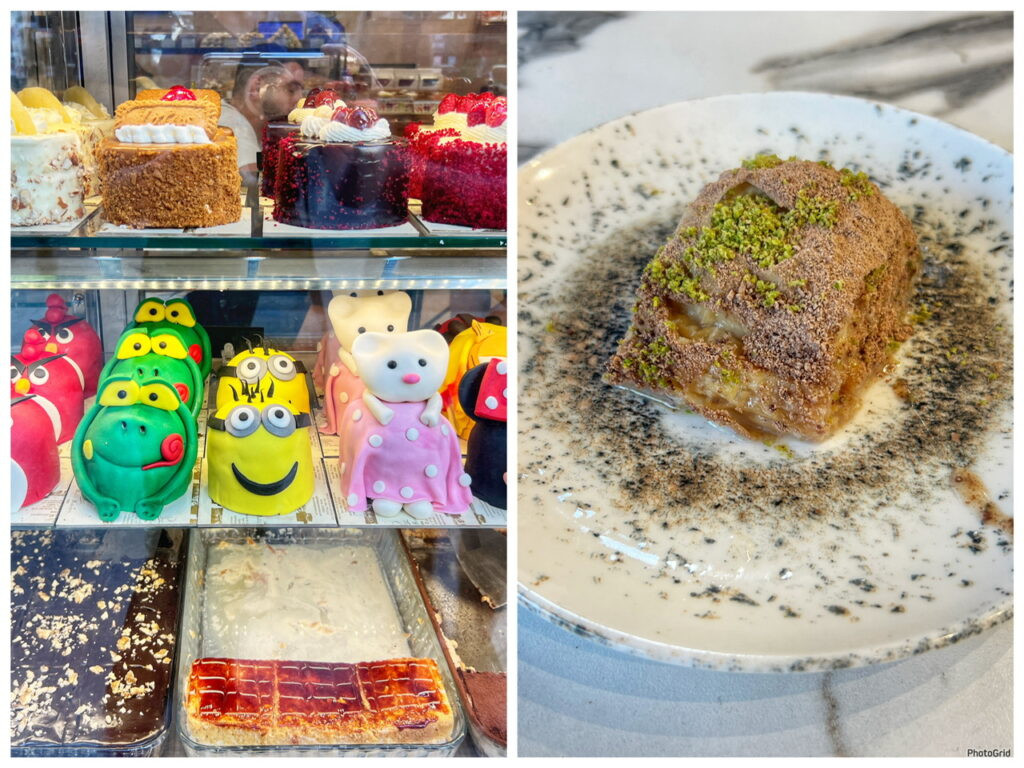
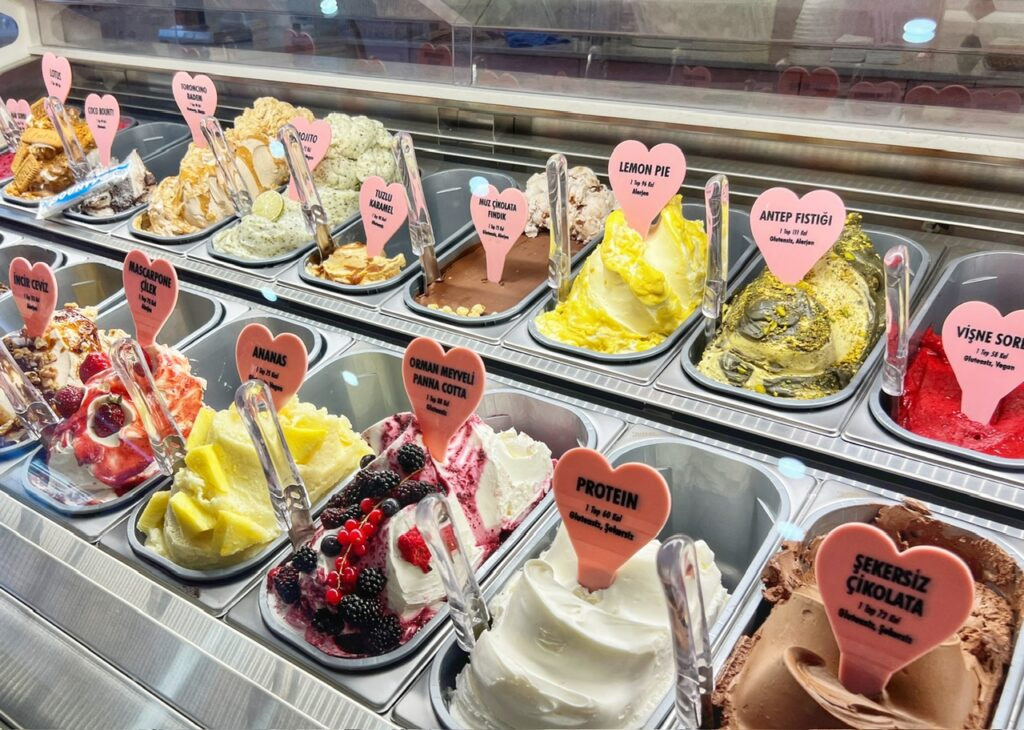
Alcohol, nor staying out all night, was happening for us in expensive Istanbul, so we instead gravitated to the other kind of sin…the enticing dessert counters. We settled for a minuscule piece of cold milk baklava… ($2.21) and a scoop of brownie gelato ($3.20). As your eyes float over the flavors, make sure to note one of them is called “Protein.” 🤣
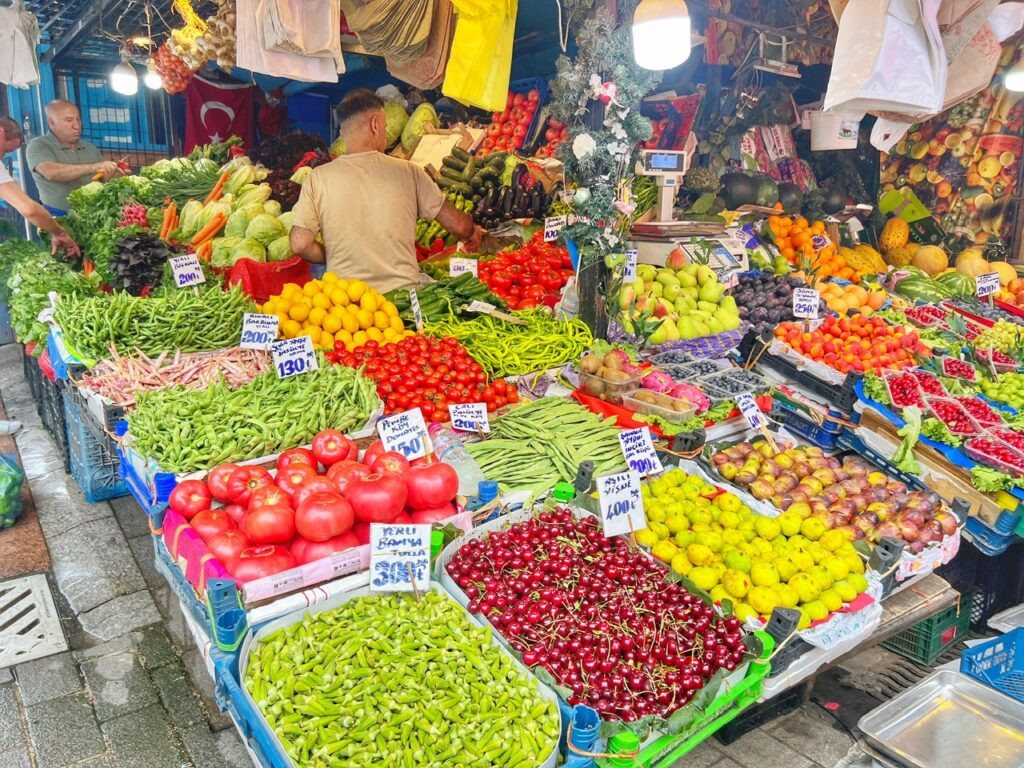
The Kadikoy Produce Market…which disappointedly is actually only a few…very overpriced…fruit stands. After paying about $1.50 for a very small bunch of spinach, we bought the rest of our produce at the Migros Supermarket, which is probably the best selection in the area.
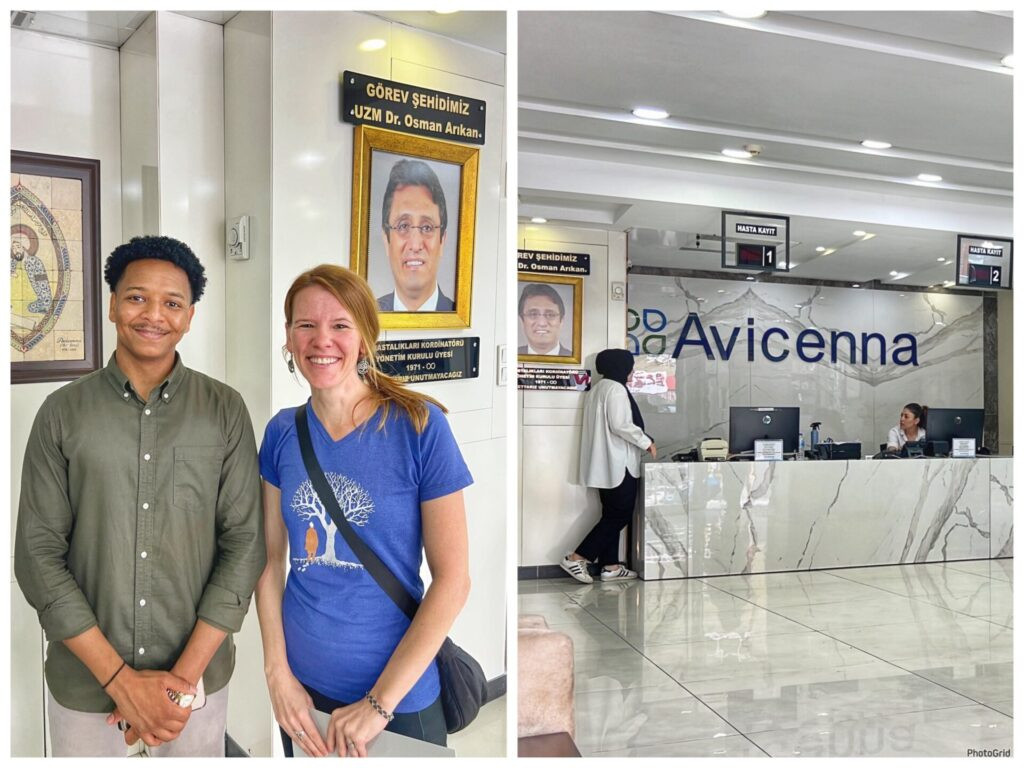
Also while in Kadikoy, Mandy scheduled her annual ta-ta squishing at Avicenna International Hospital for $140. This is the second time we’ve used their facilities for medical care, and although it’s a bit spendy compared with other cities, the service is outstanding, including your own personal translator and chaperone to whisk you around.
Ours was named “John,” and he was the first person we’ve ever met from the country of Chad. He’s been living in Istanbul for 8 years and speaks four languages fluently…his native Arabic, as well as French, English and Turkish. What a sweet and brilliant kid. (Yes, we’re in our upper 40s, so now refer to people of this age as “KIDS.”) Anyhow, we hope he doesn’t lose his job to AI….
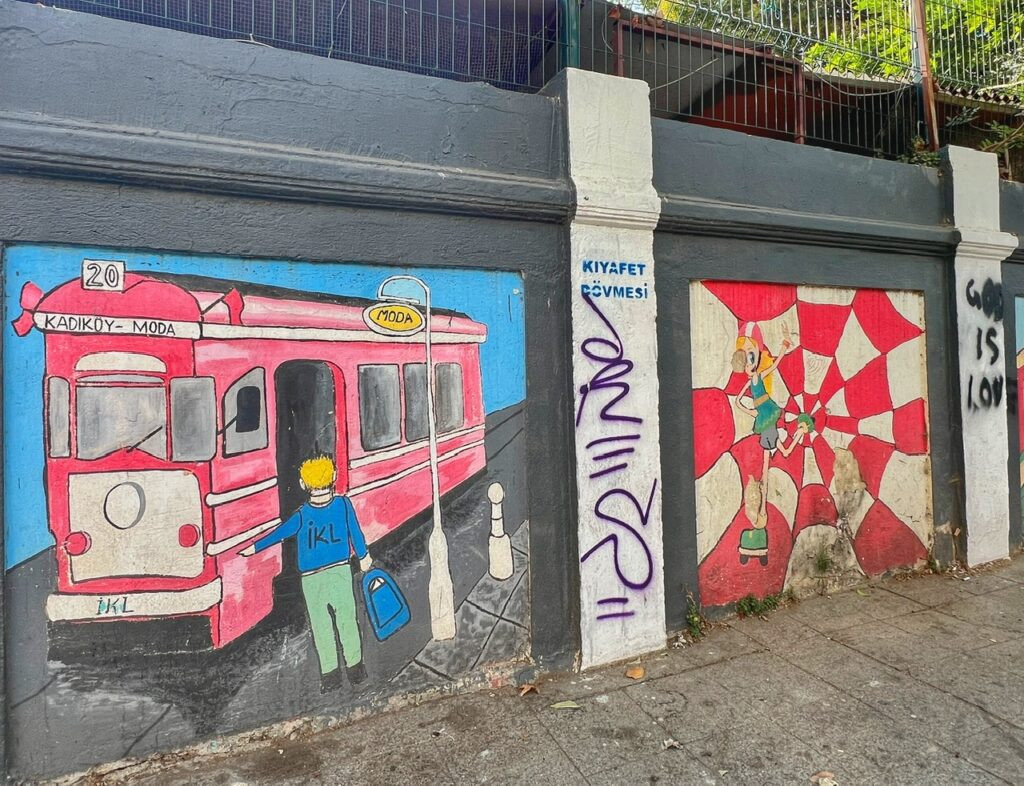
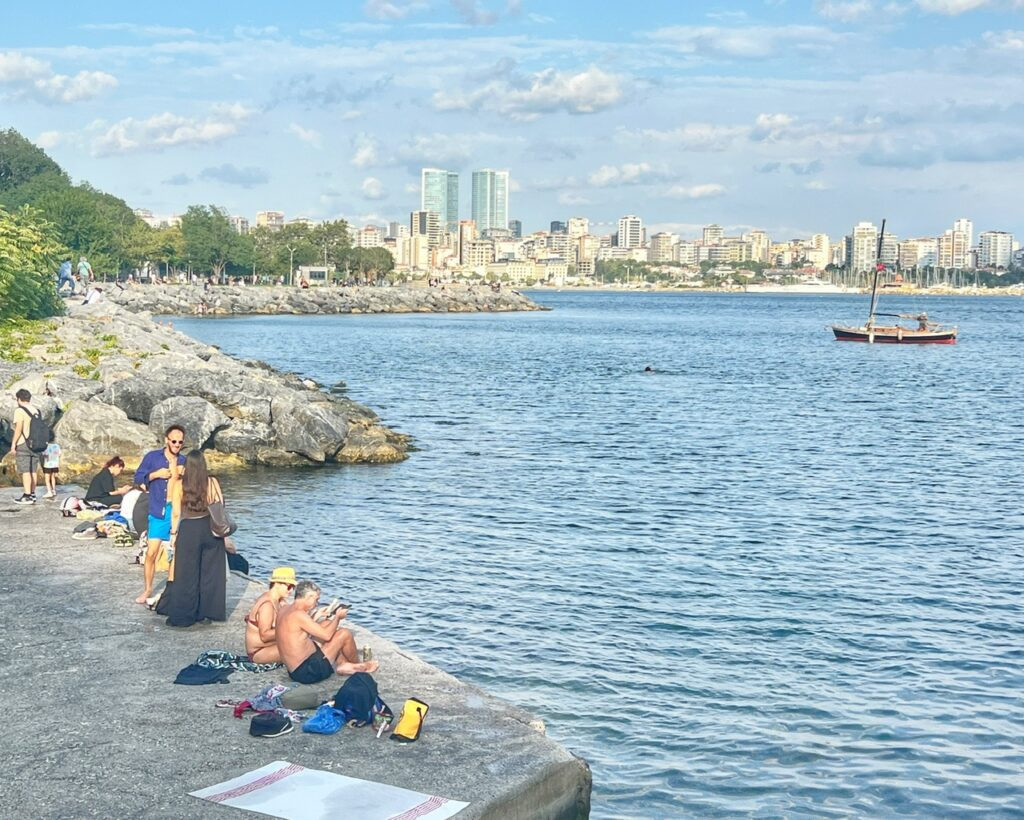
Back to the less invasive topics, here’s another kid getting onto the street car line. Also, arriving to the bottom of Kadikoy where you can find a viewpoint of the other…modern…side of Istanbul, as well as several locals plunging into the sea.
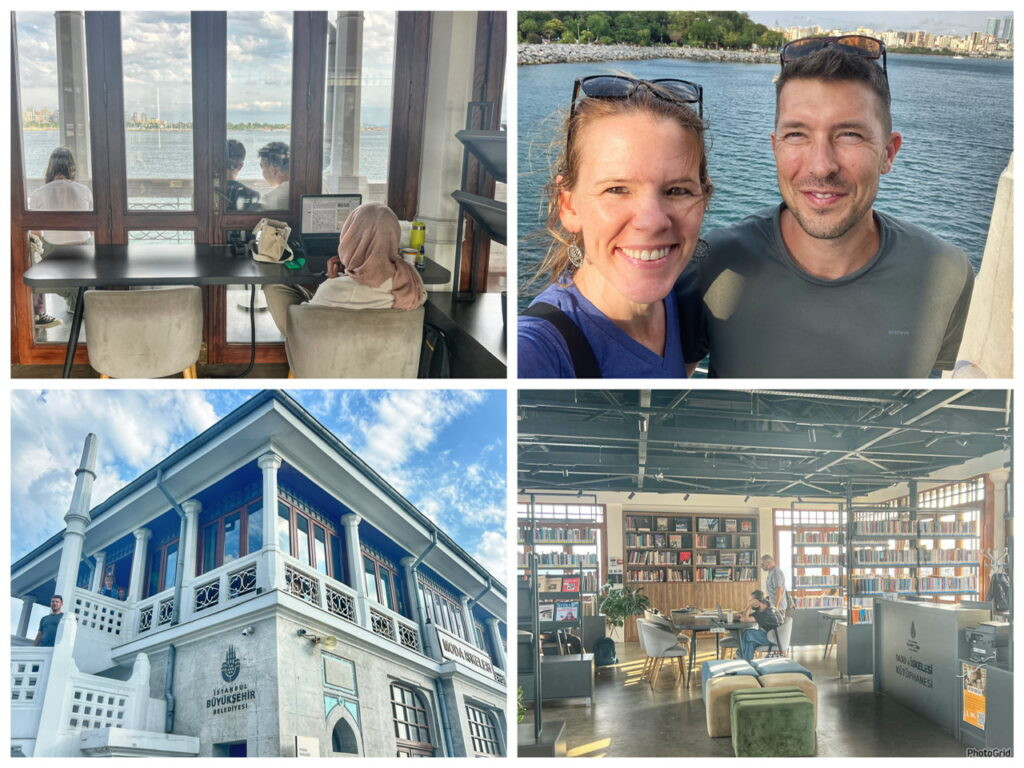
This is also where you can find the Moda Pier, which remarkably holds the coolest cafe and public library location we’ve ever seen, perched above the sea.
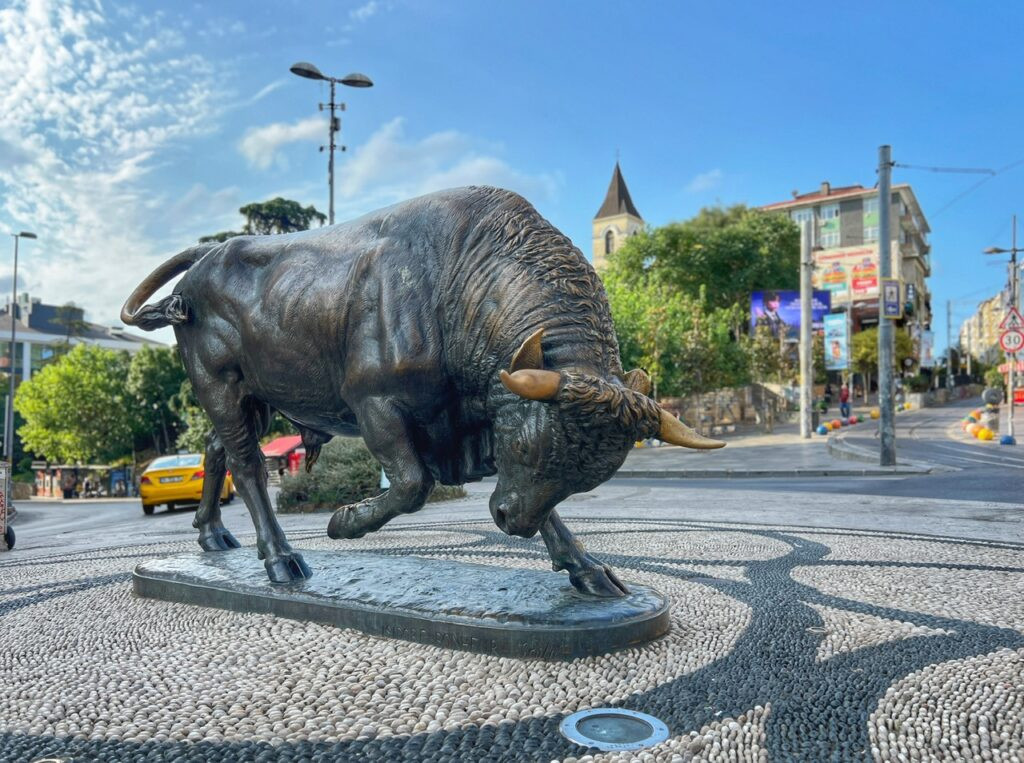
Due to Sultan Abdulaziz’s affection for animals, bronze and marble sculptures were ordered to decorate the gardens of Ciragan and Beylerbeyi Palace. This “Fighting Bull Sculpture” has moved around to many notable places throughout Istanbul, and now sits at a busy intersection in Kadikoy, now serving as primarily a kid’s jungle gym and Instagram station.
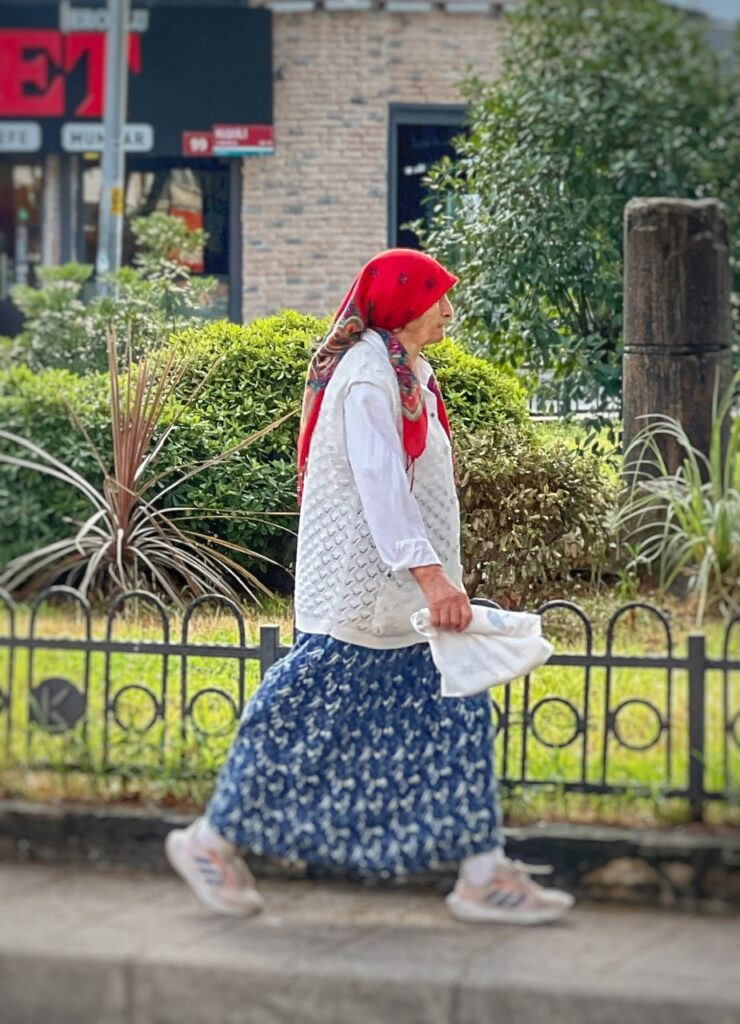
Another Sunday morning stroller.
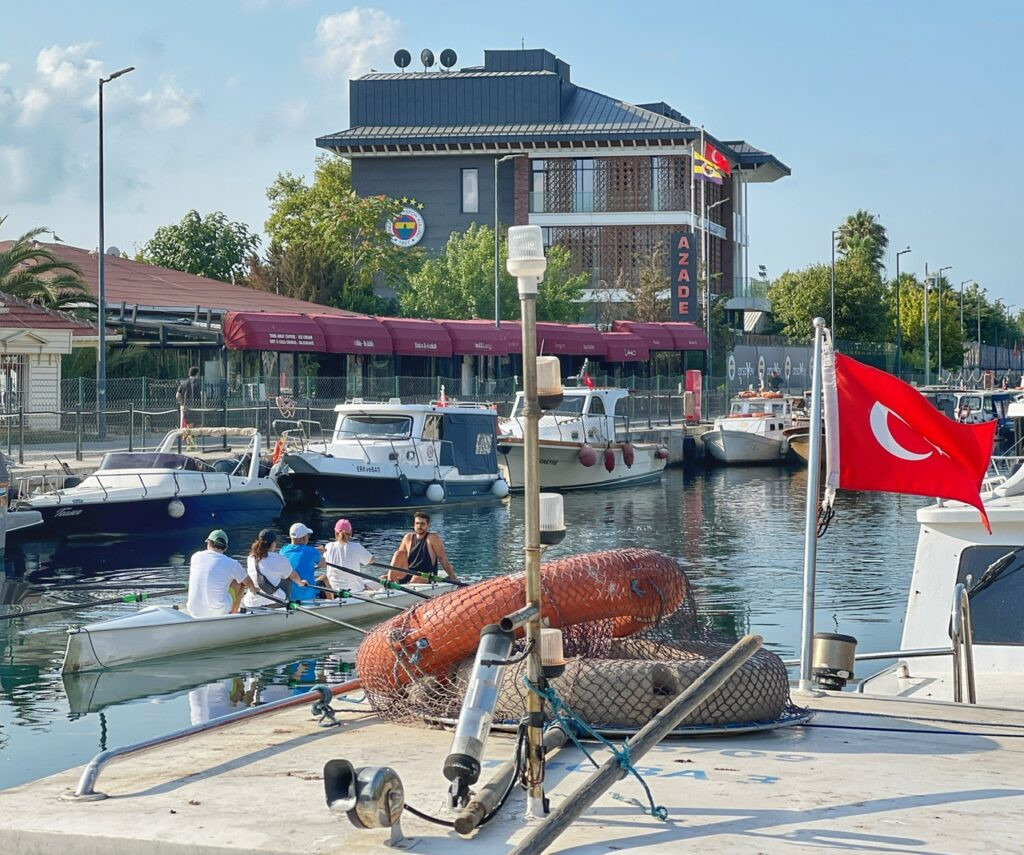
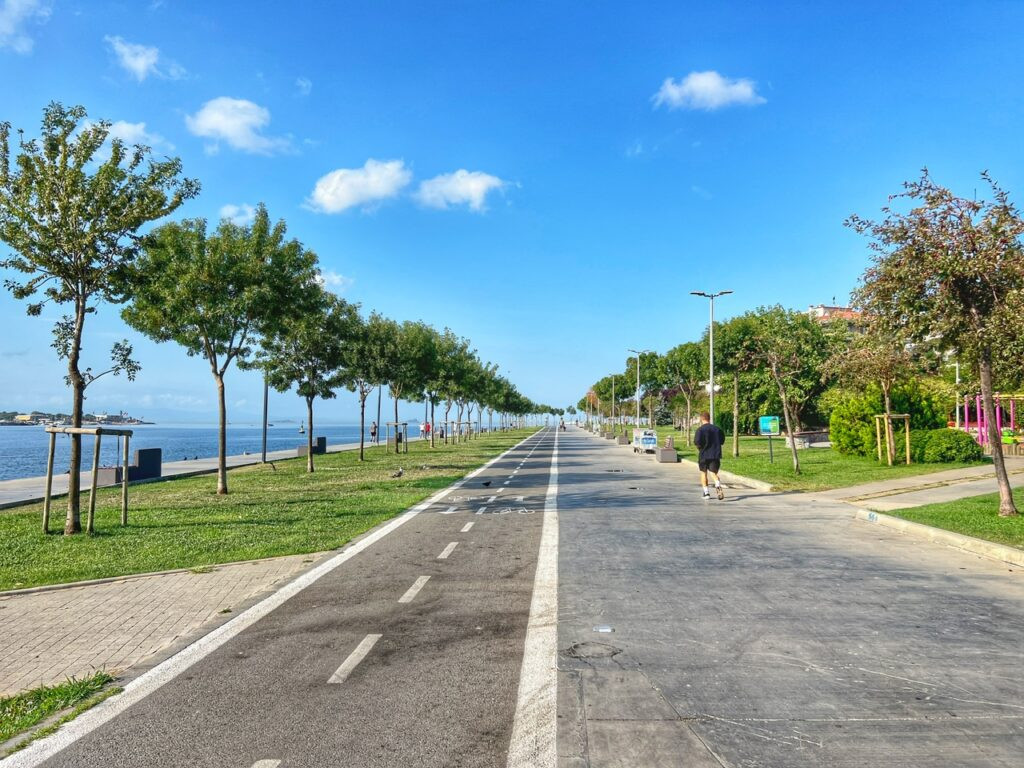
Early morning rowers heading onto the Bosphorus. It’s near the same walkway along the Bosphorus where Greg and I would exercise. Very few people were out in the mornings.
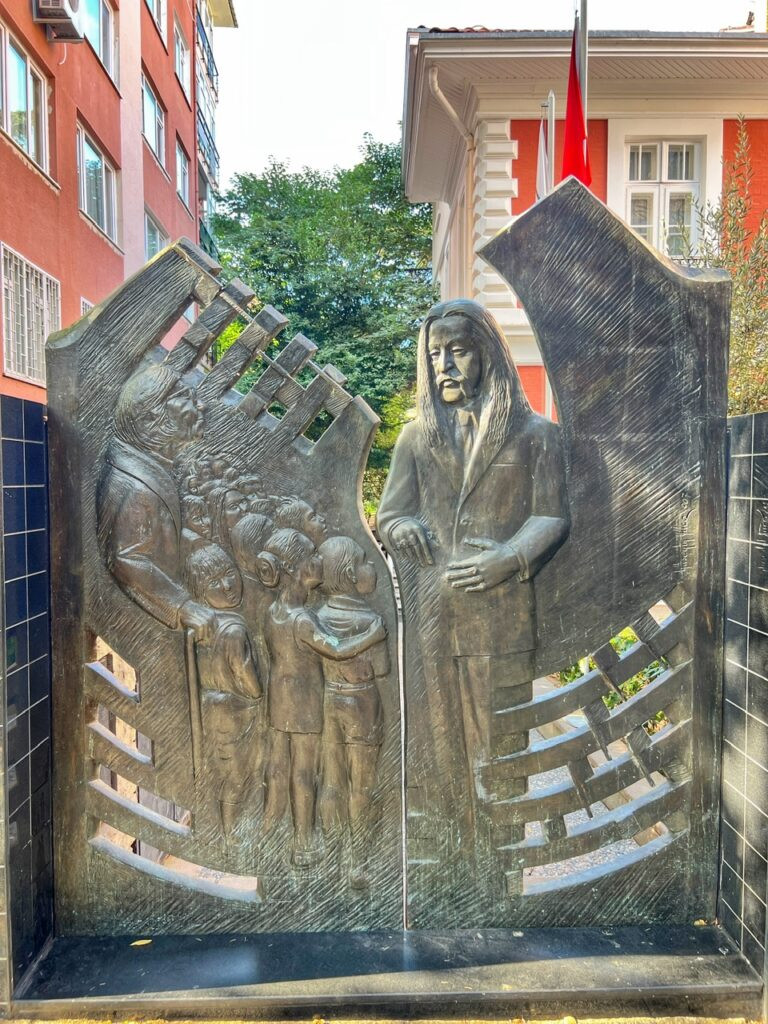
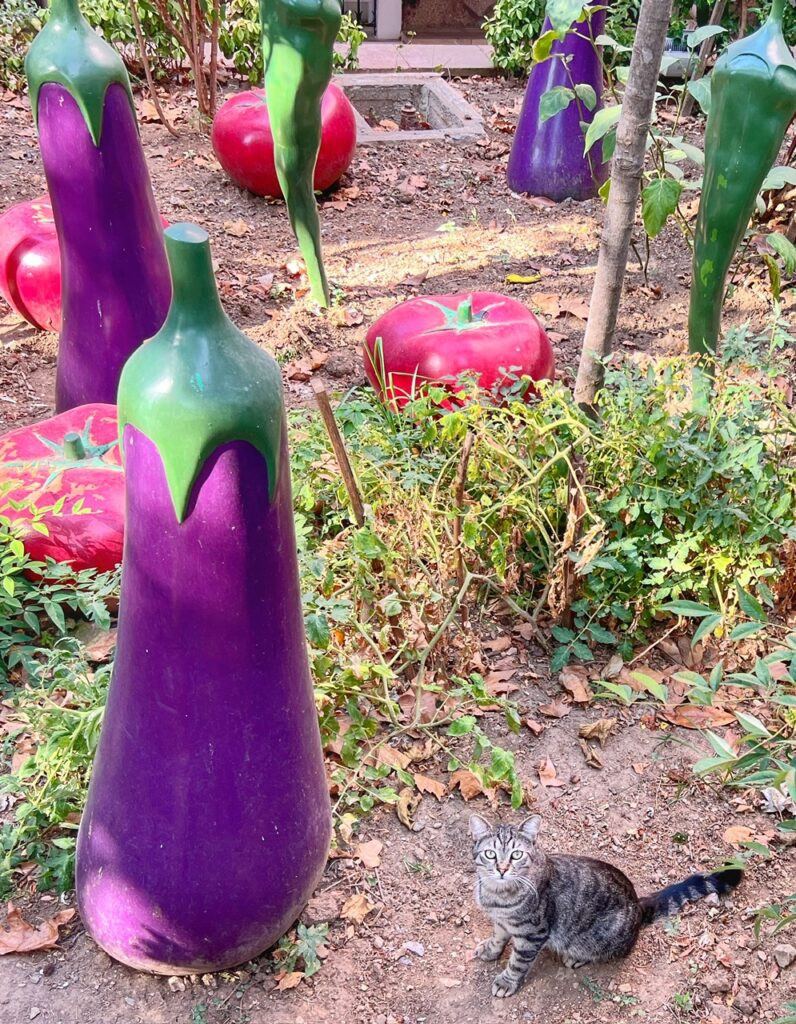
Look! It’s Willie Nelson!! Actually, it’s the entrance to the Baris Manco Museum, who was a legendary Turkish rock musician, TV personality and cultural icon and pioneer of Anatolian Rock, which is a fusion of traditional Turkish folk music and Western rock. And in their garden…Honey….I shrunk the cat.
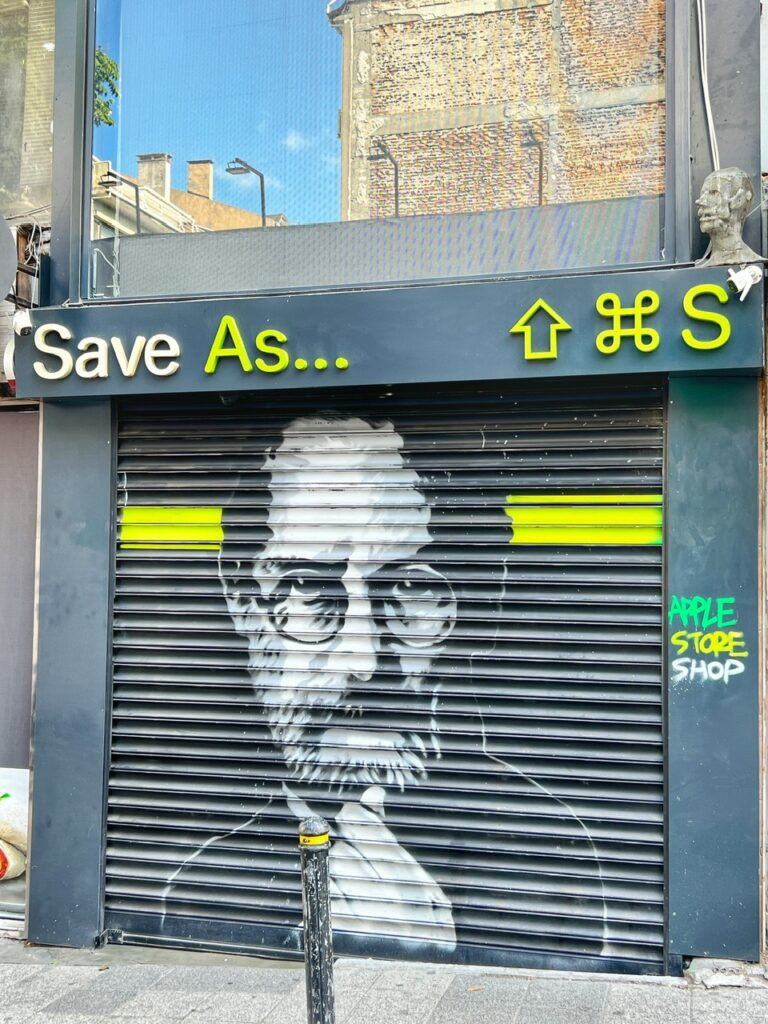
Another cultural icon who has found his presence in Kadikoy.
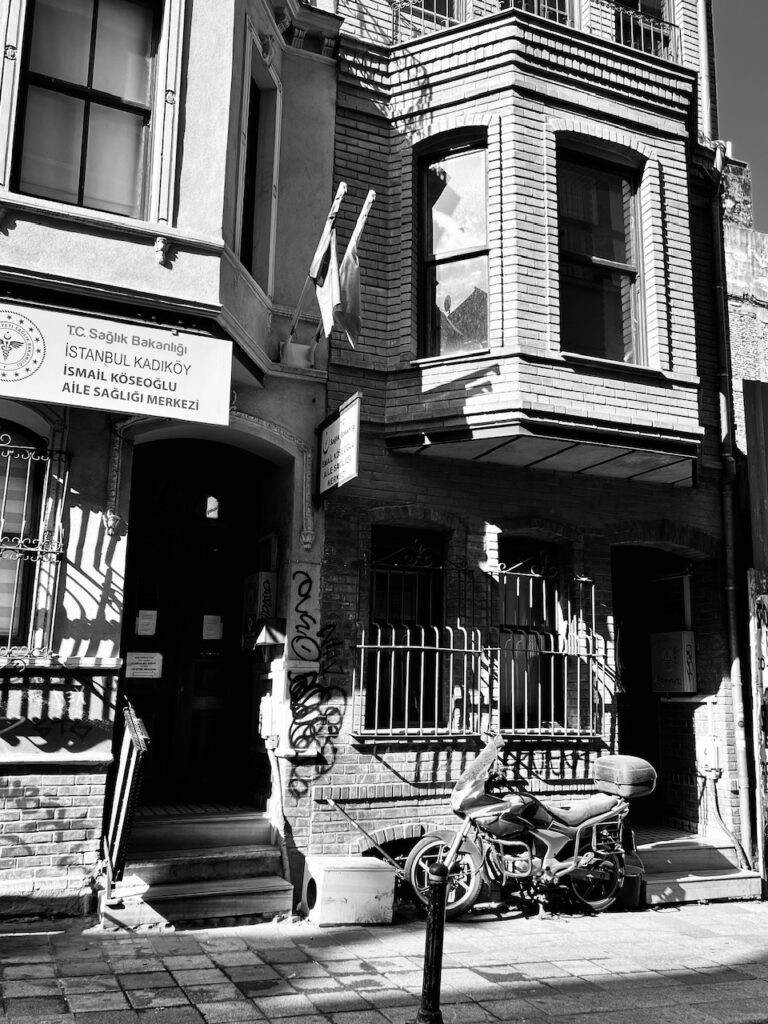
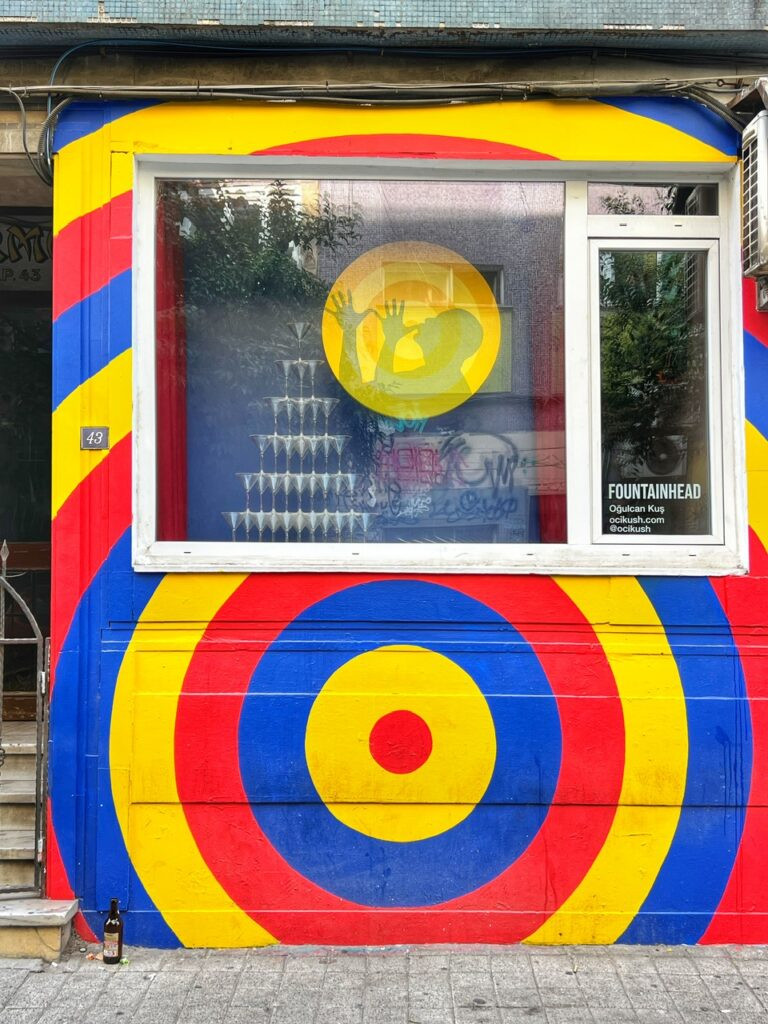
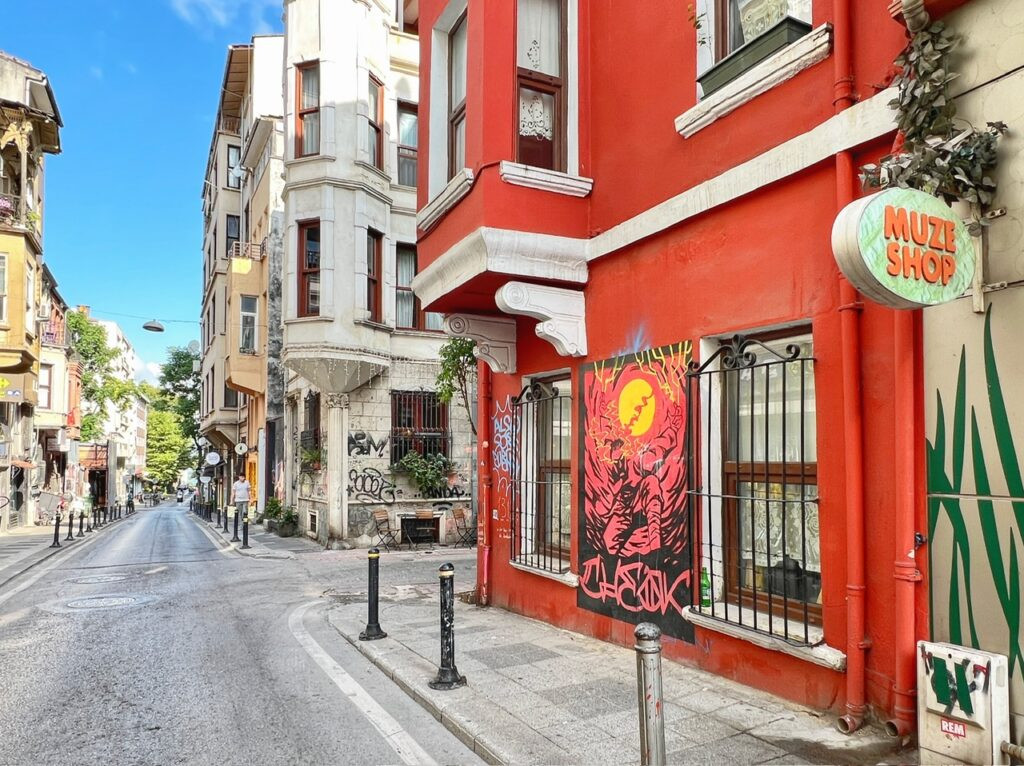
Scenes of Sunday morning continues…
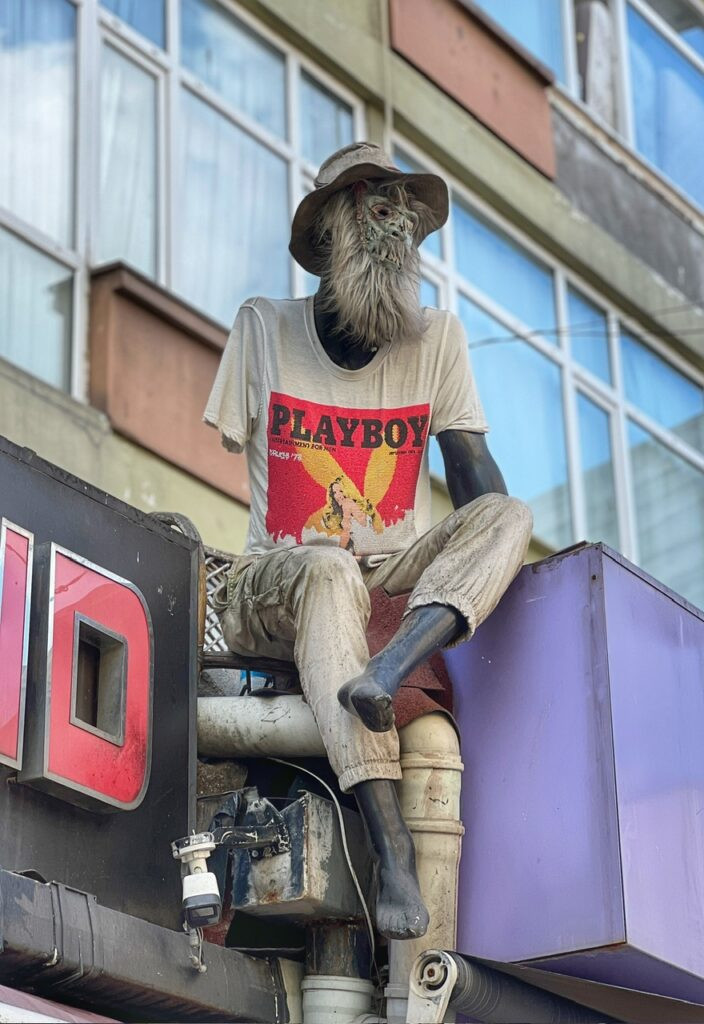
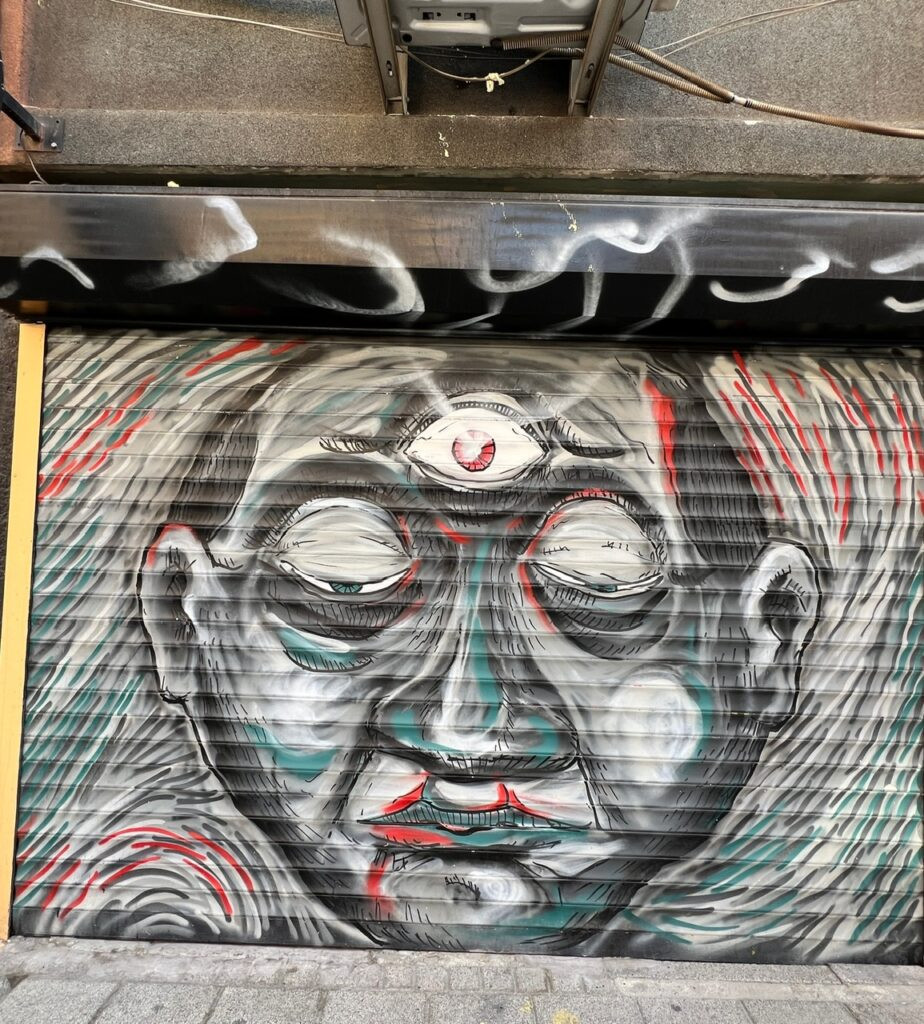
This guy definitely had a hard Saturday night.
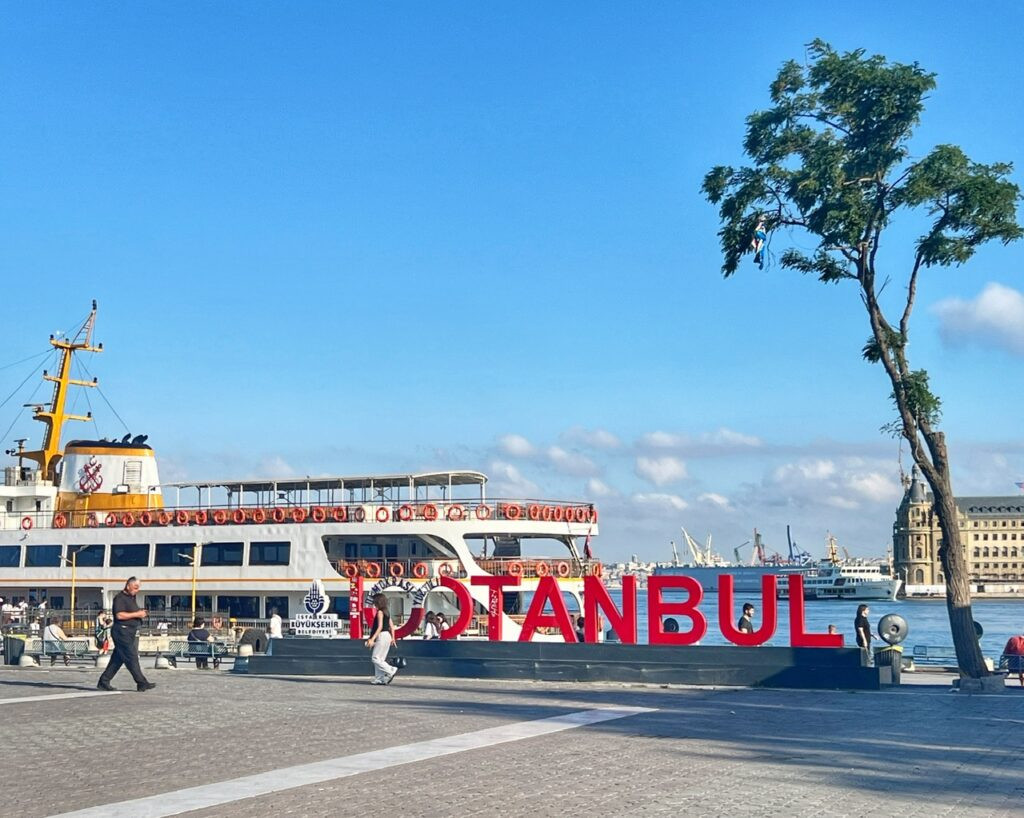
This city is hard not to adore.
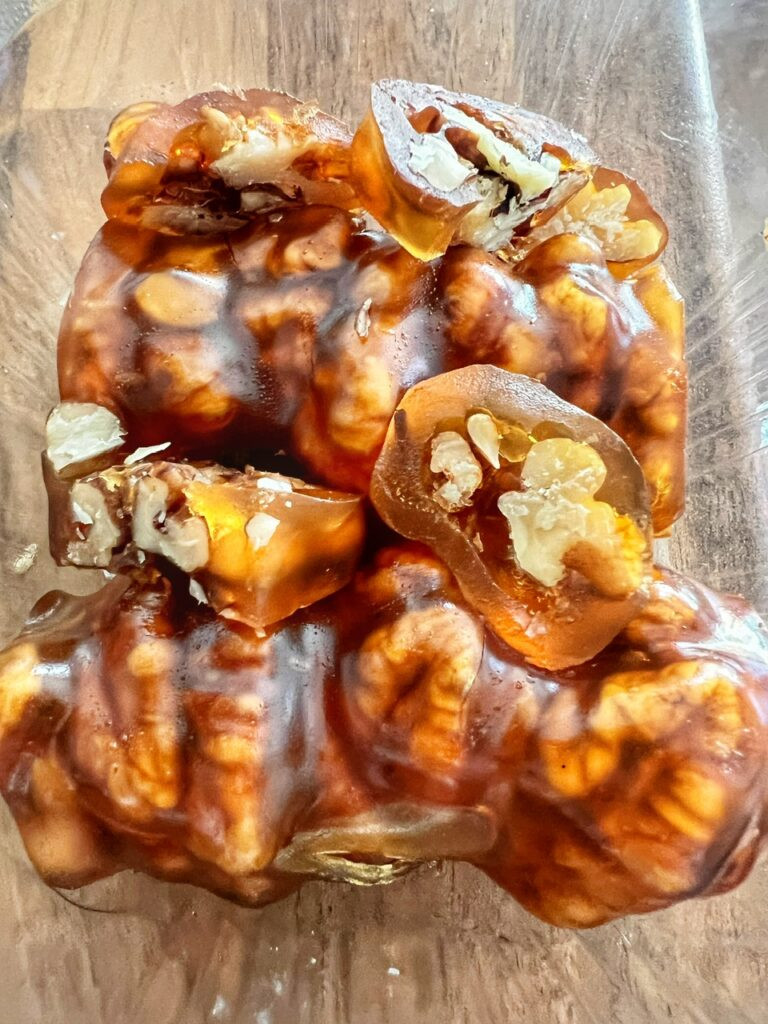
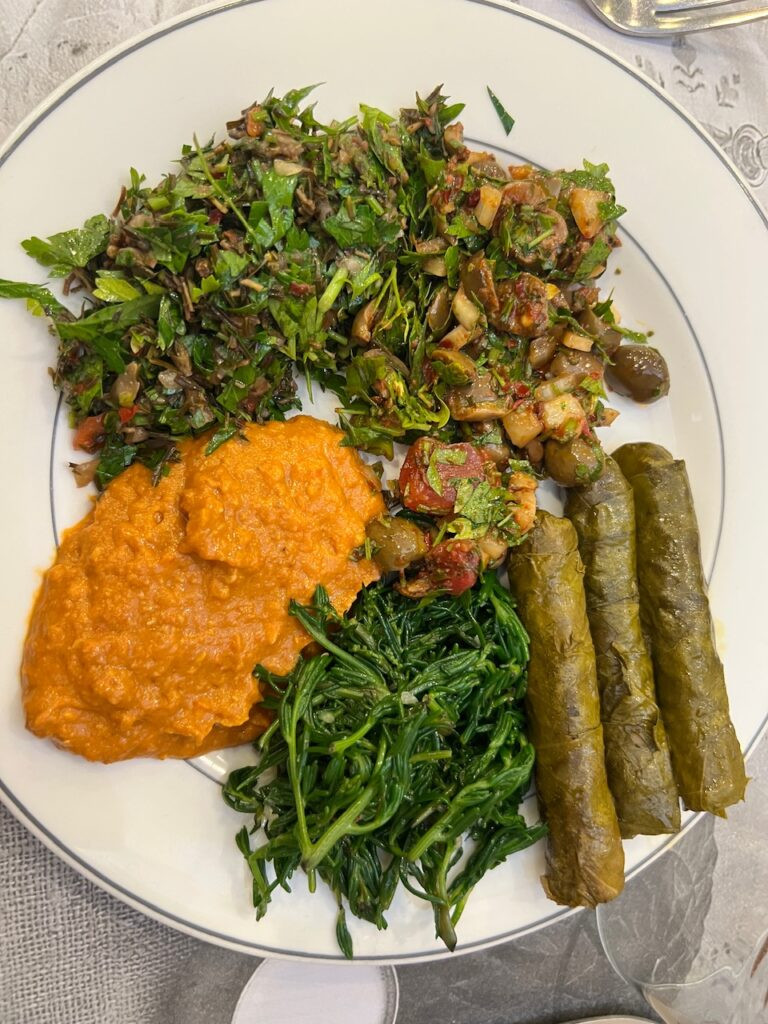
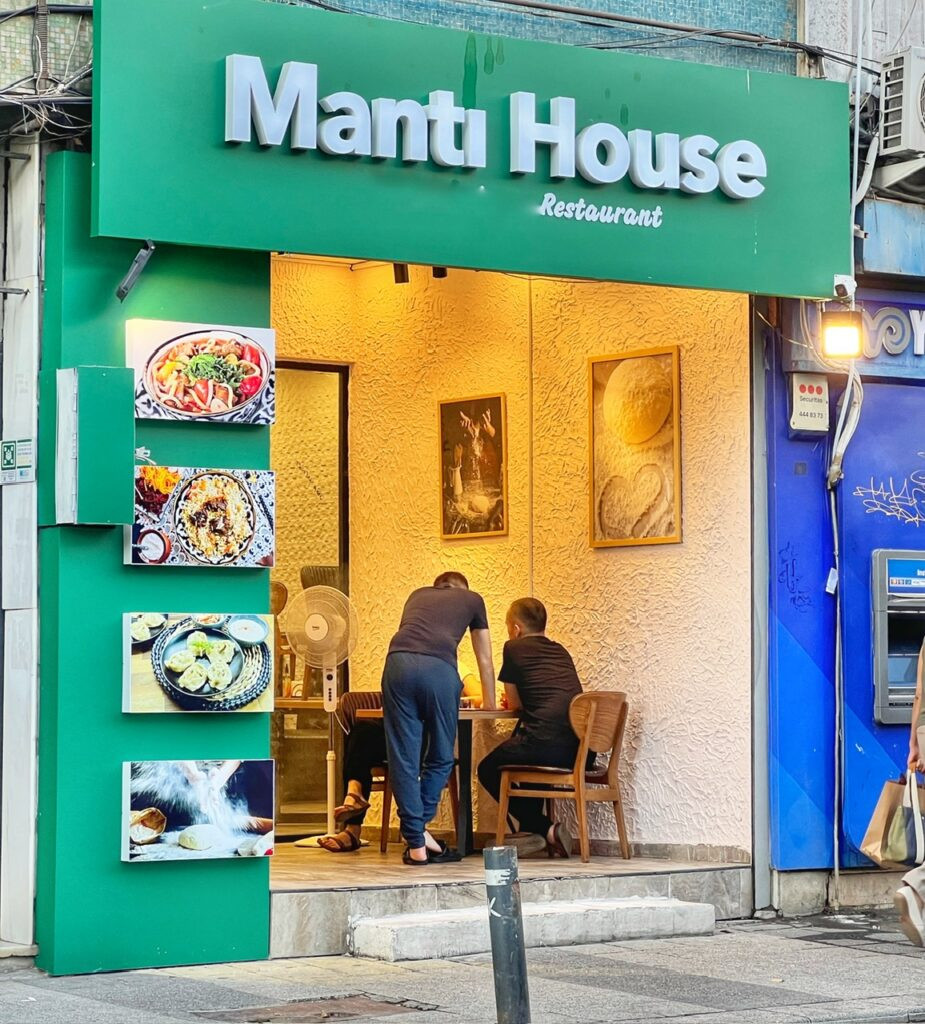
We were elated to find one of our favorite treats…churchkhela..the Georgian name for their version of “Snickers.” This sweet is made by dipping strings of walnuts into a thickened grape juice mixture and drying them into healthy and chewy, sausage-resembling snacks. Yum!
Our last meal in Kadikoy took us to Ciya Sofrasi, a Turkish restaurant in central Kadikoy, which turned out to be our most expensive meal yet at $27. Although this extraordinarily delicious vegetarian plate was a reasonable $6.40, Greg’s “simple” lamb stew was a whopping $14. Our advice? Go, but head straight to the vegetarian side (on the right upon entry.)
We’re hoping we have vegetarian options in our next destination as well. It’s not exactly known for that. Curious where we’re off to next? Here’s a clue…venture to guess?!


